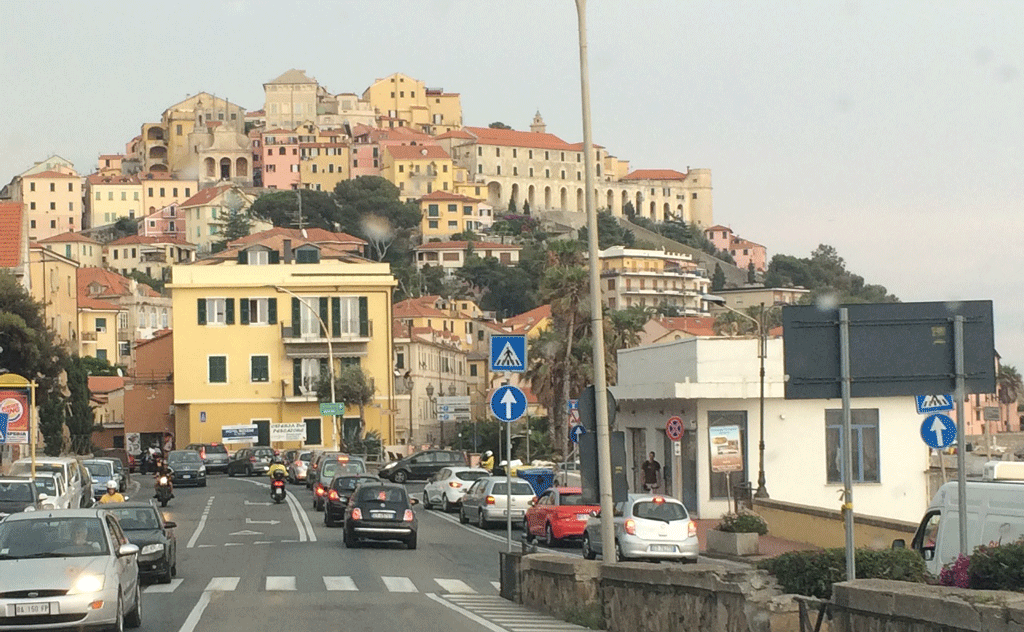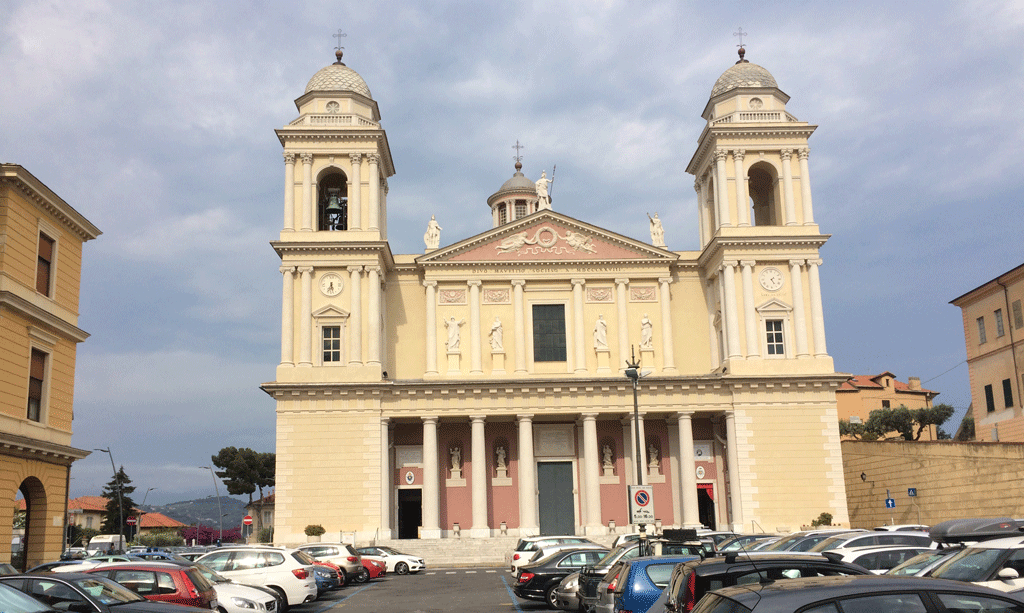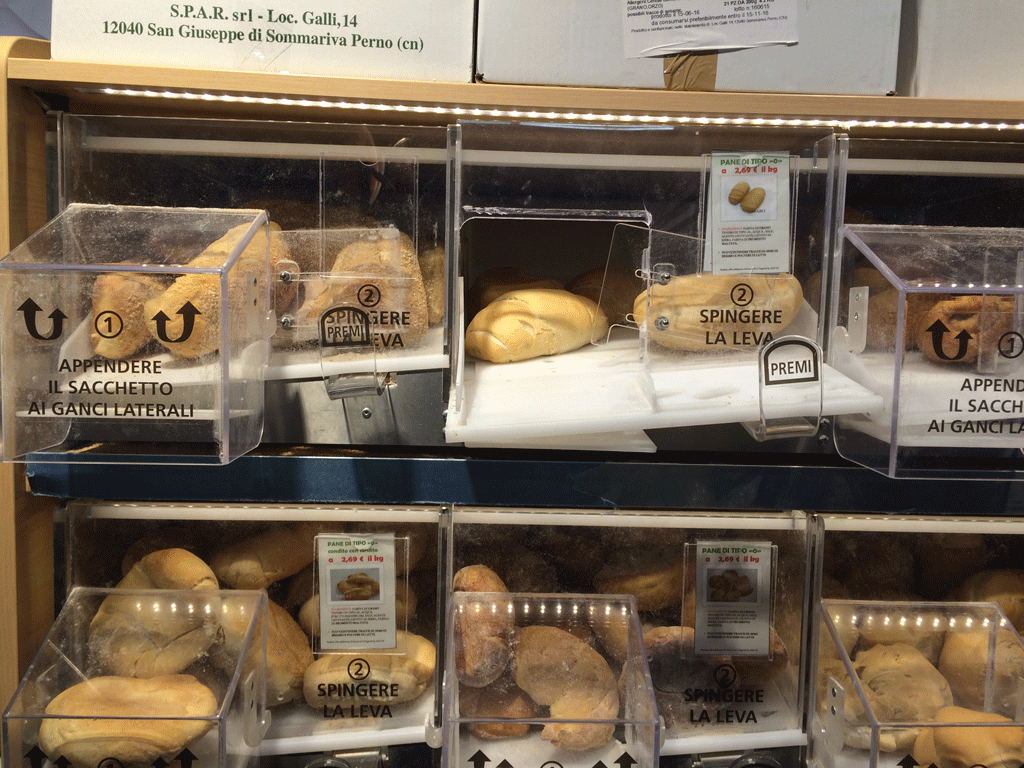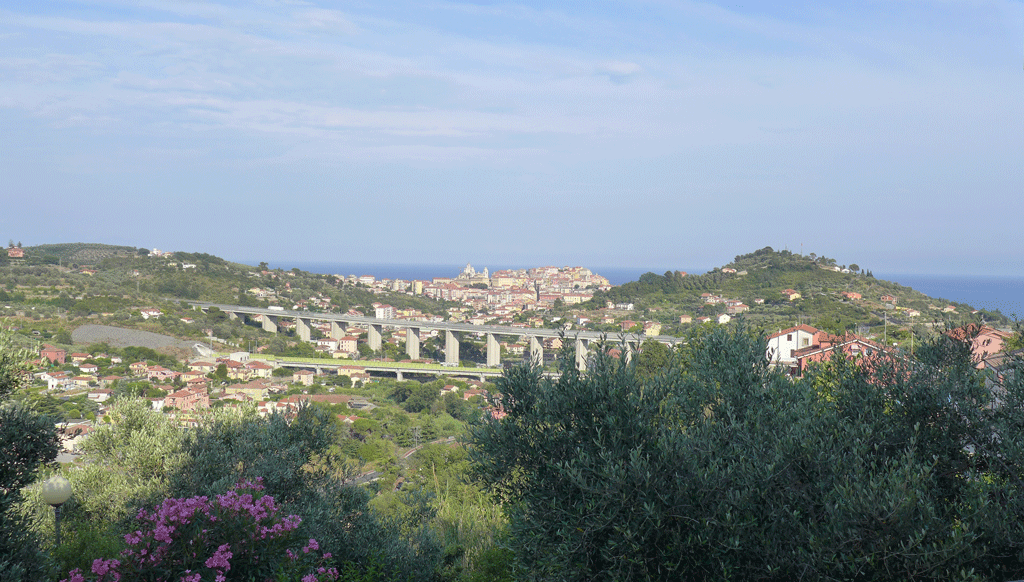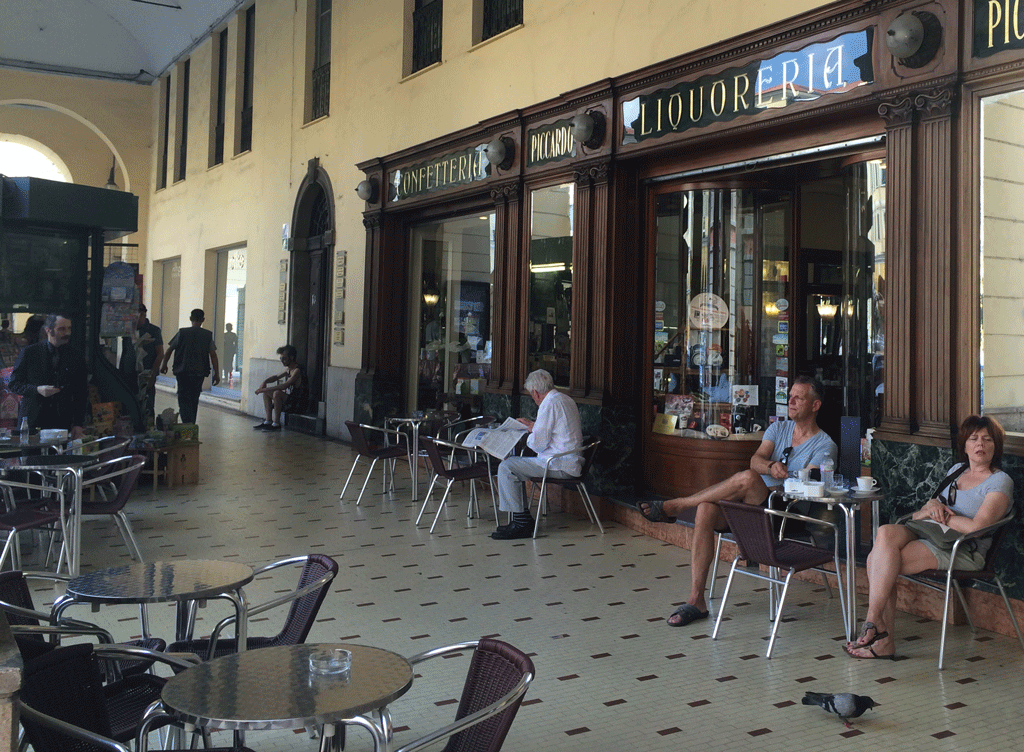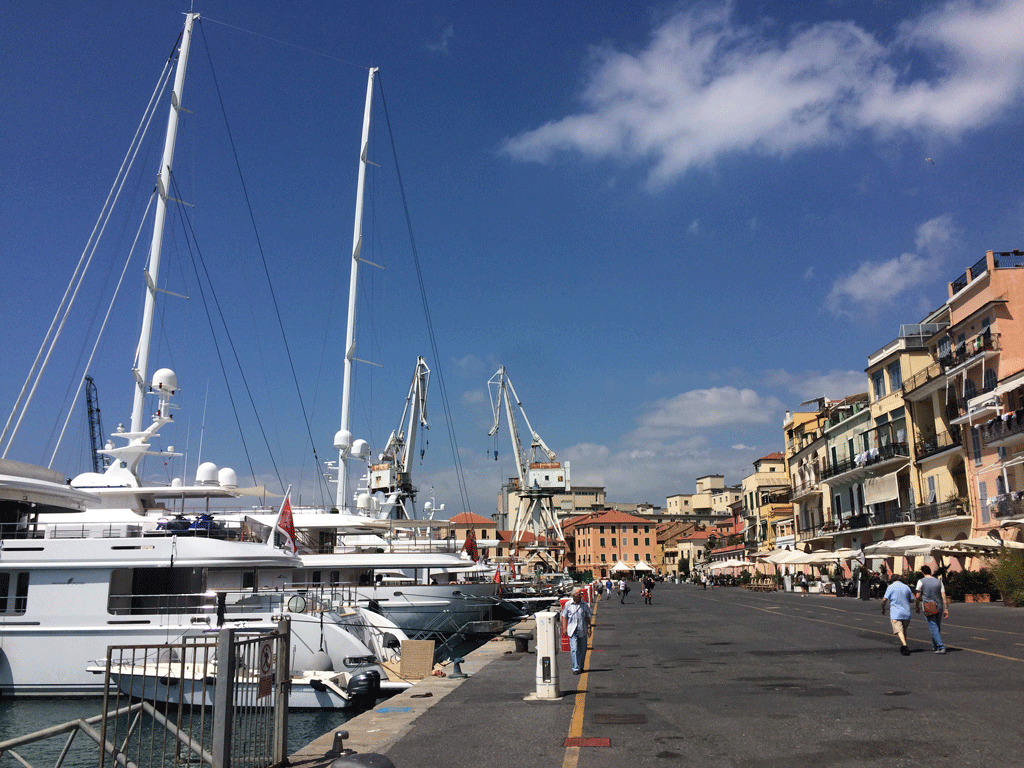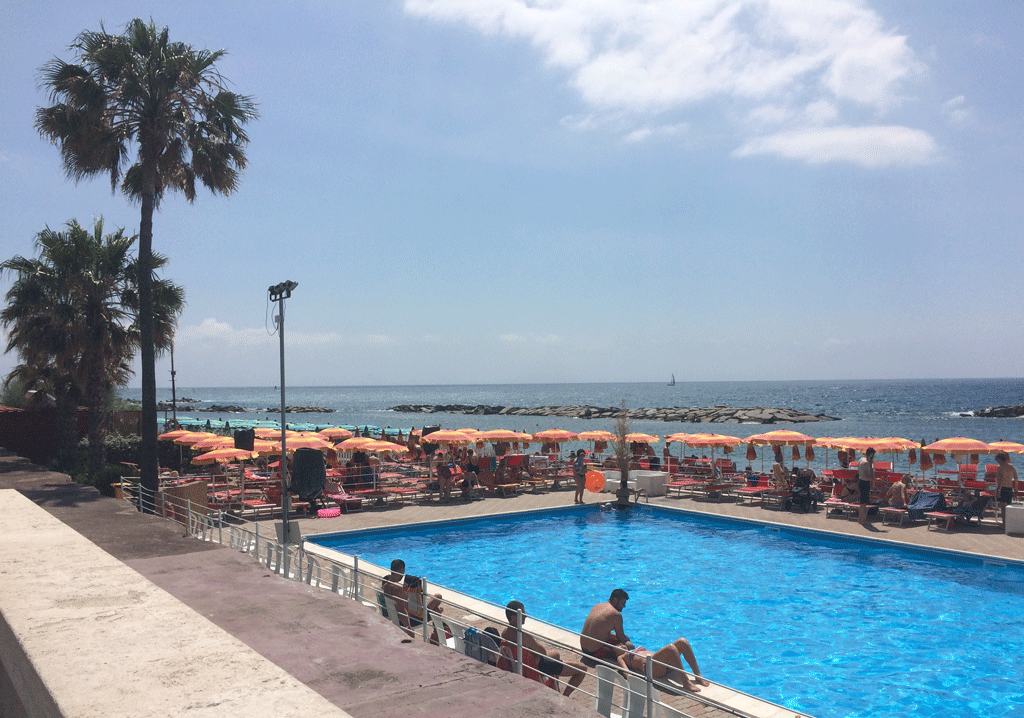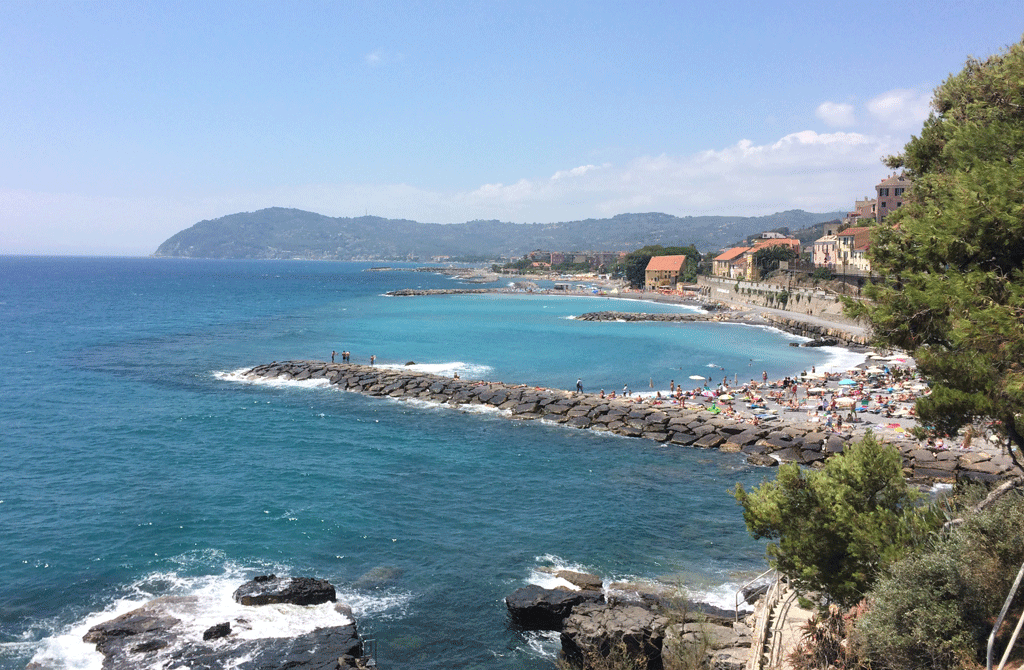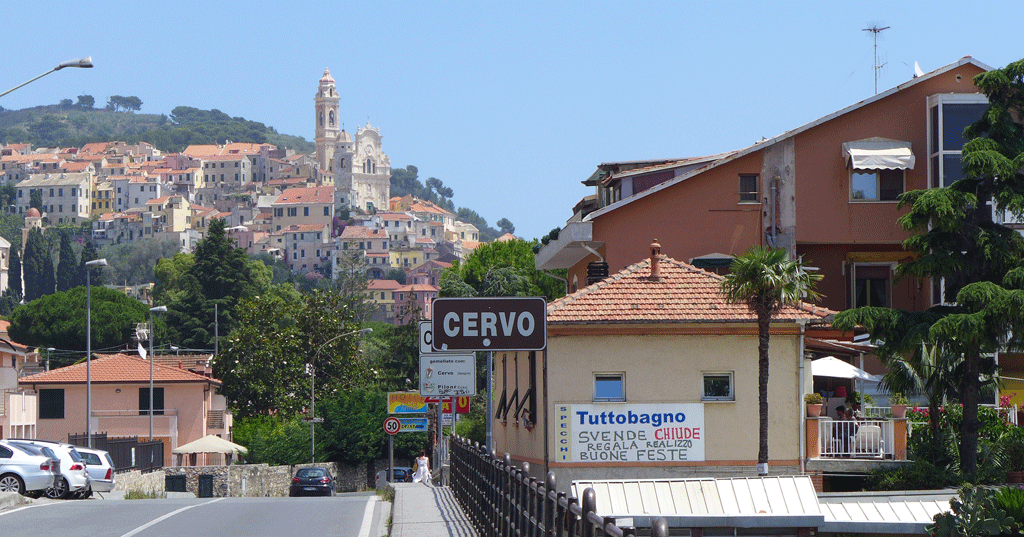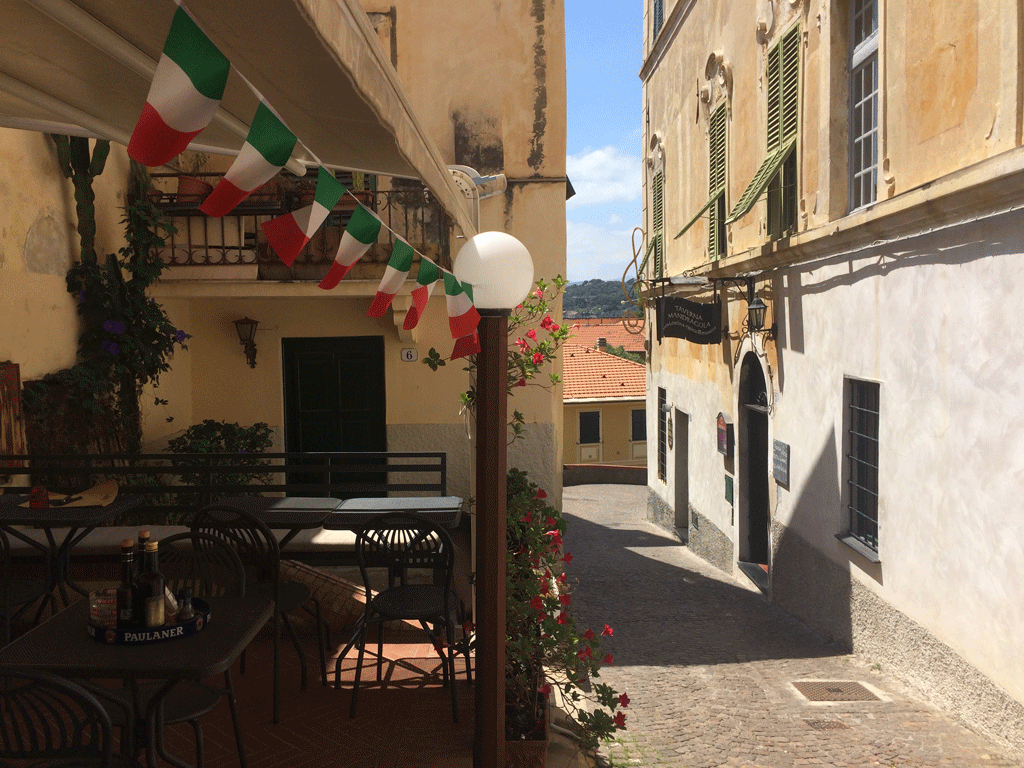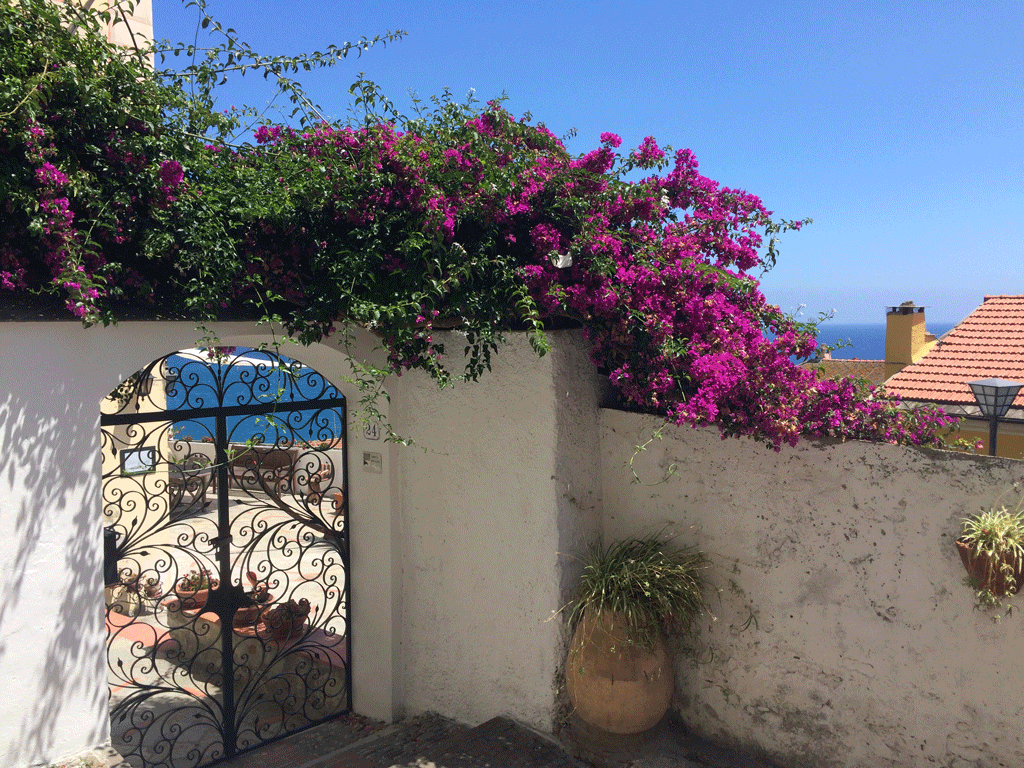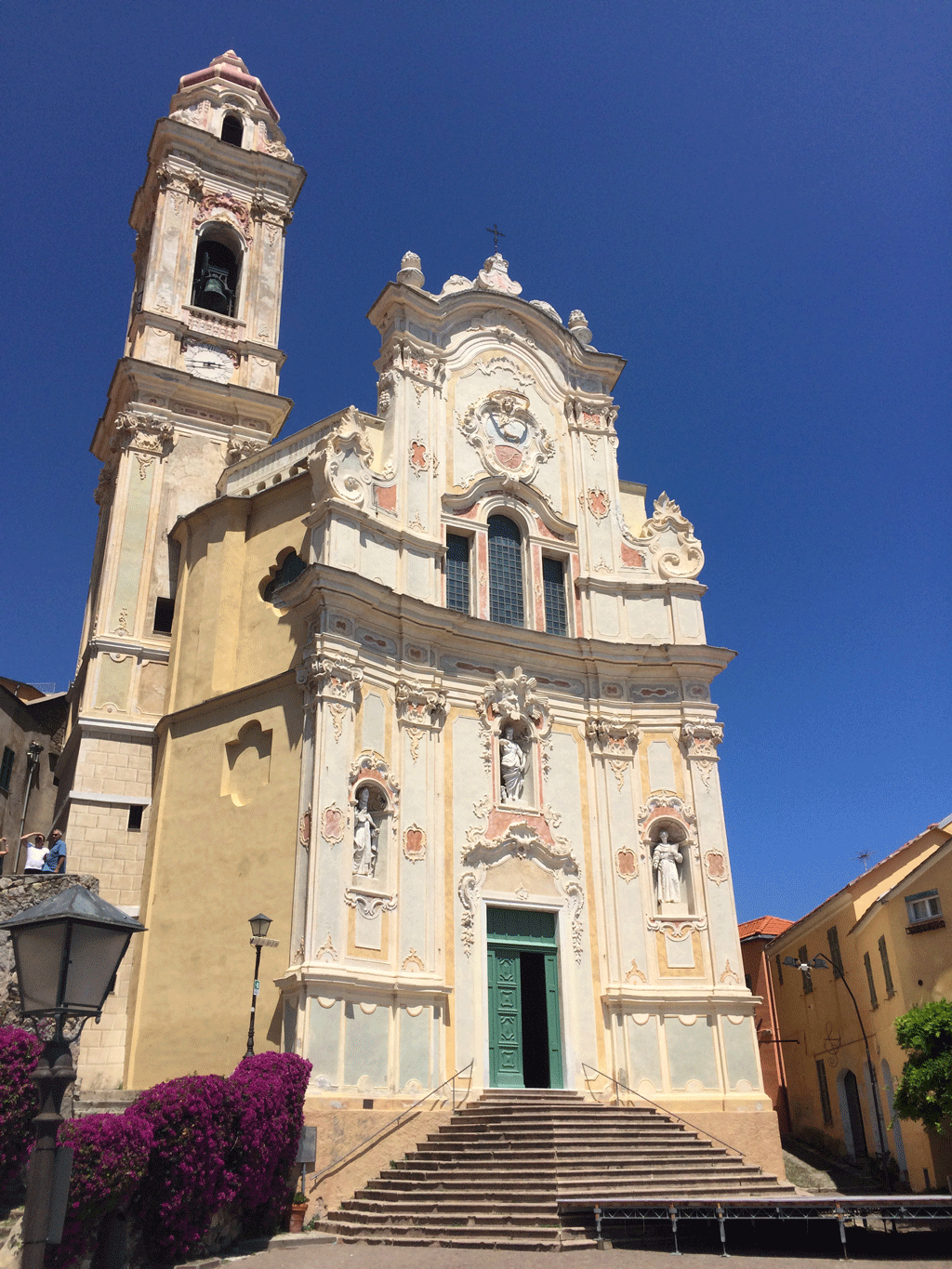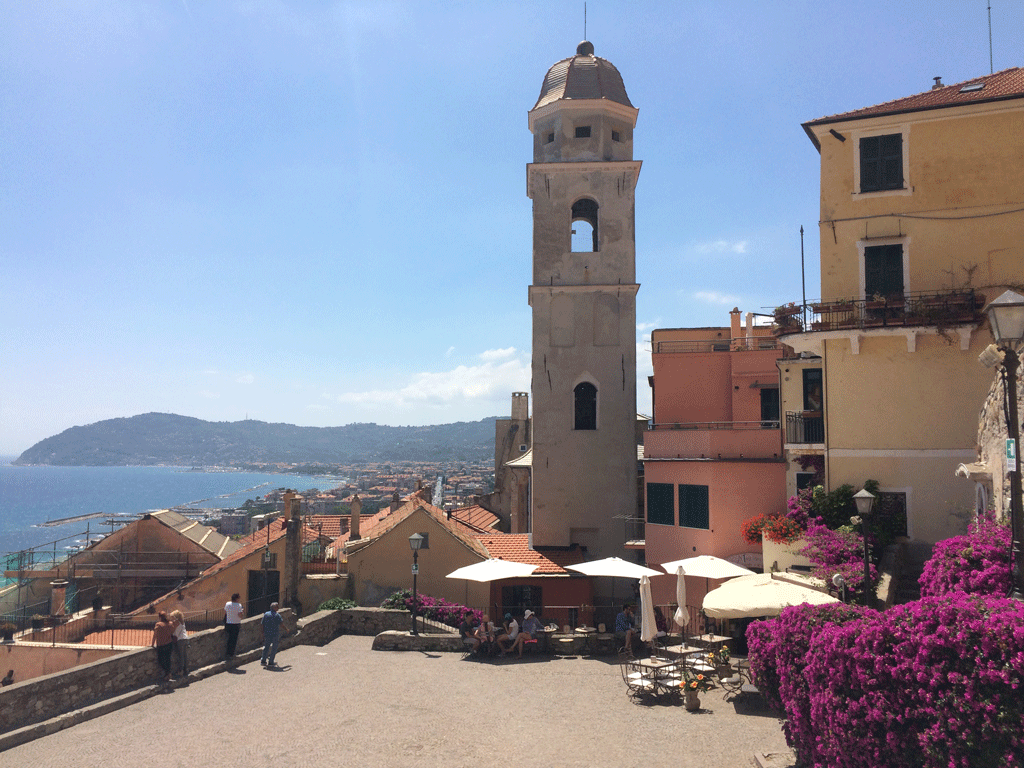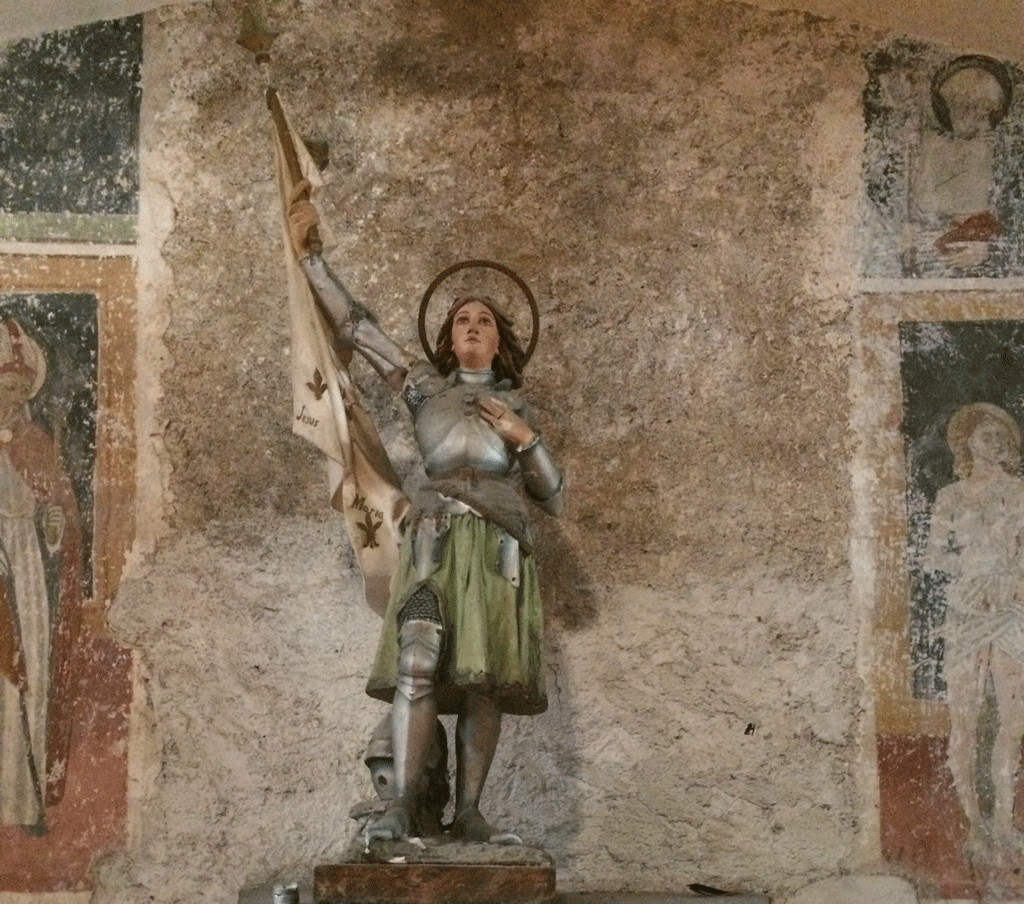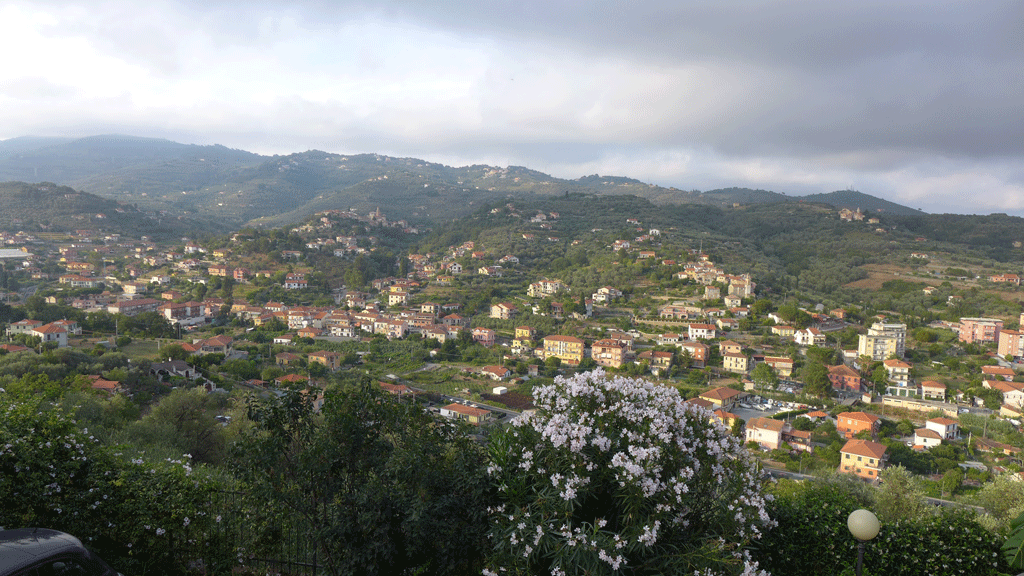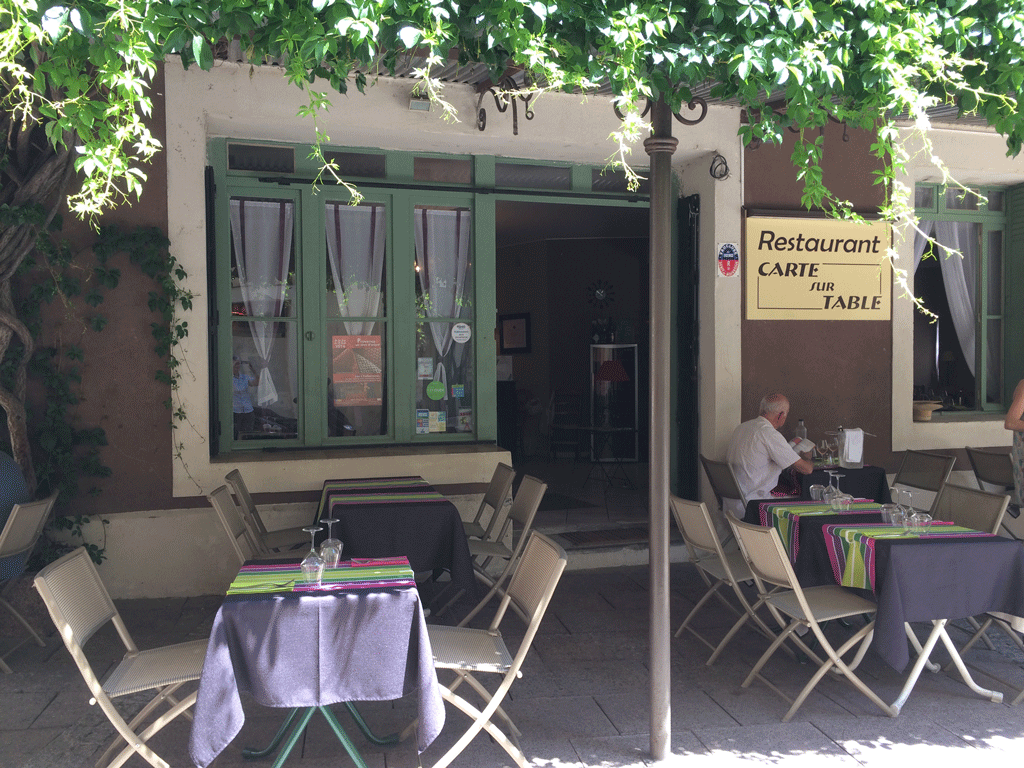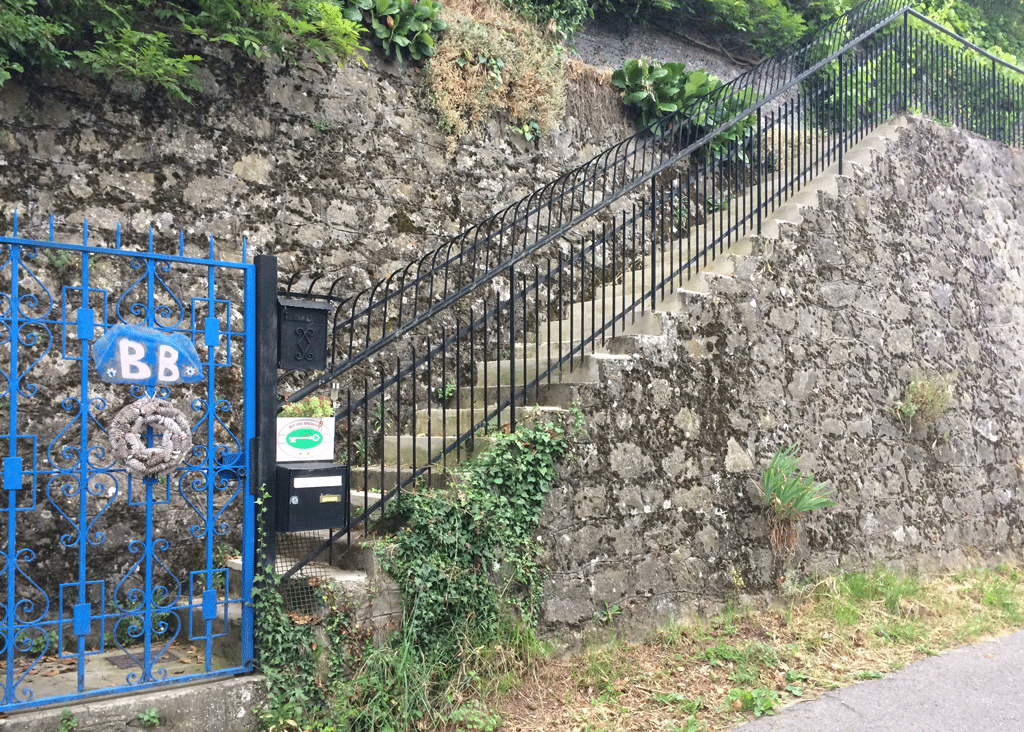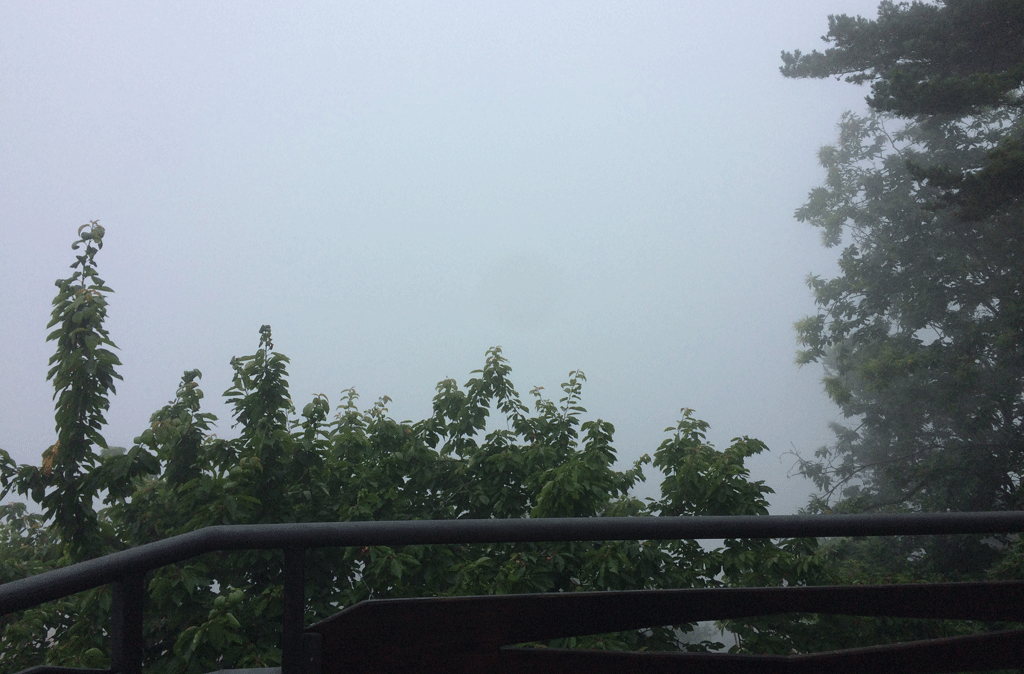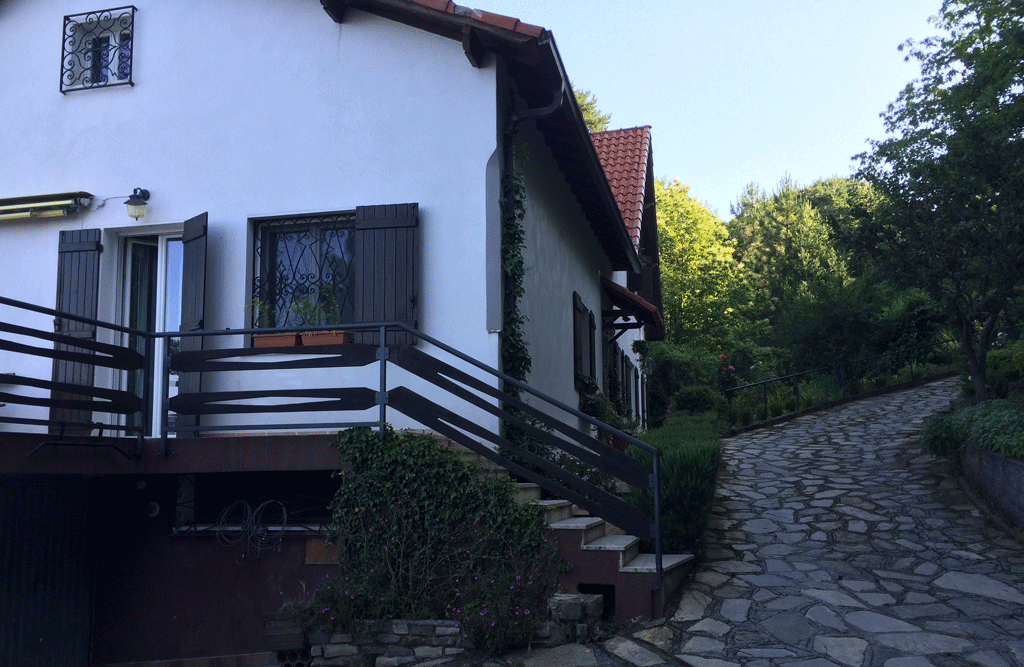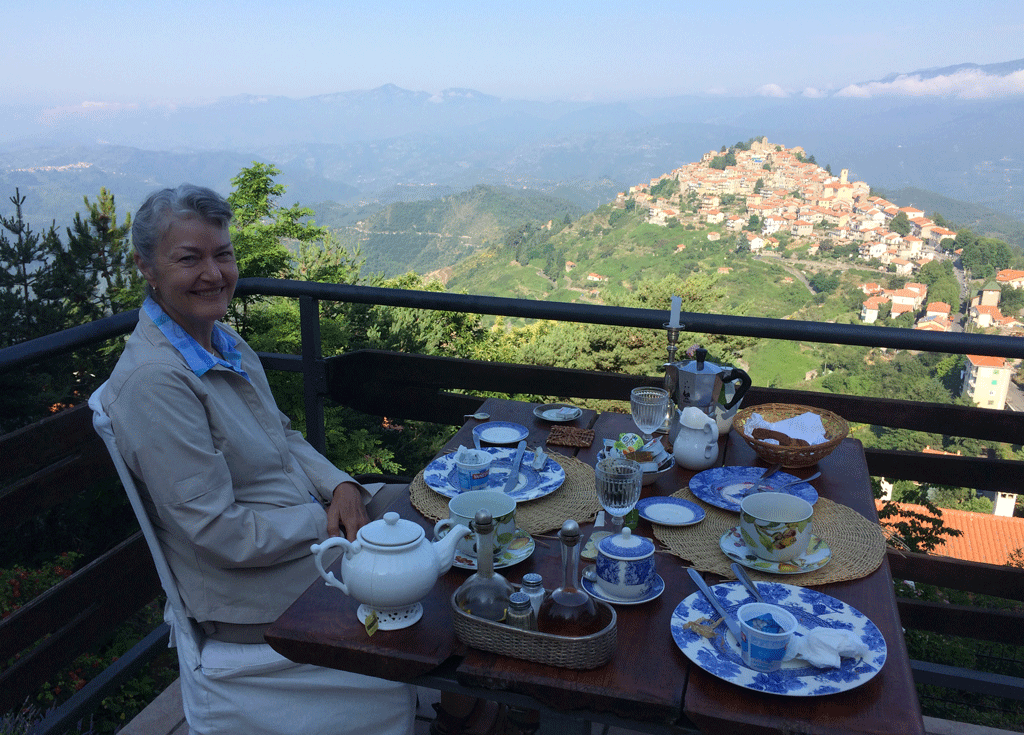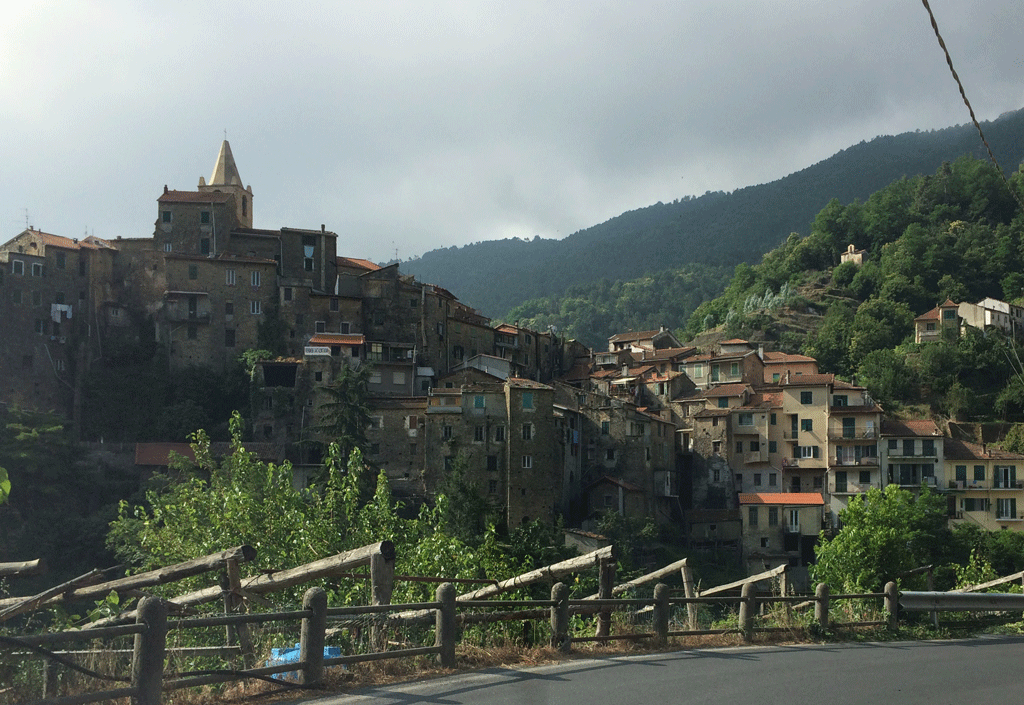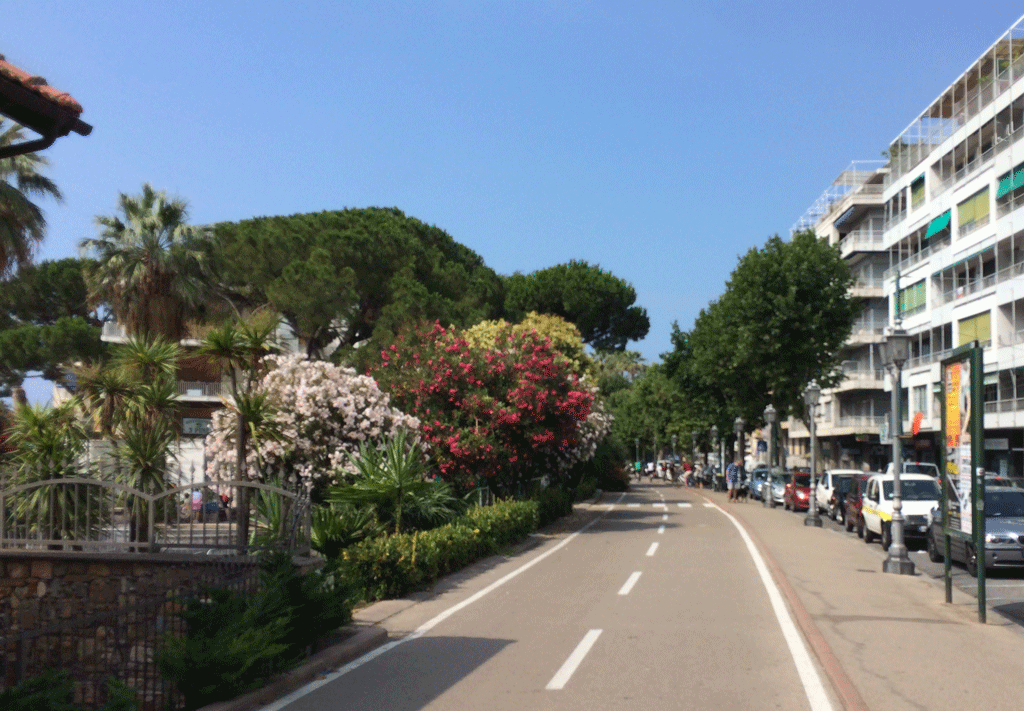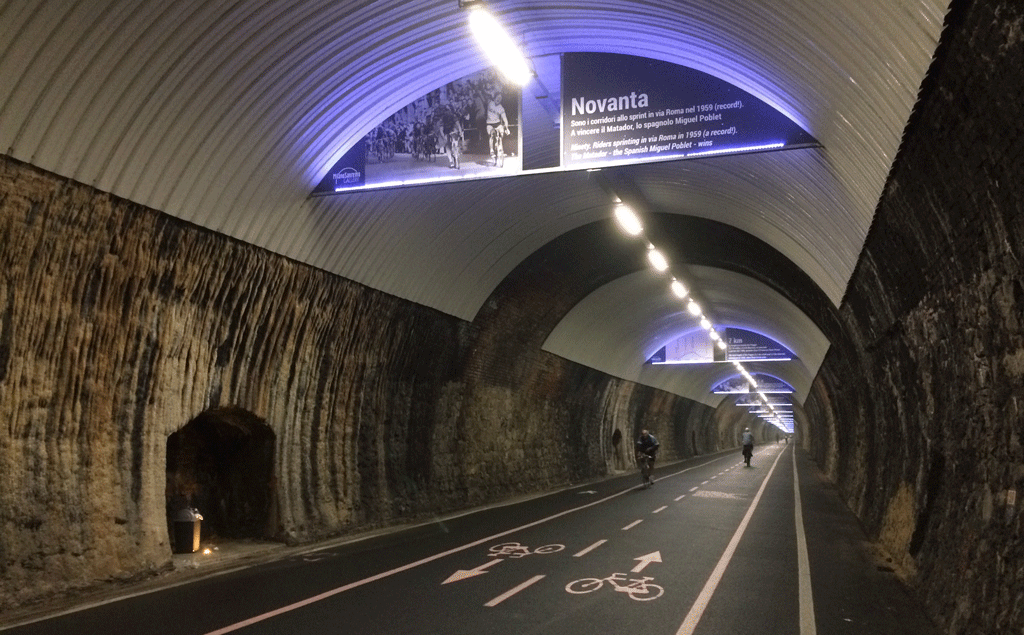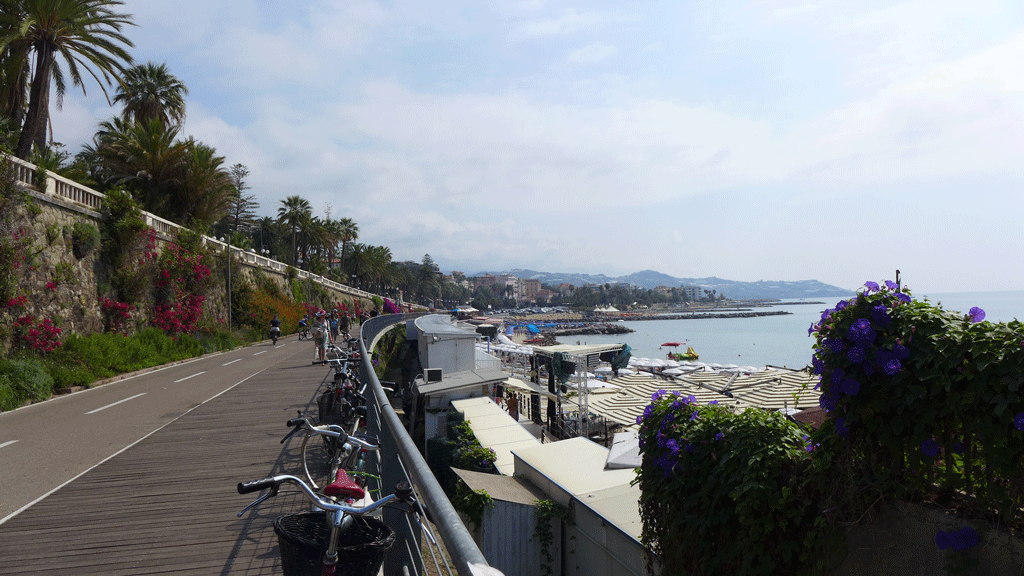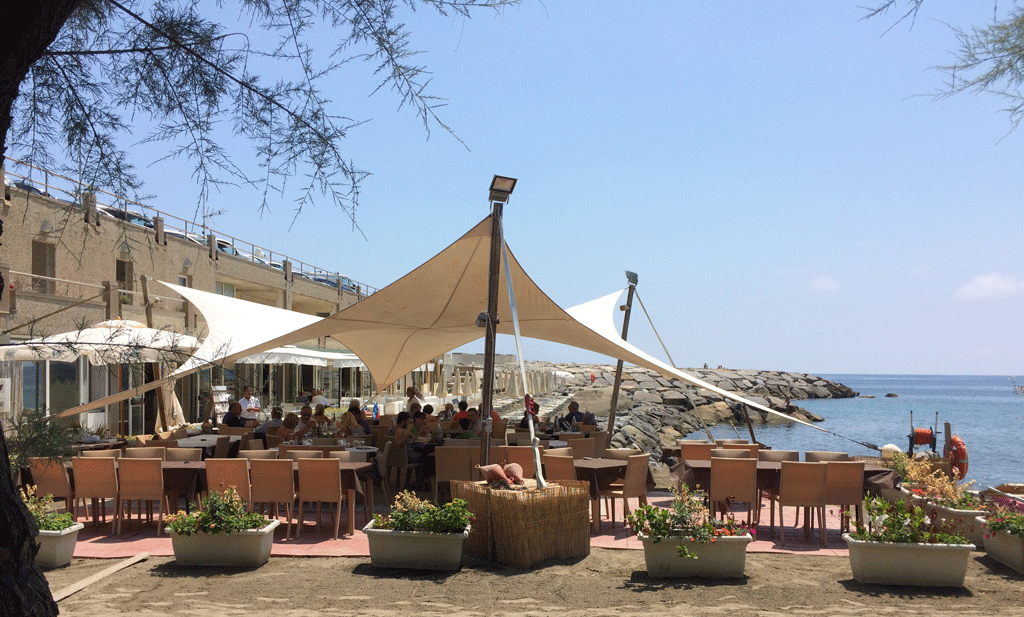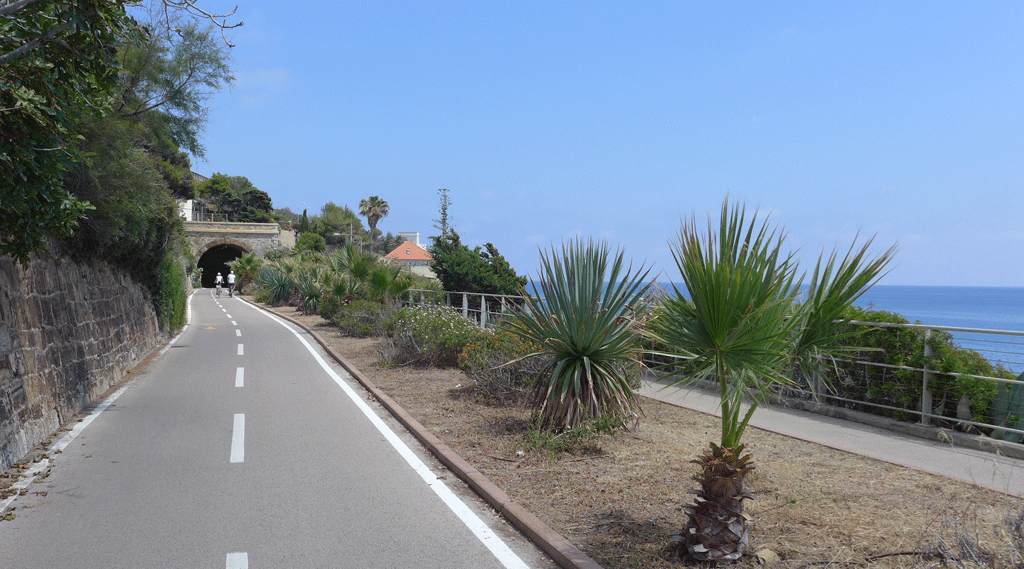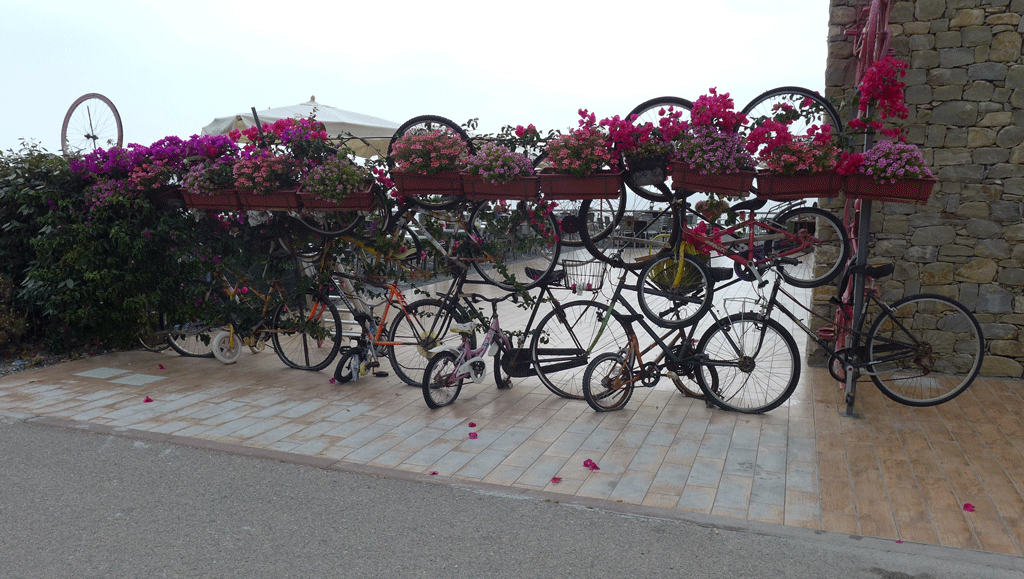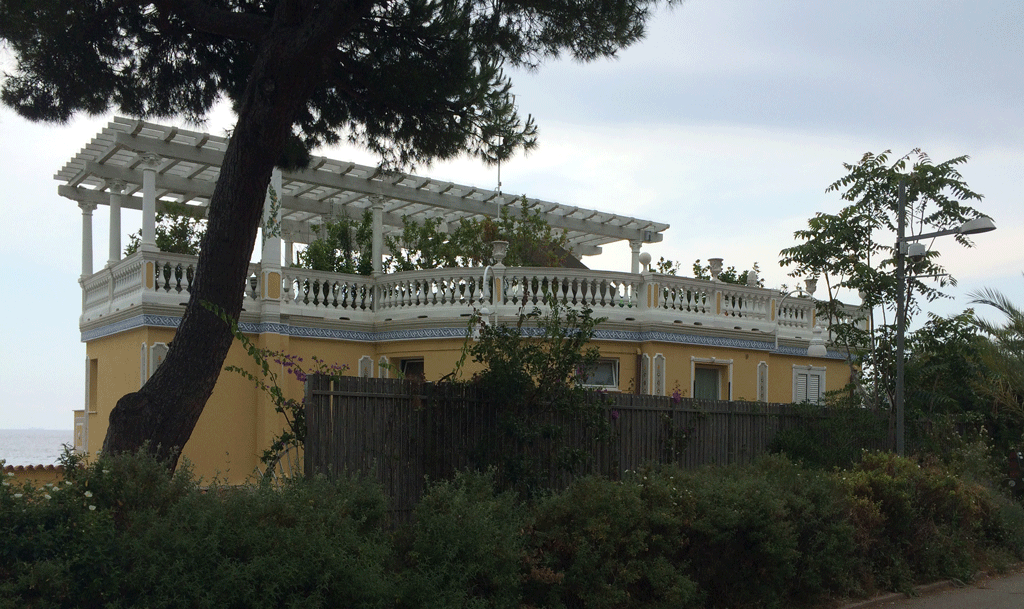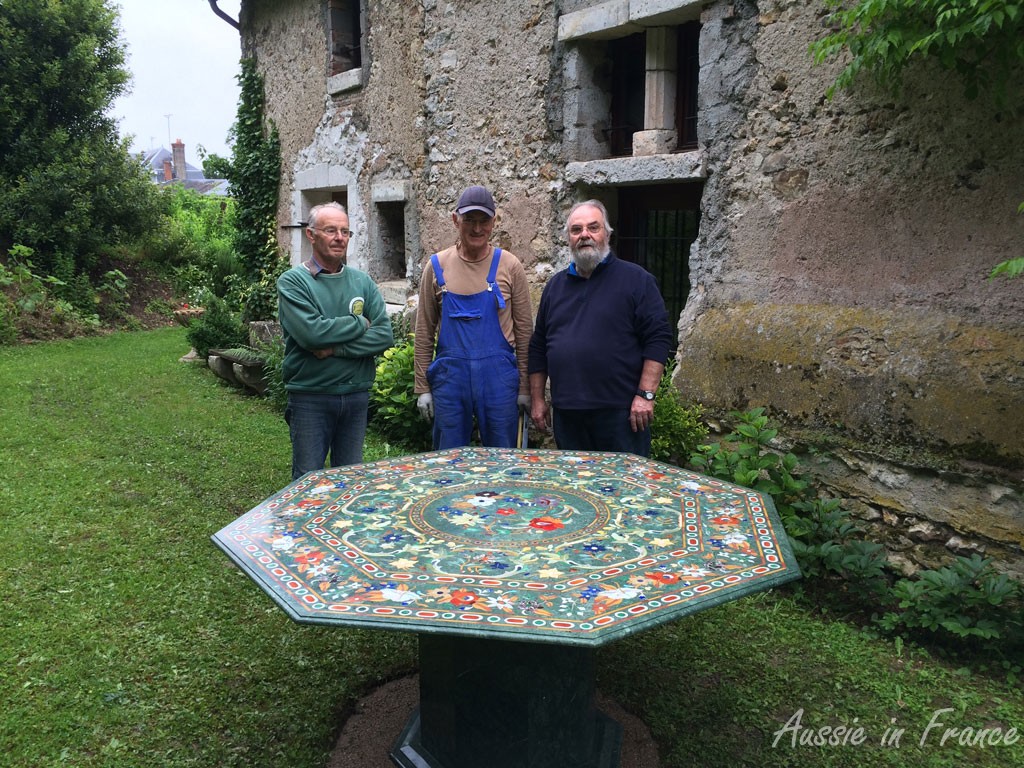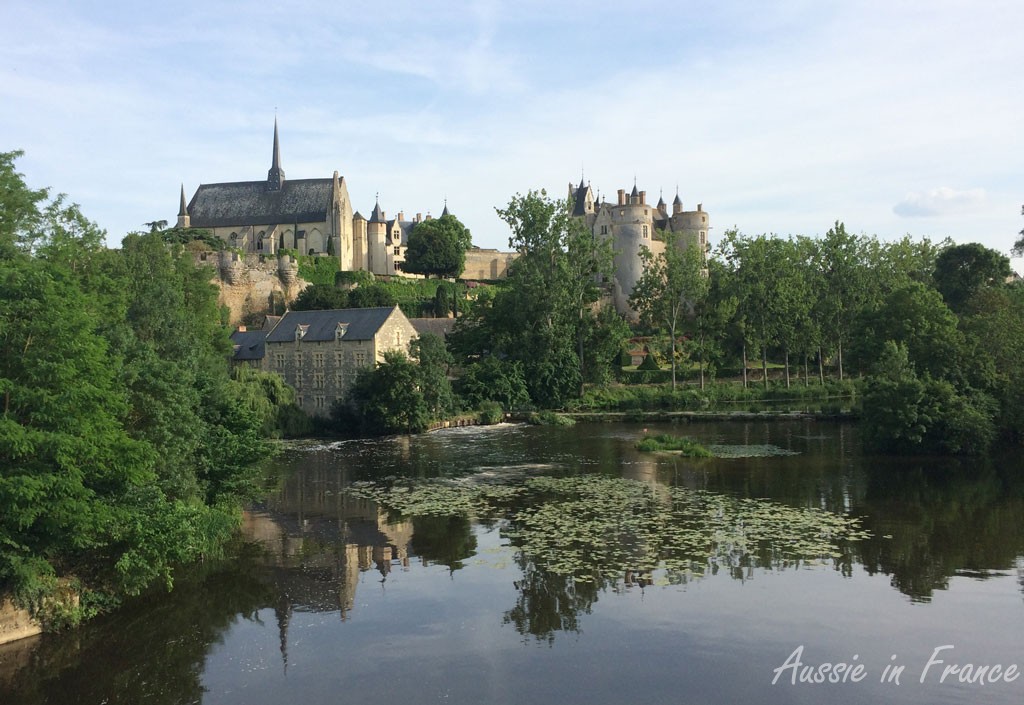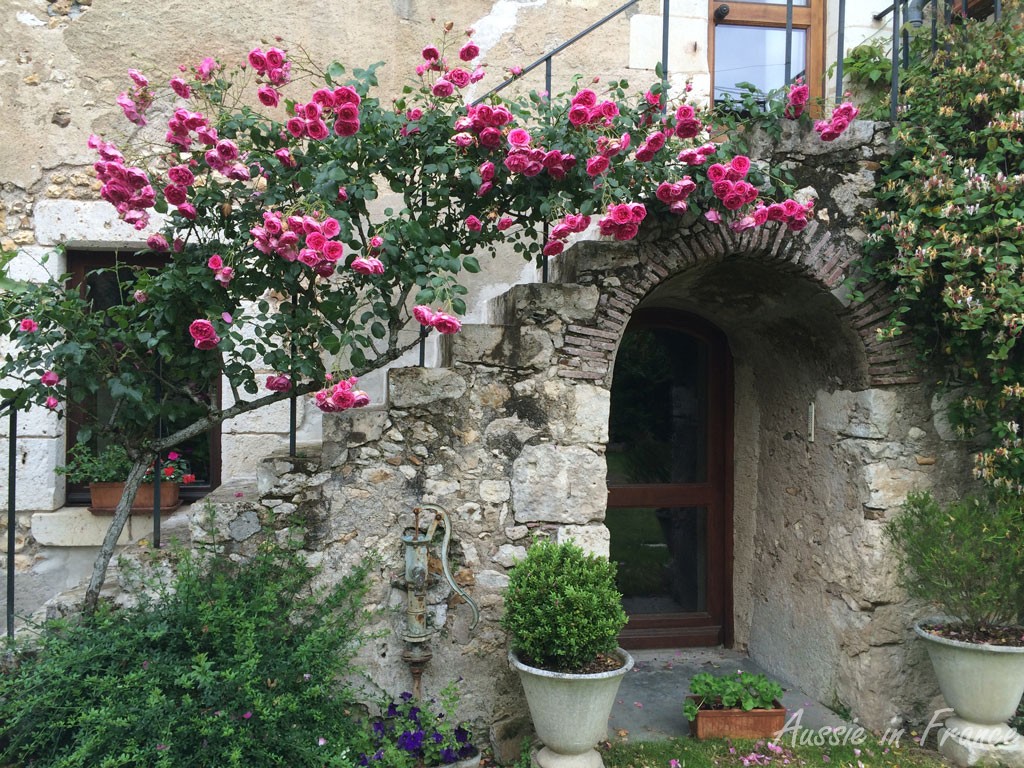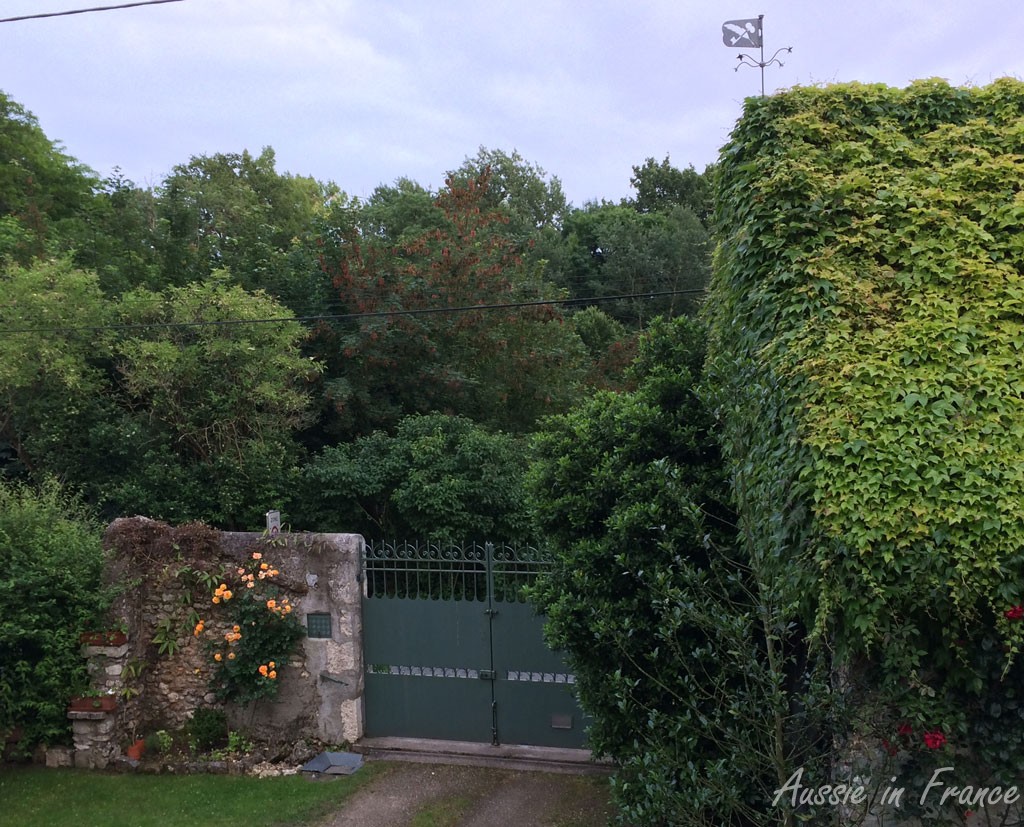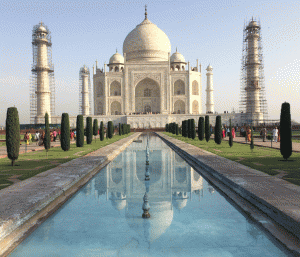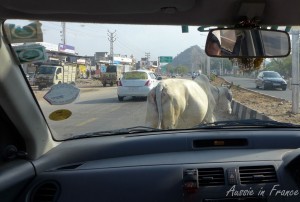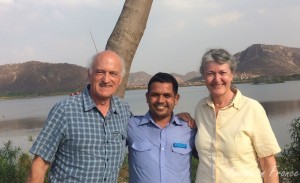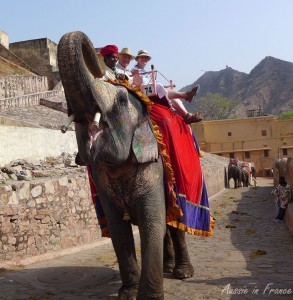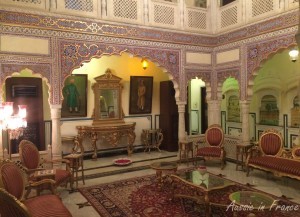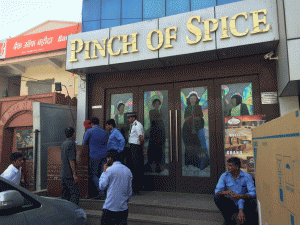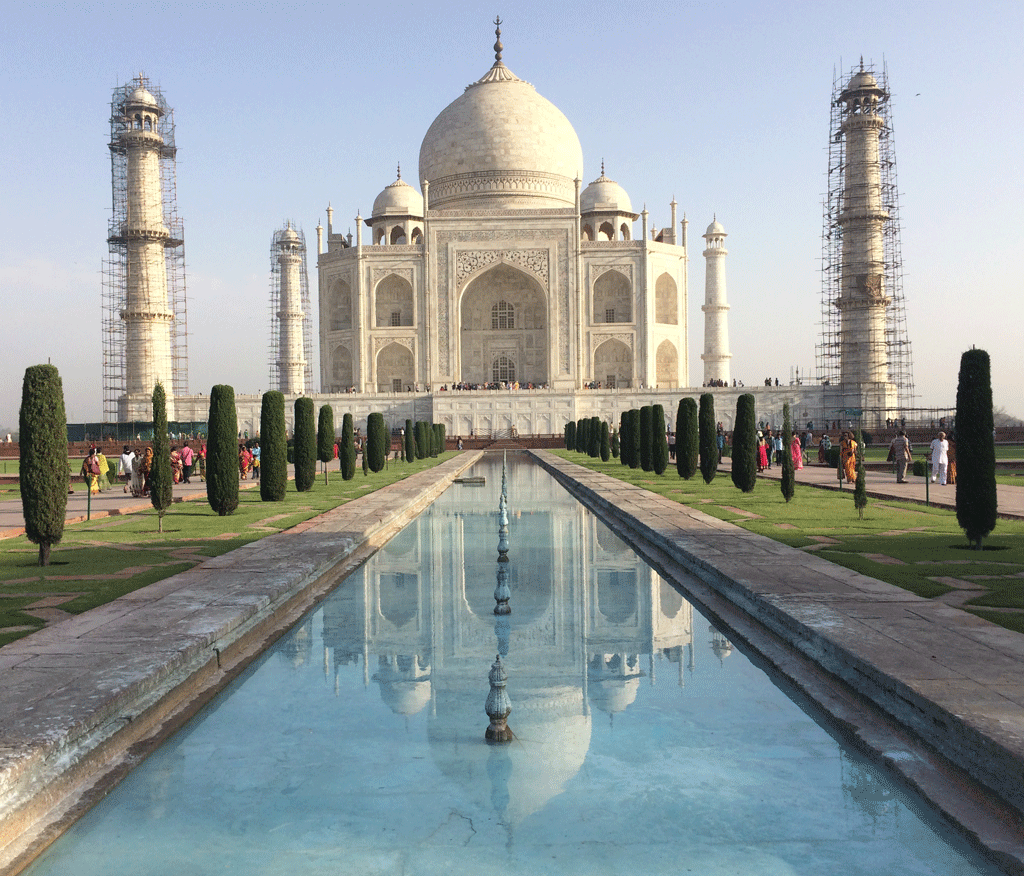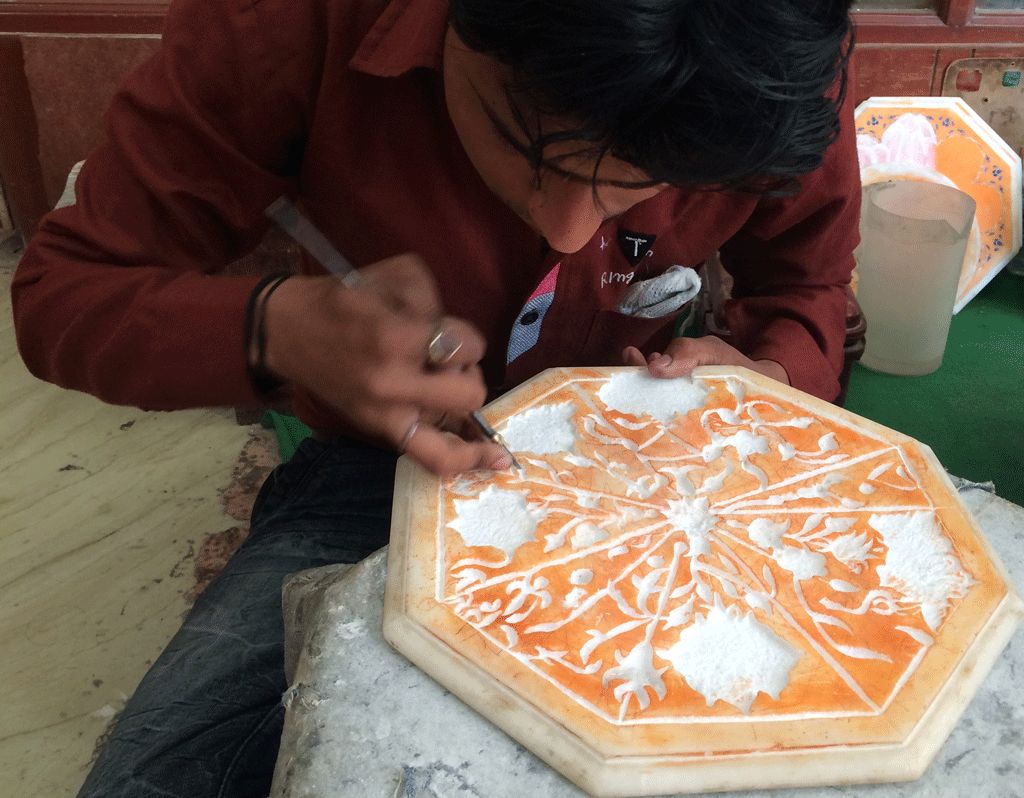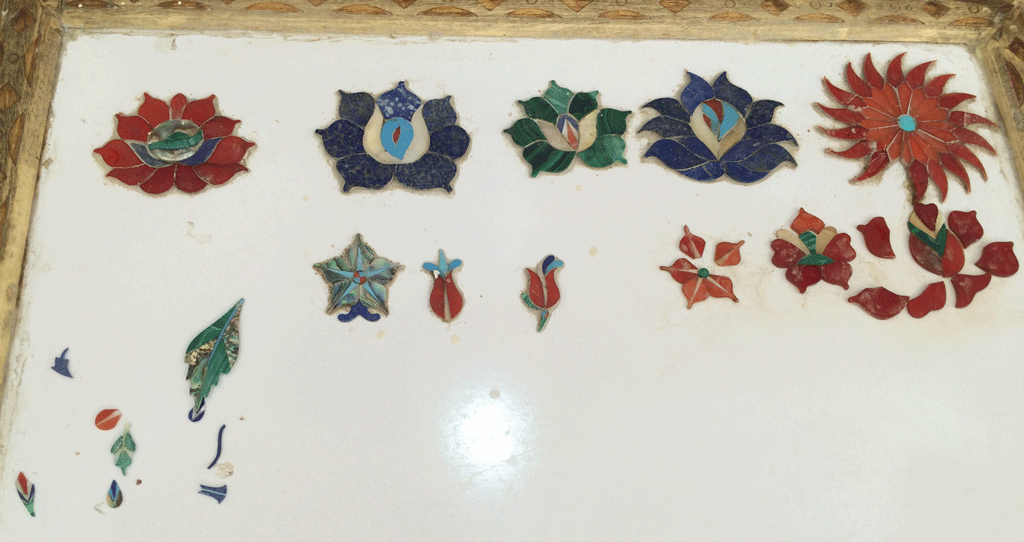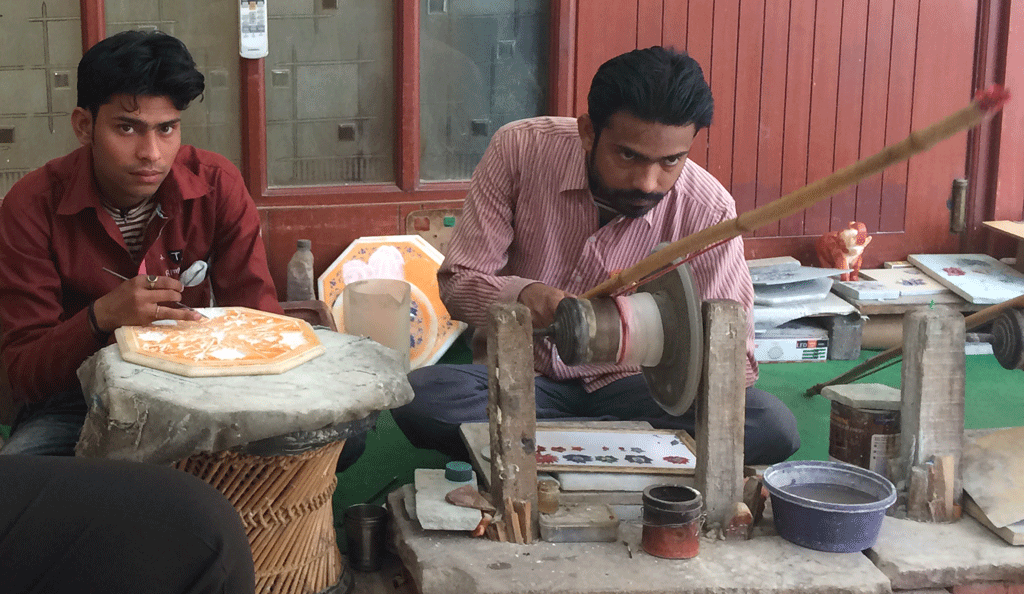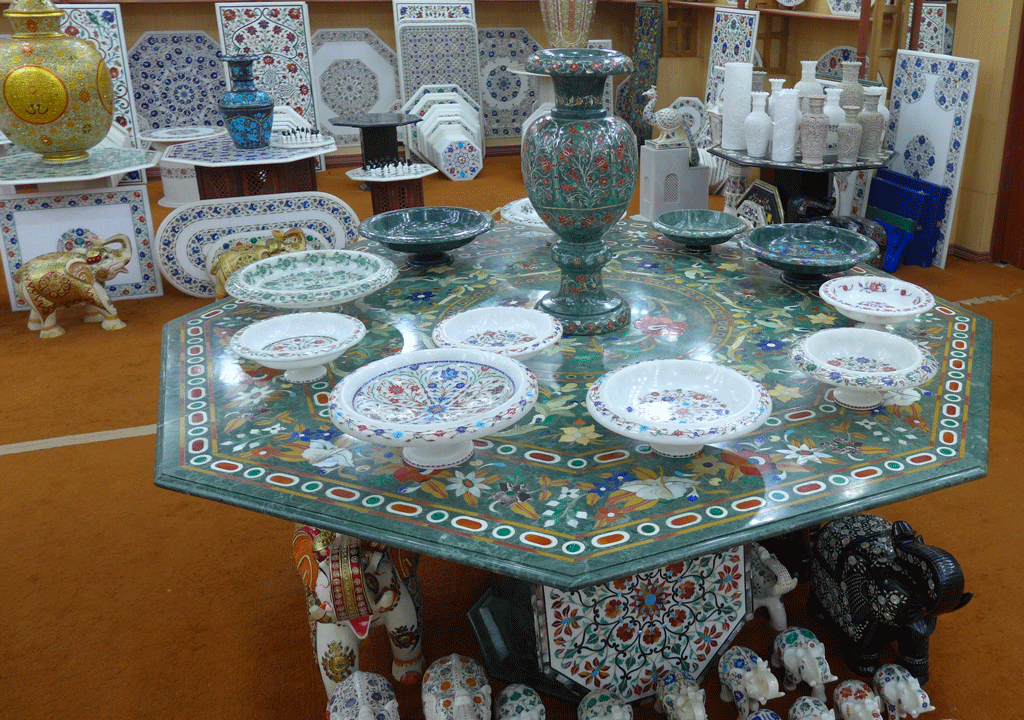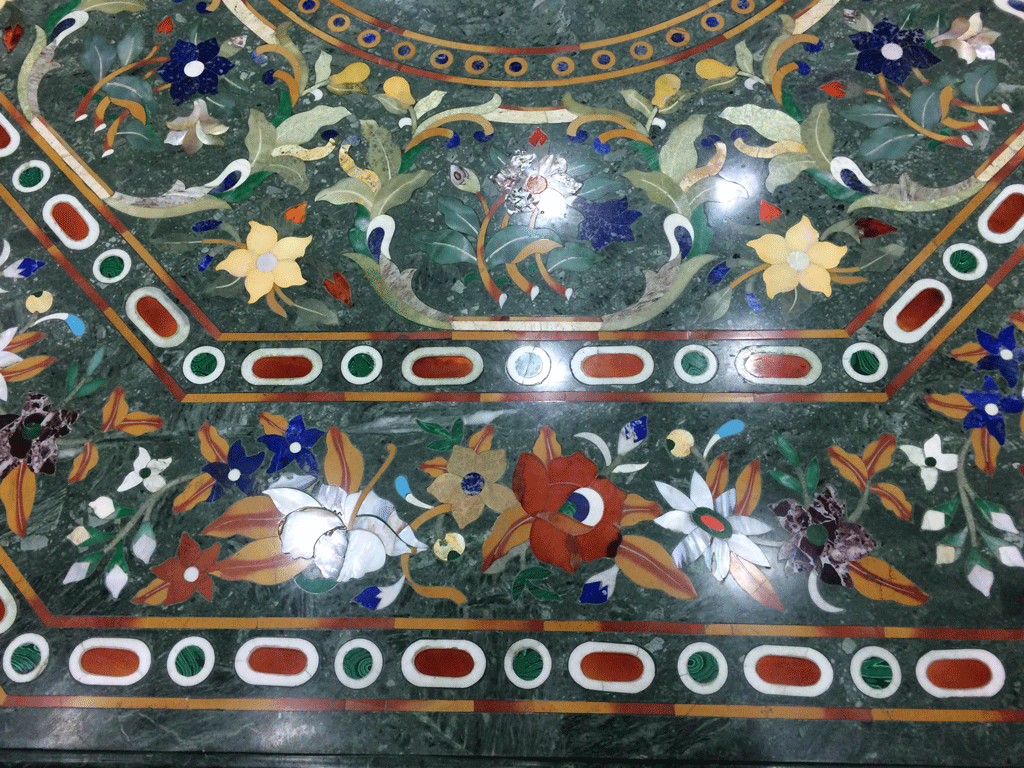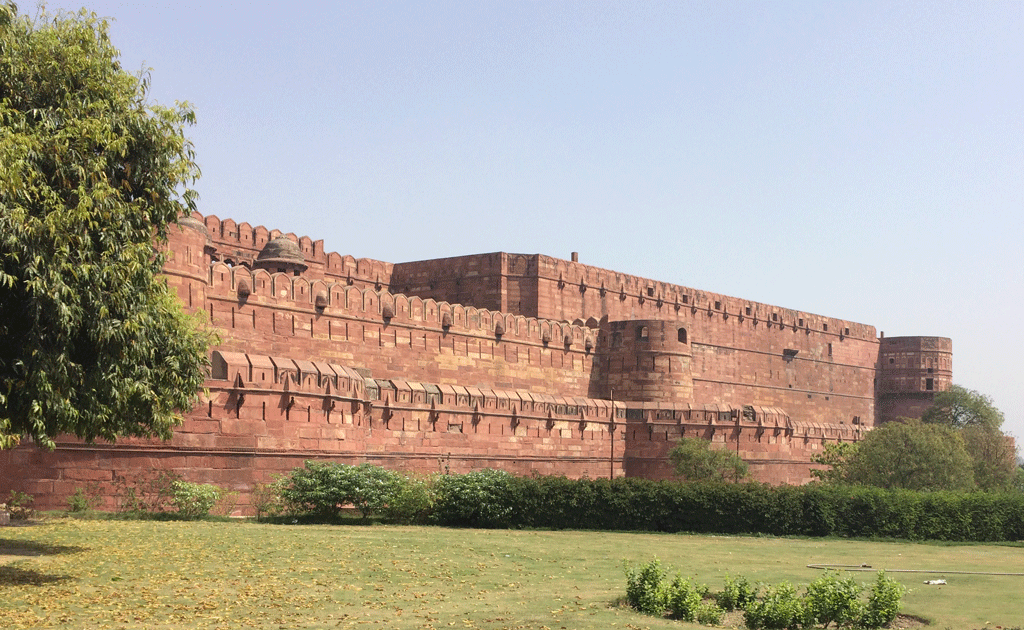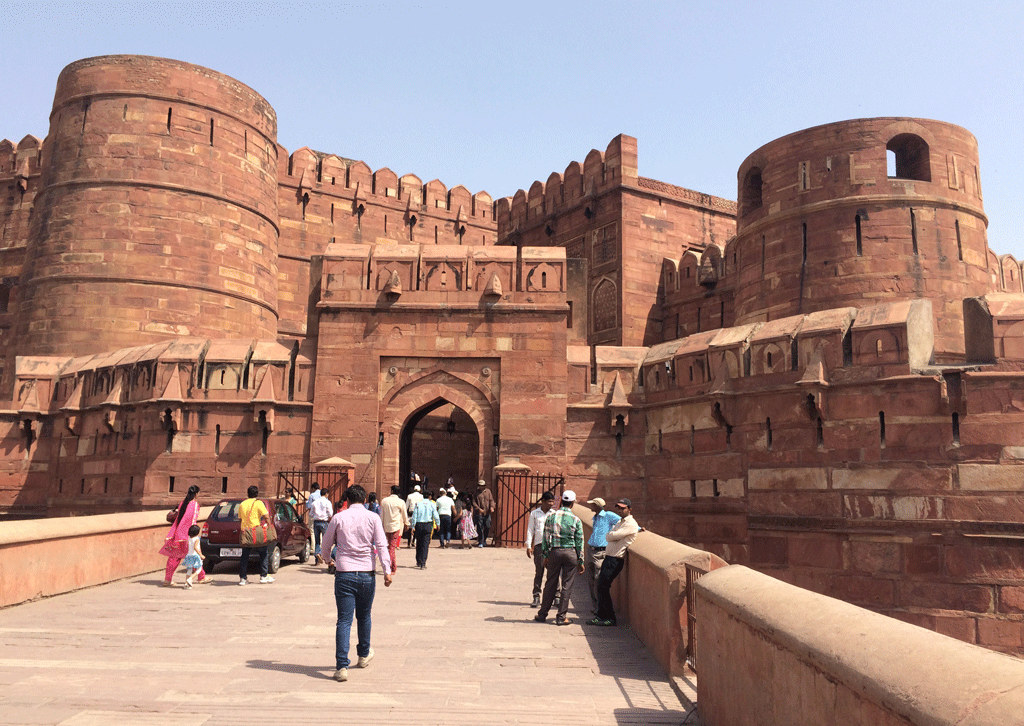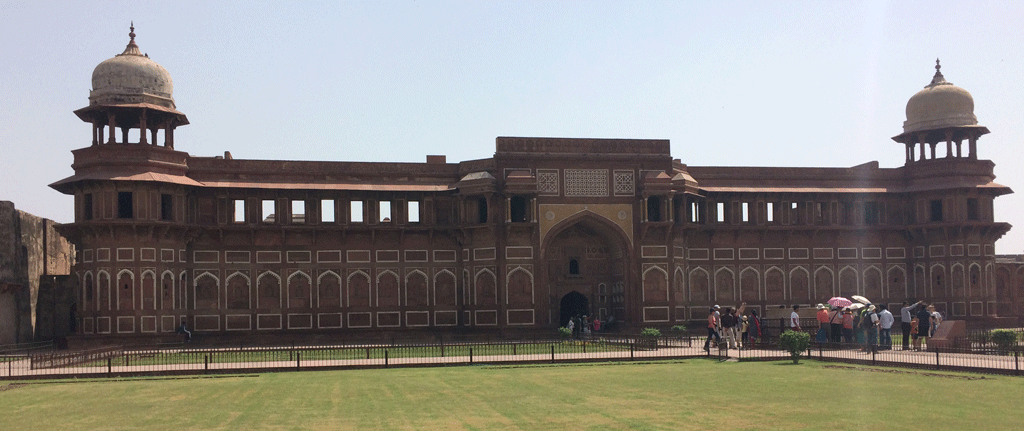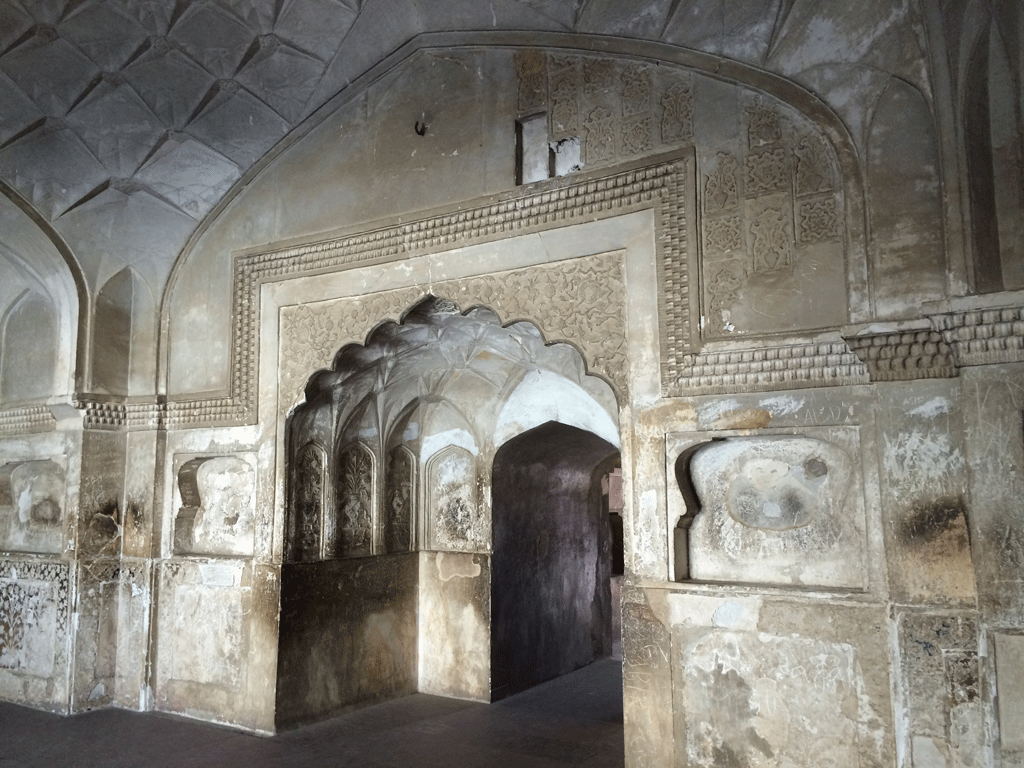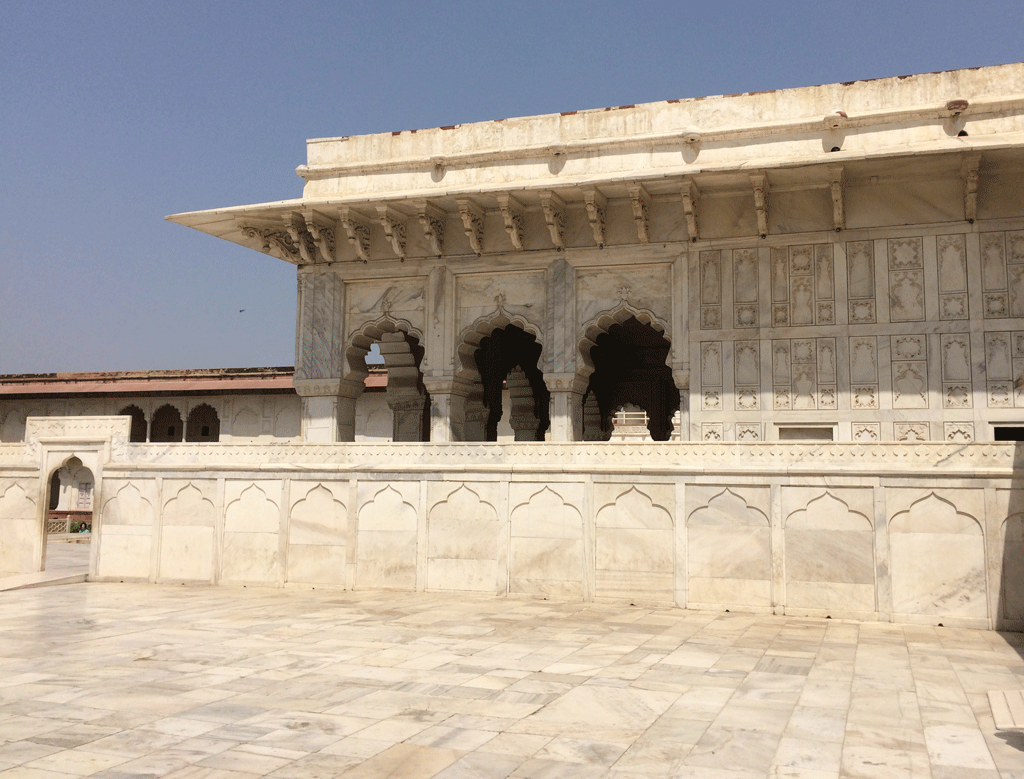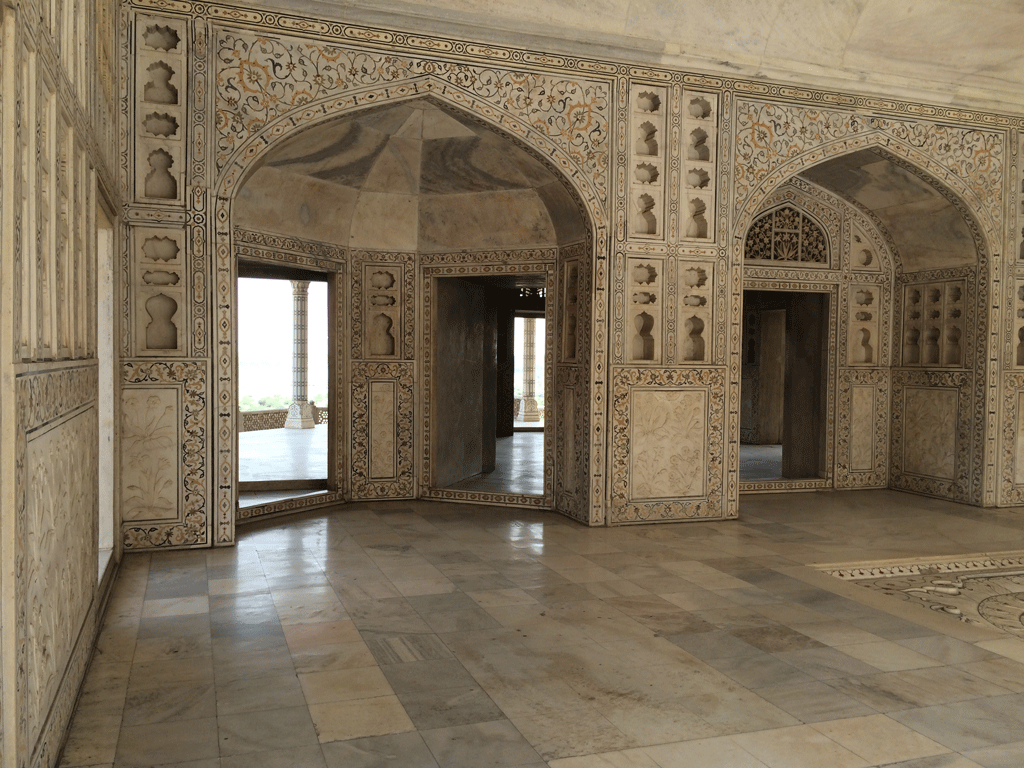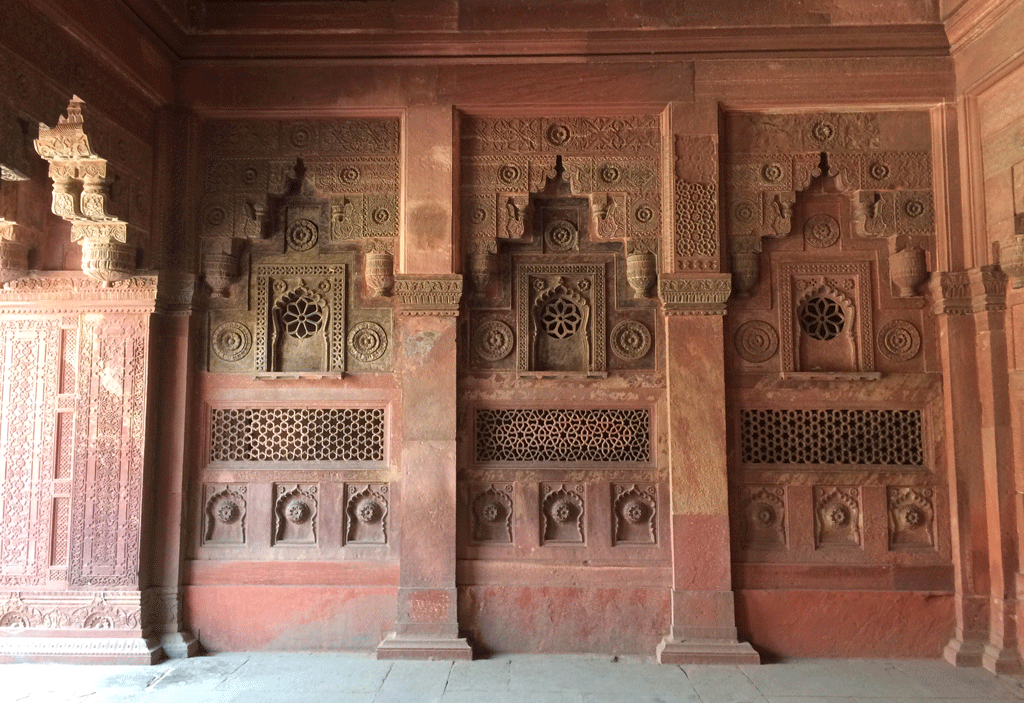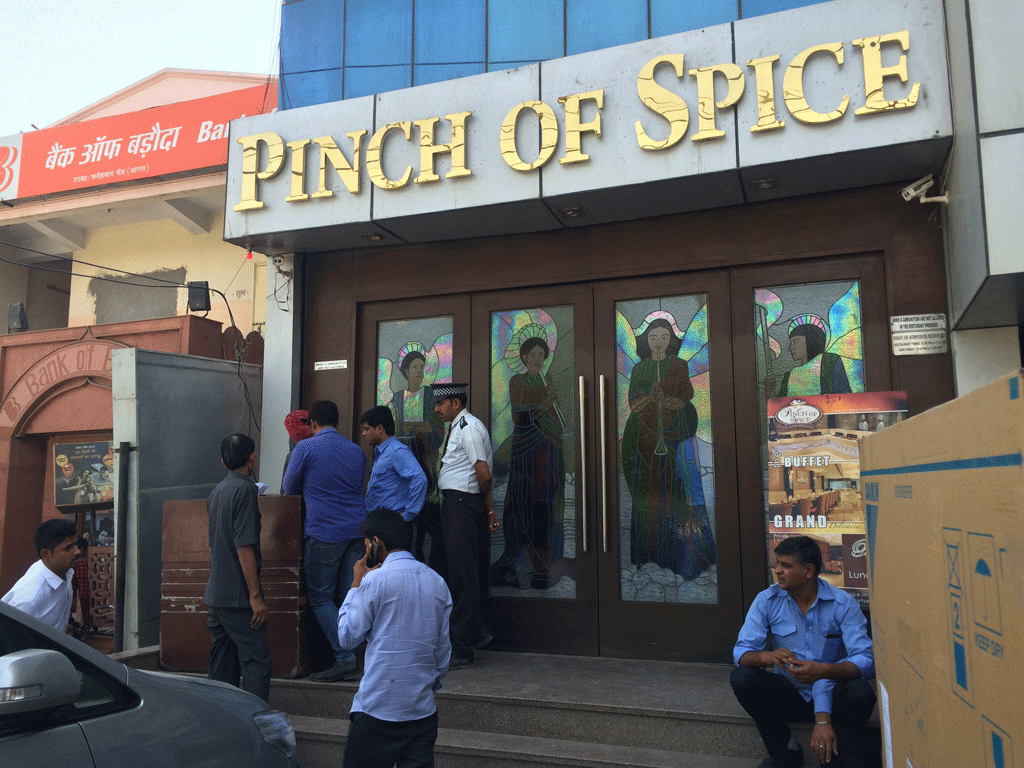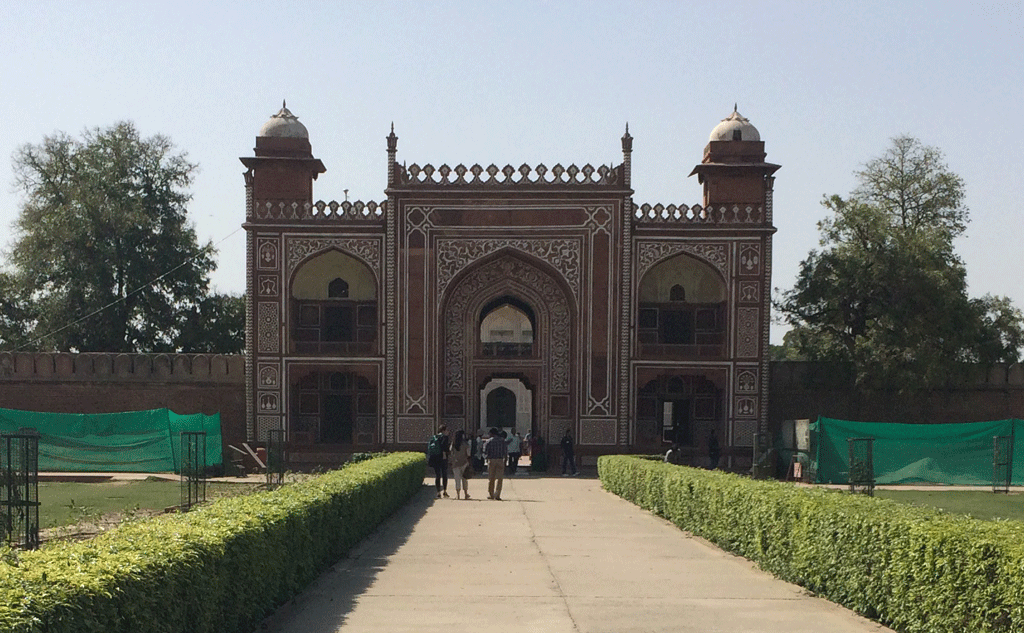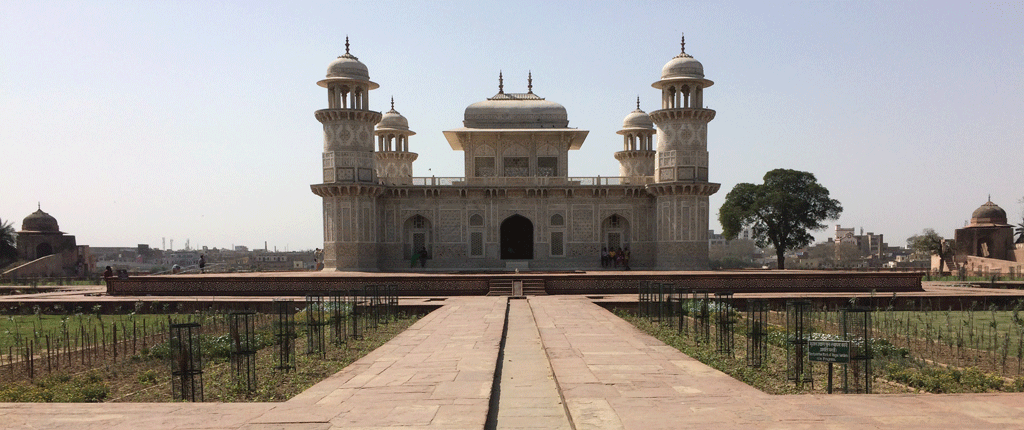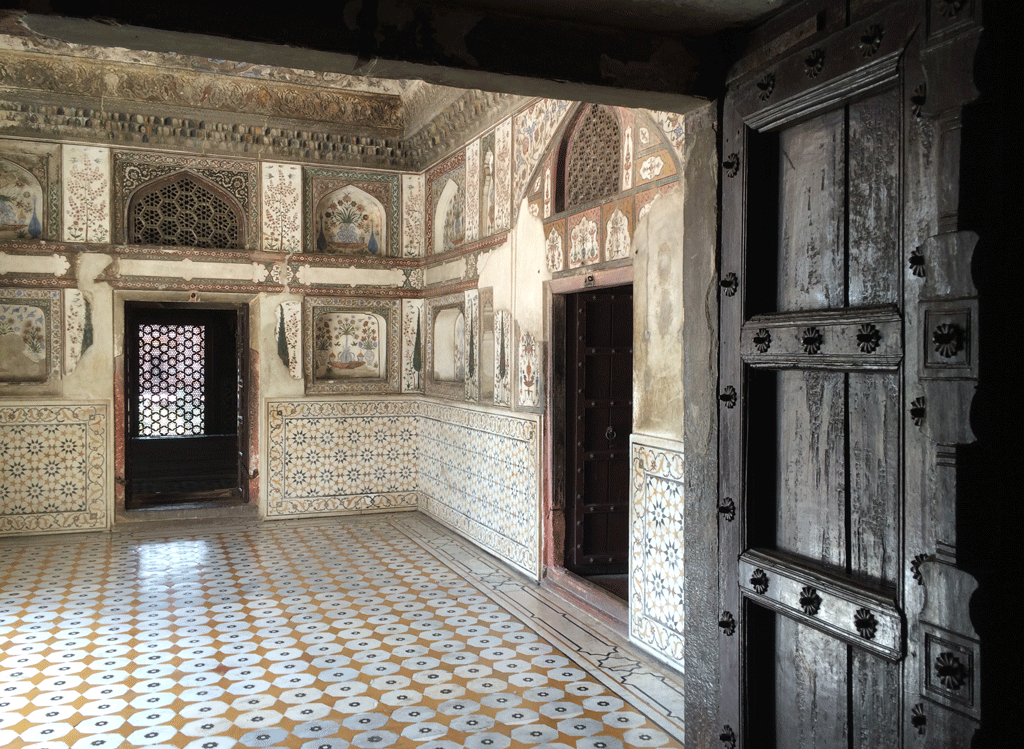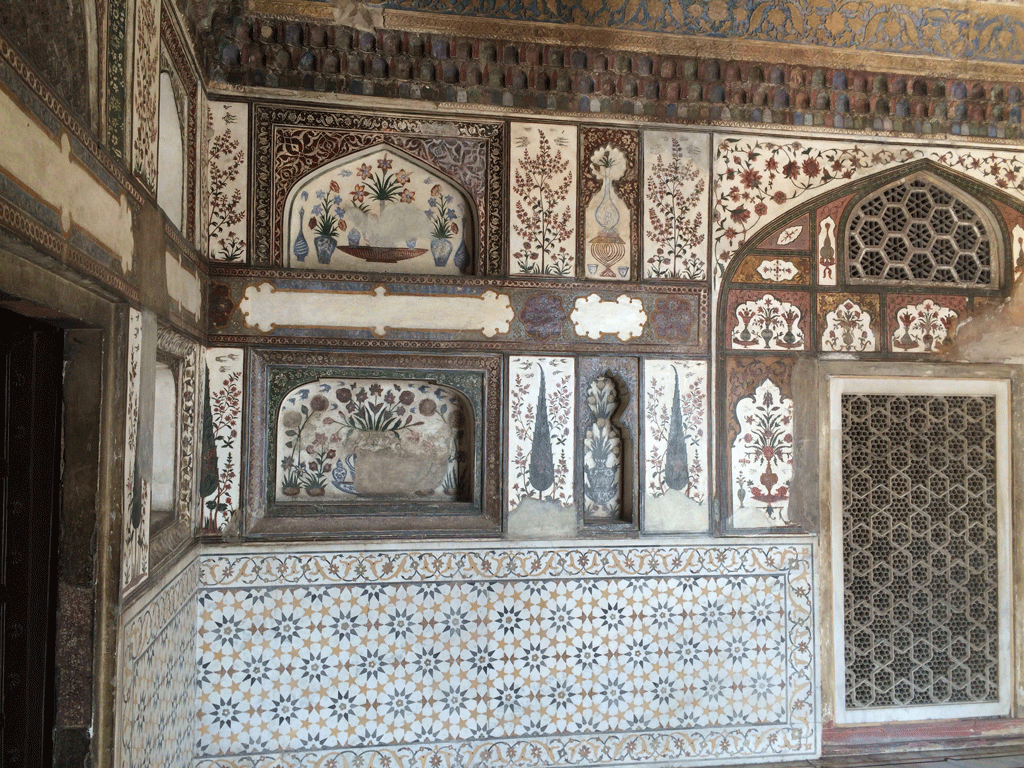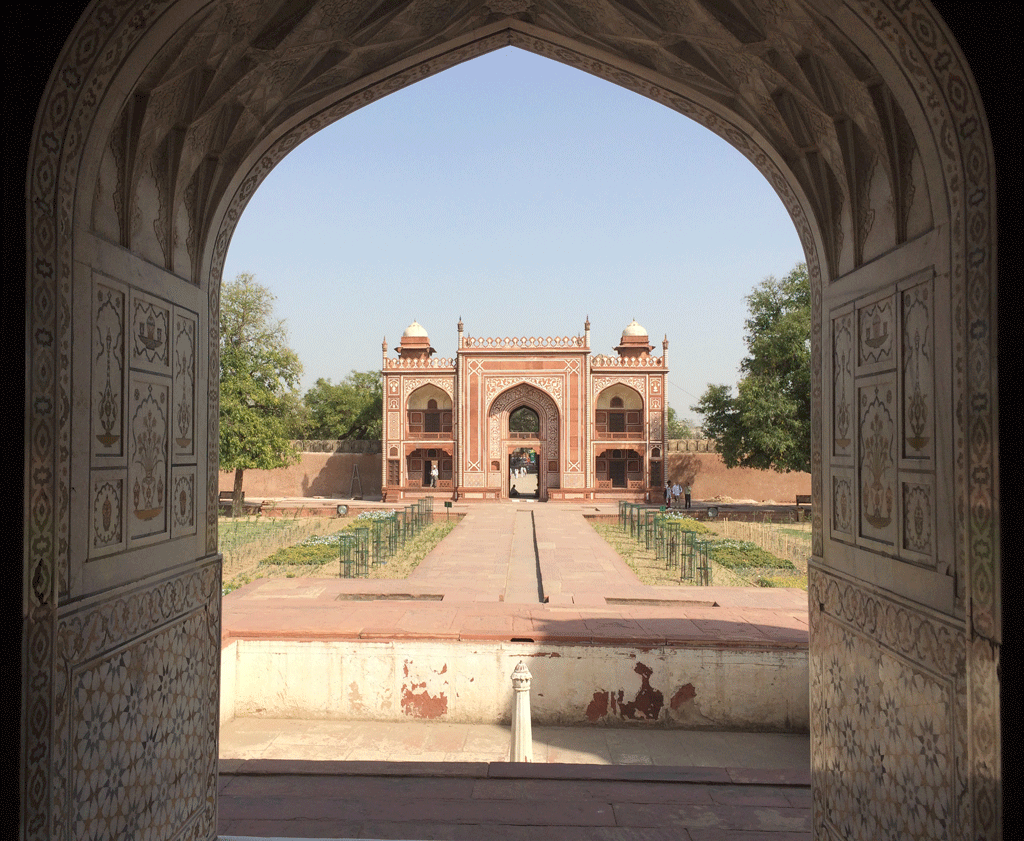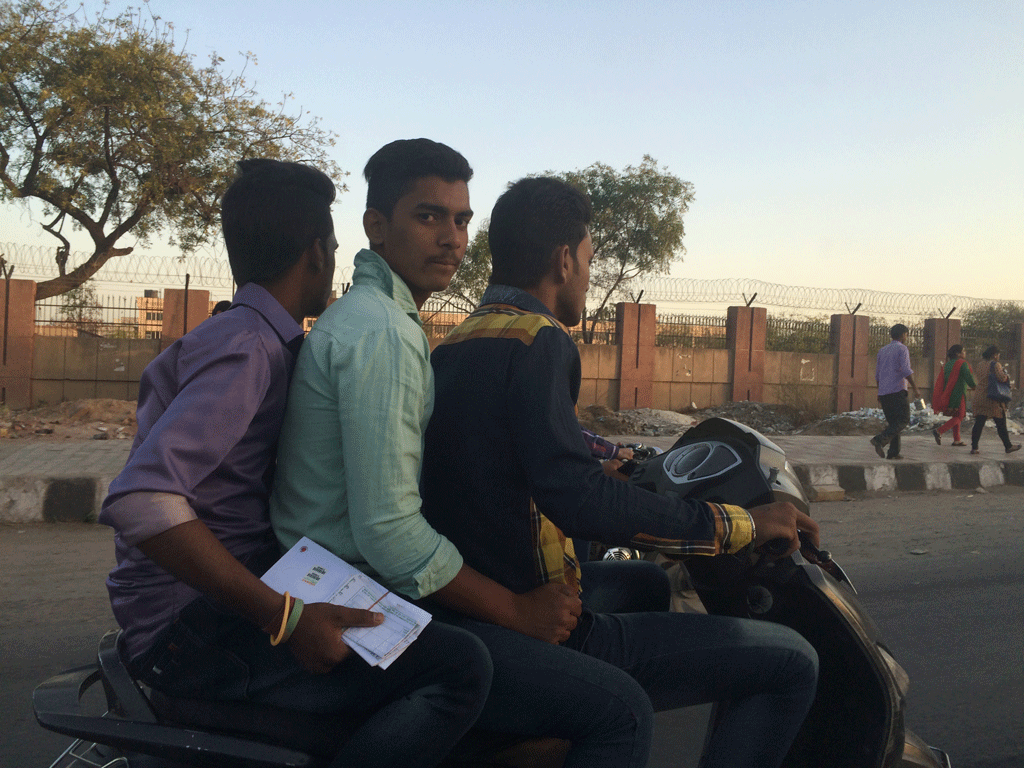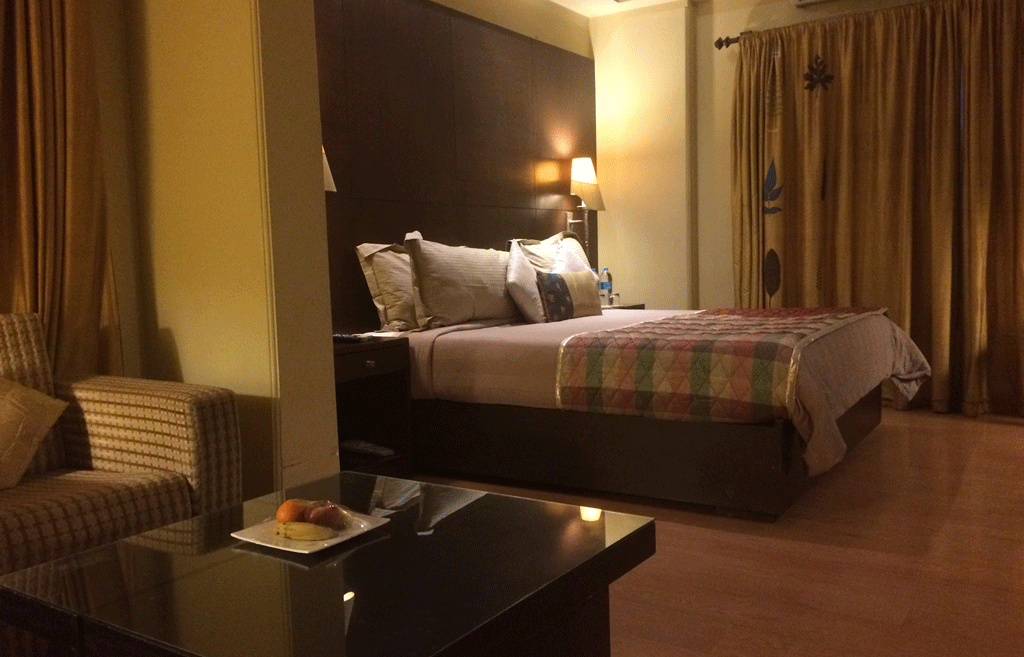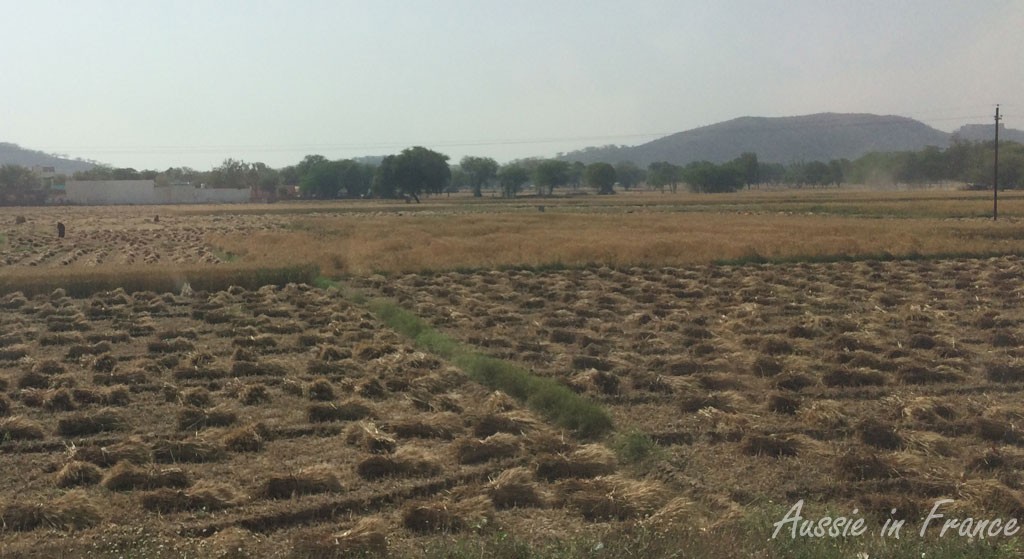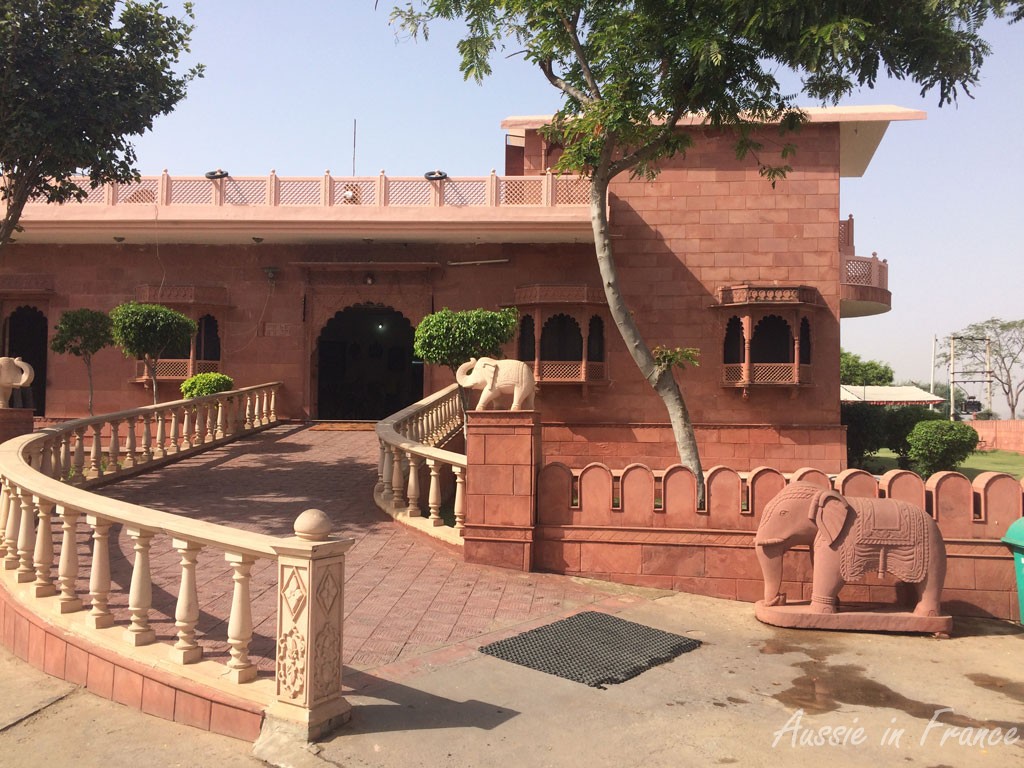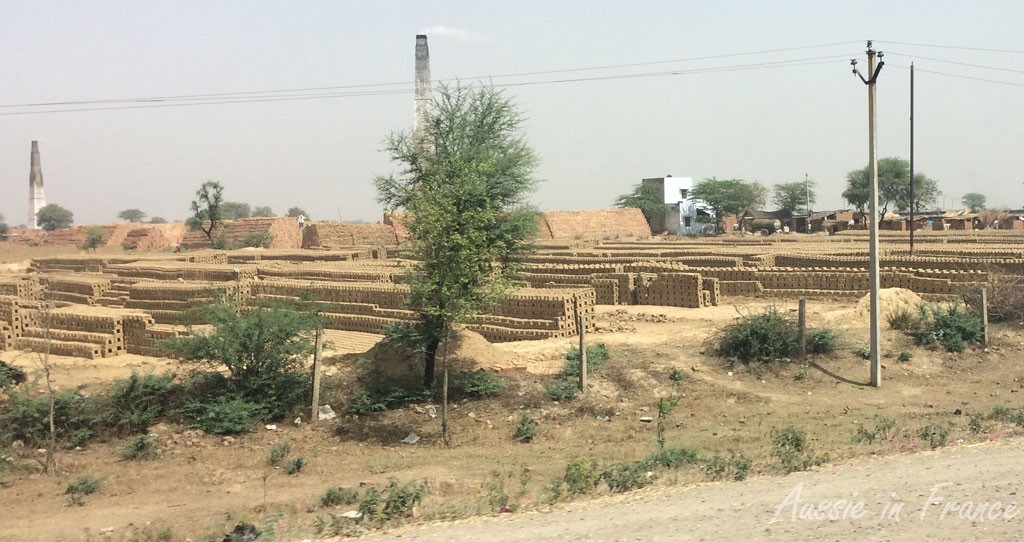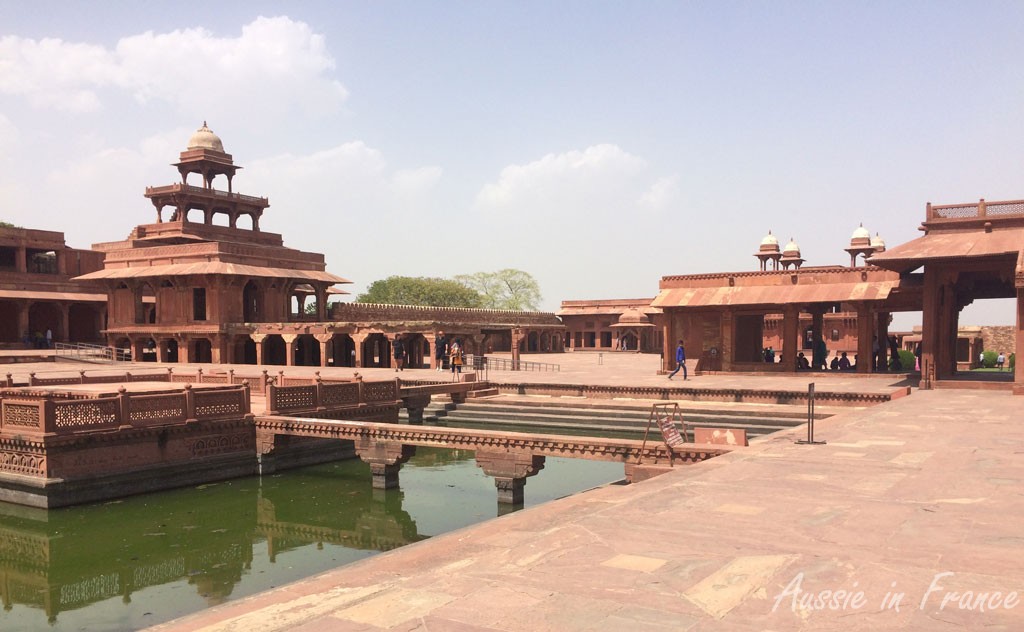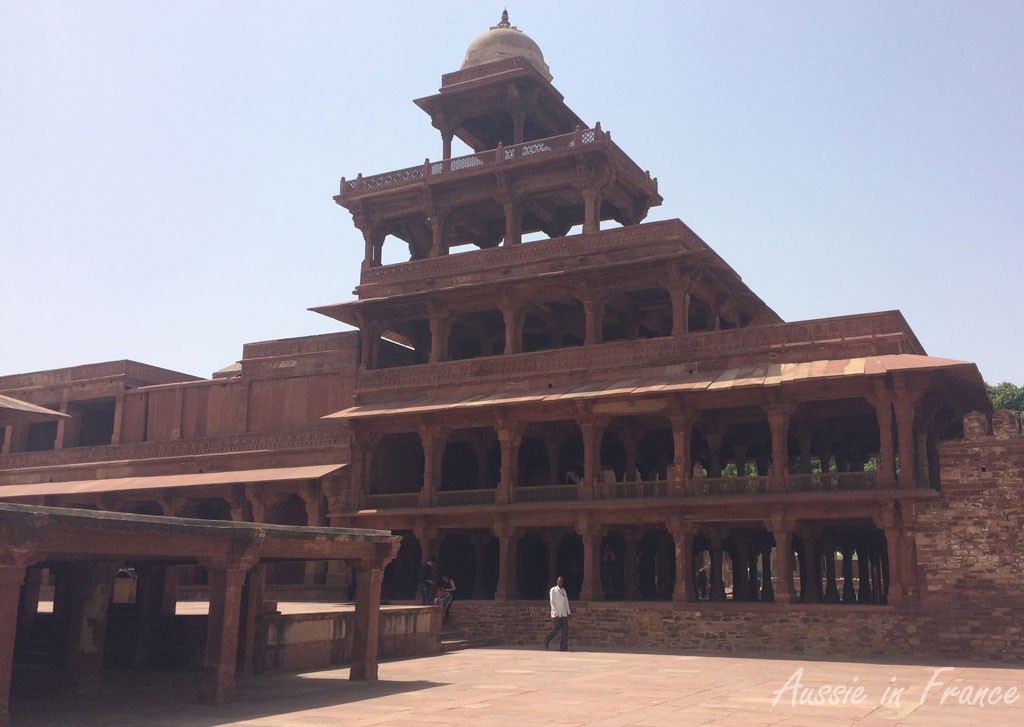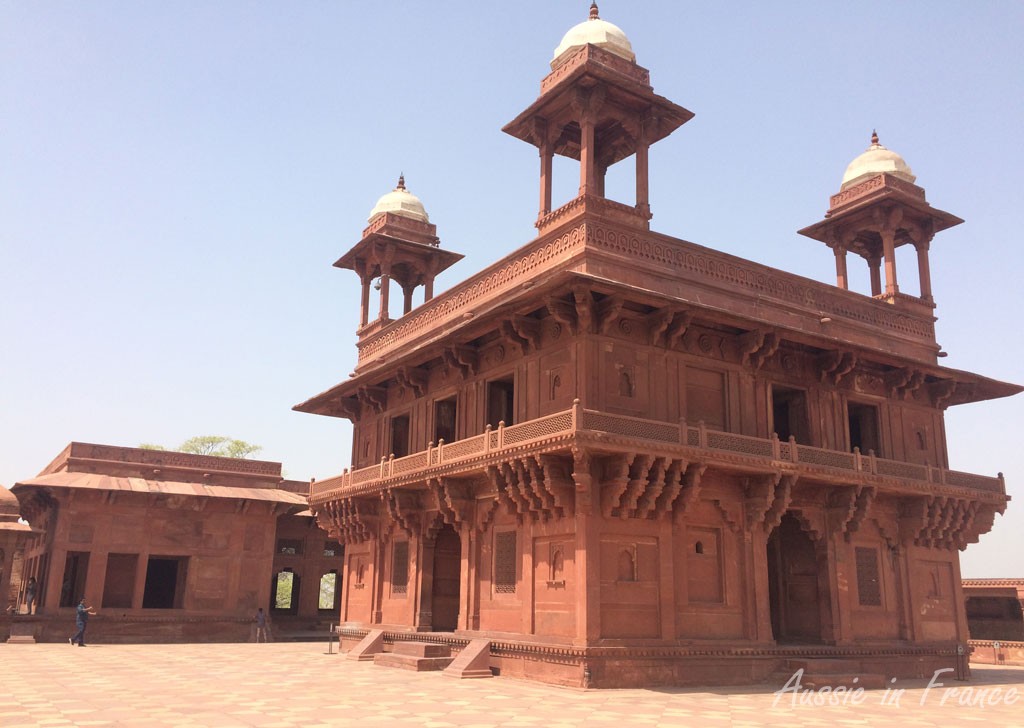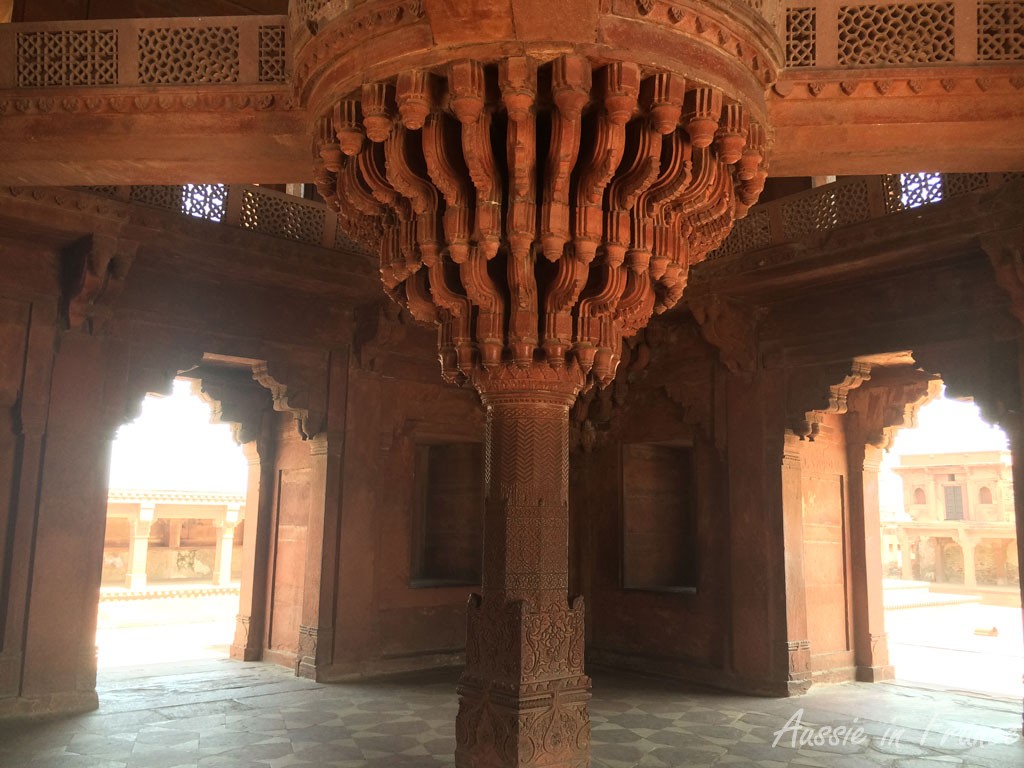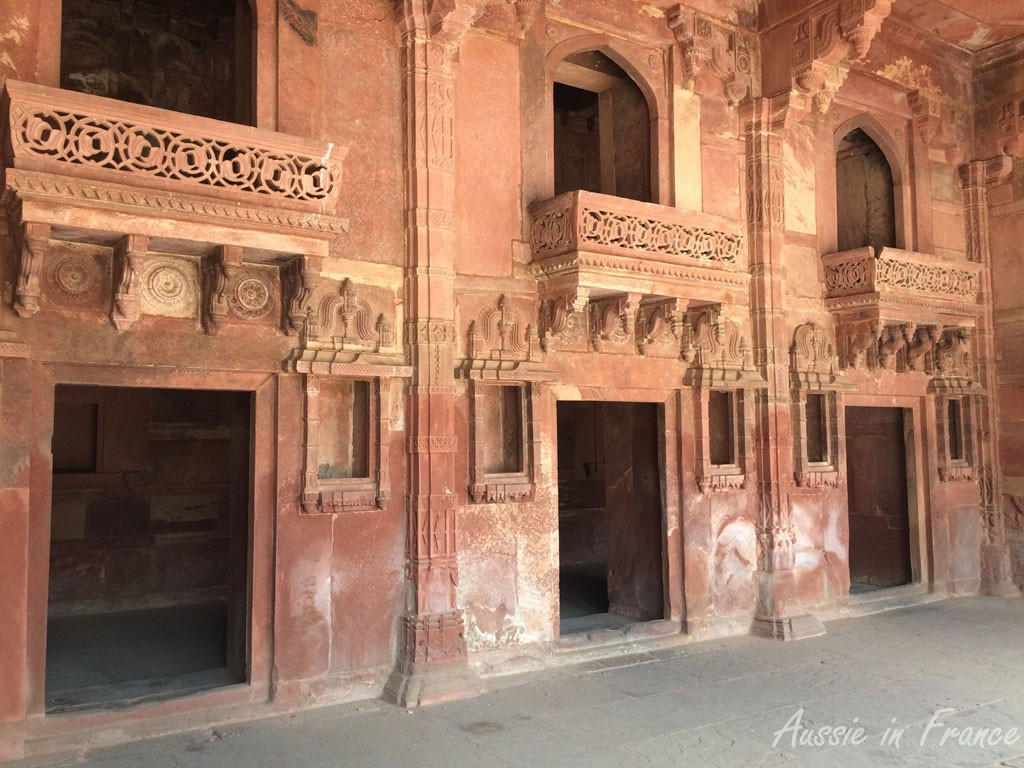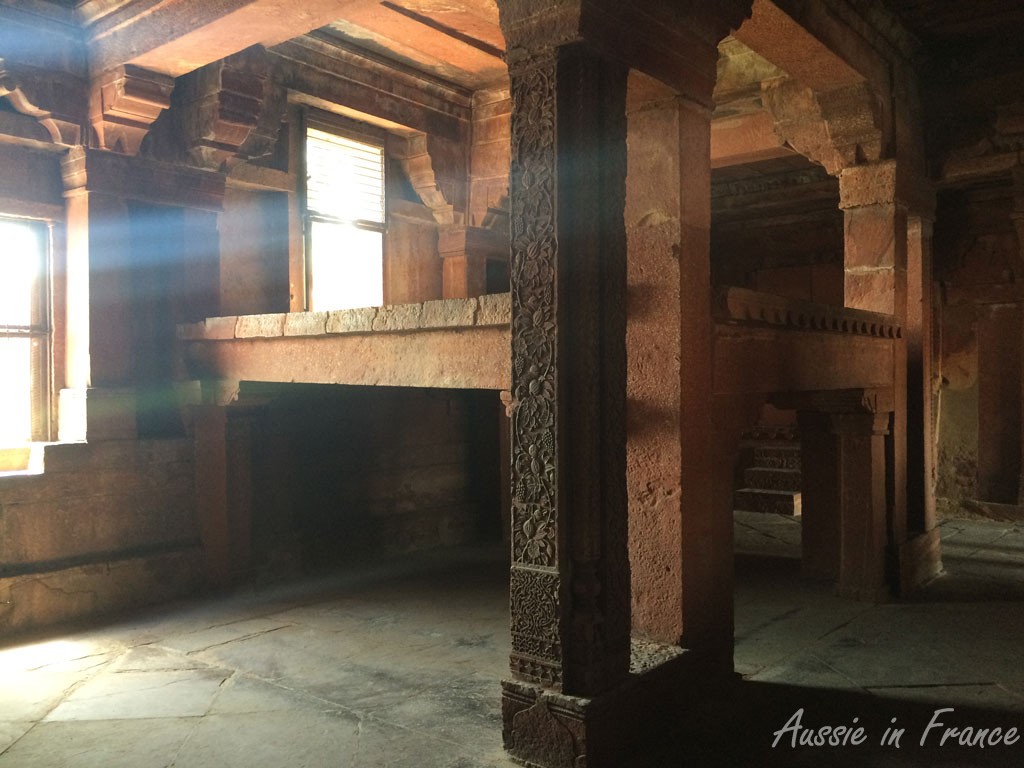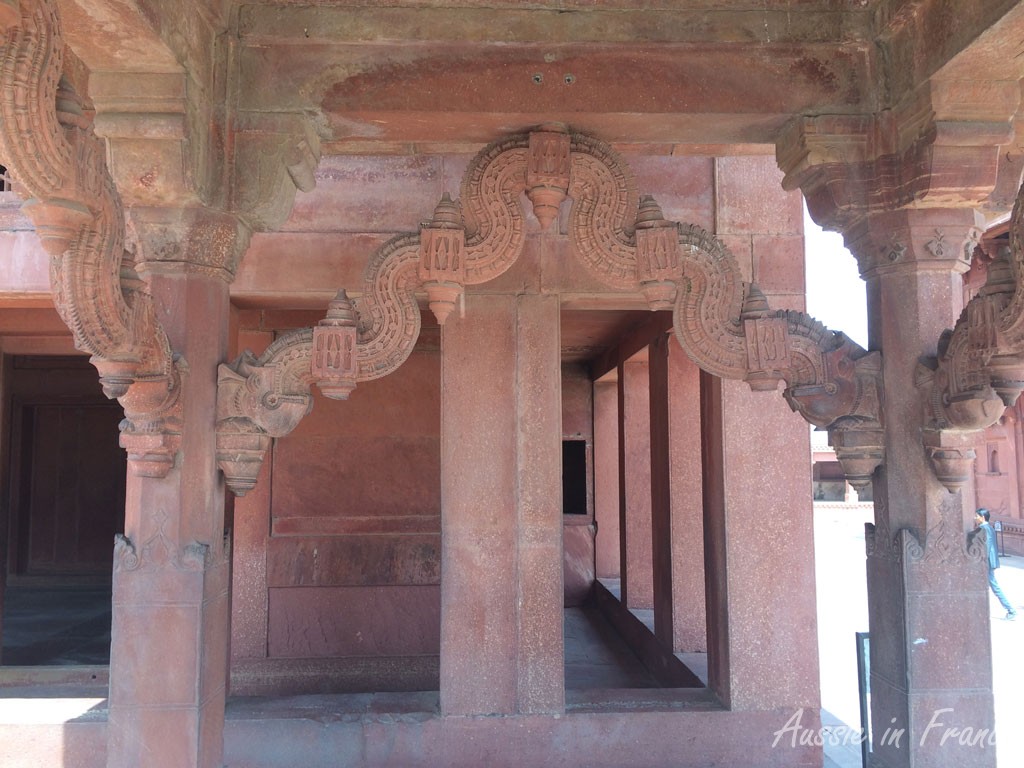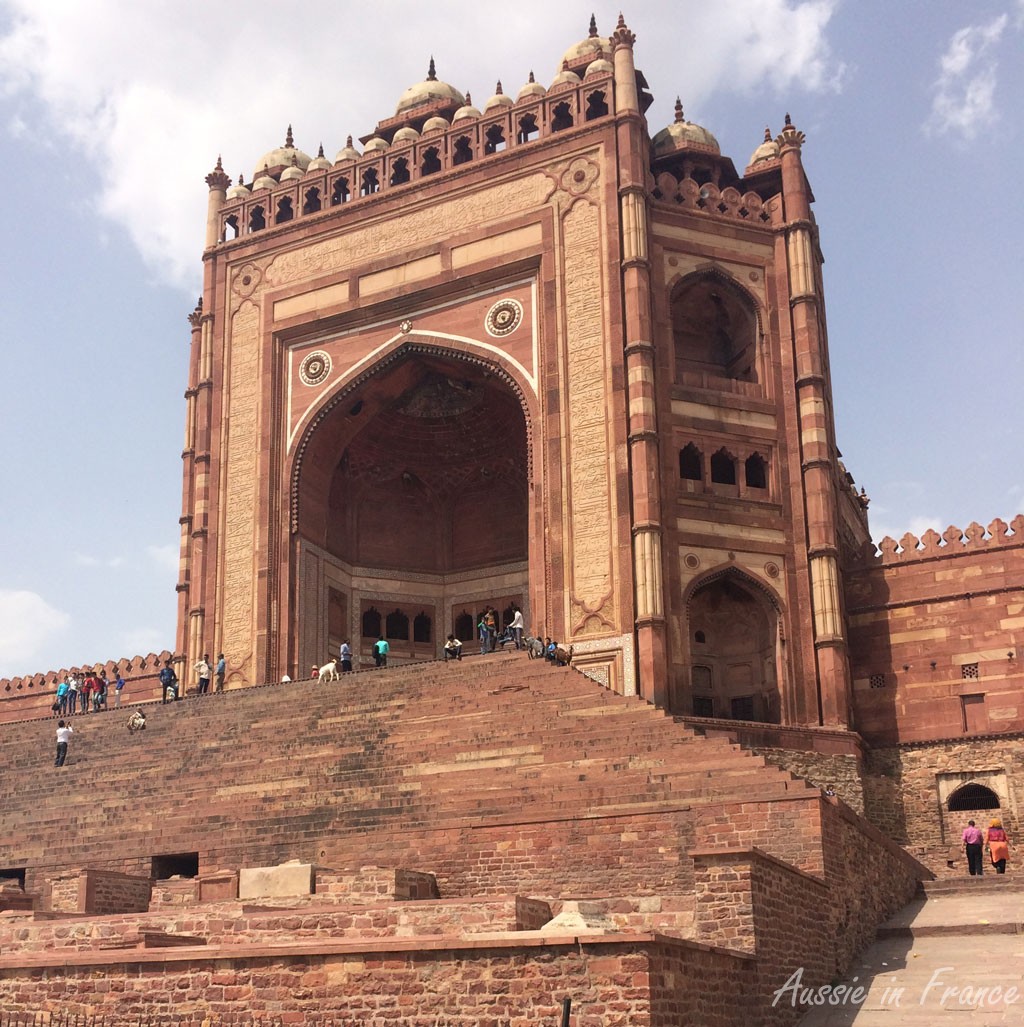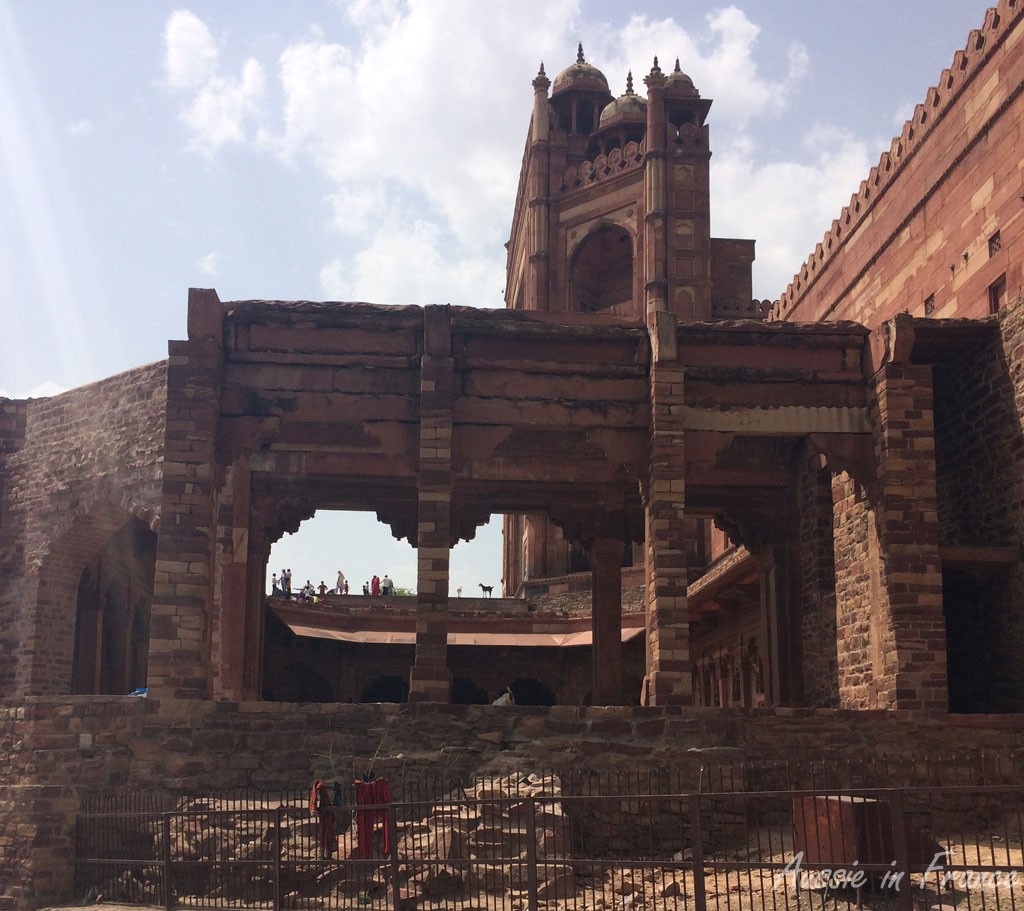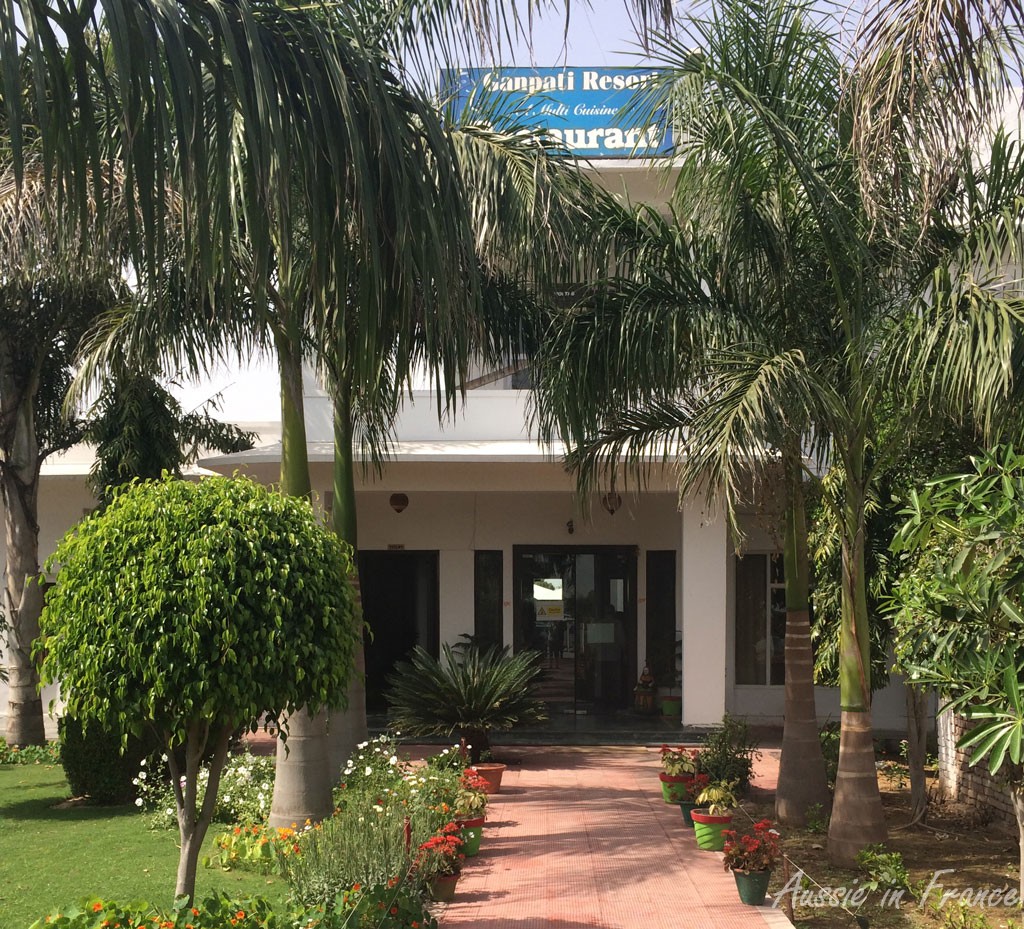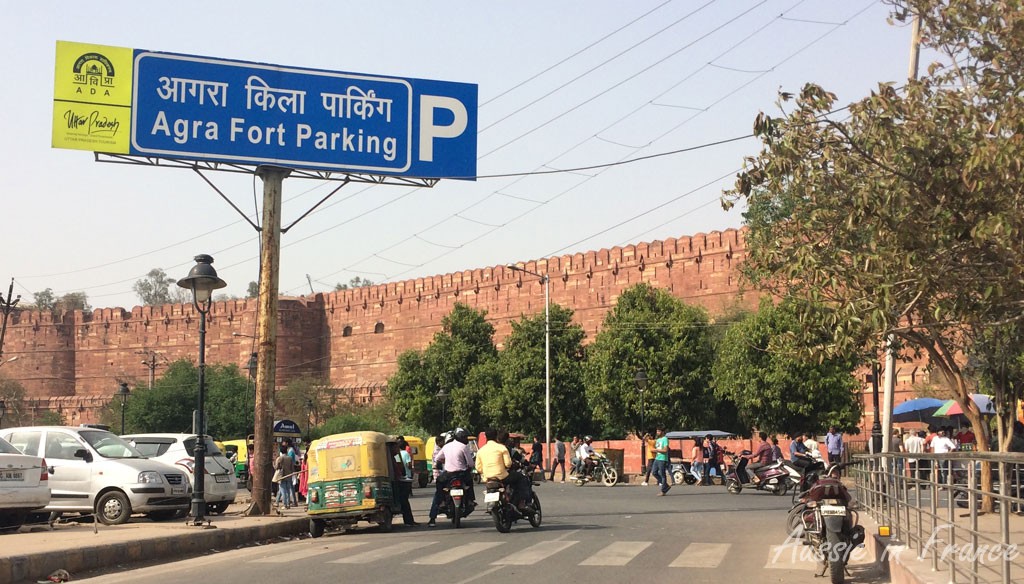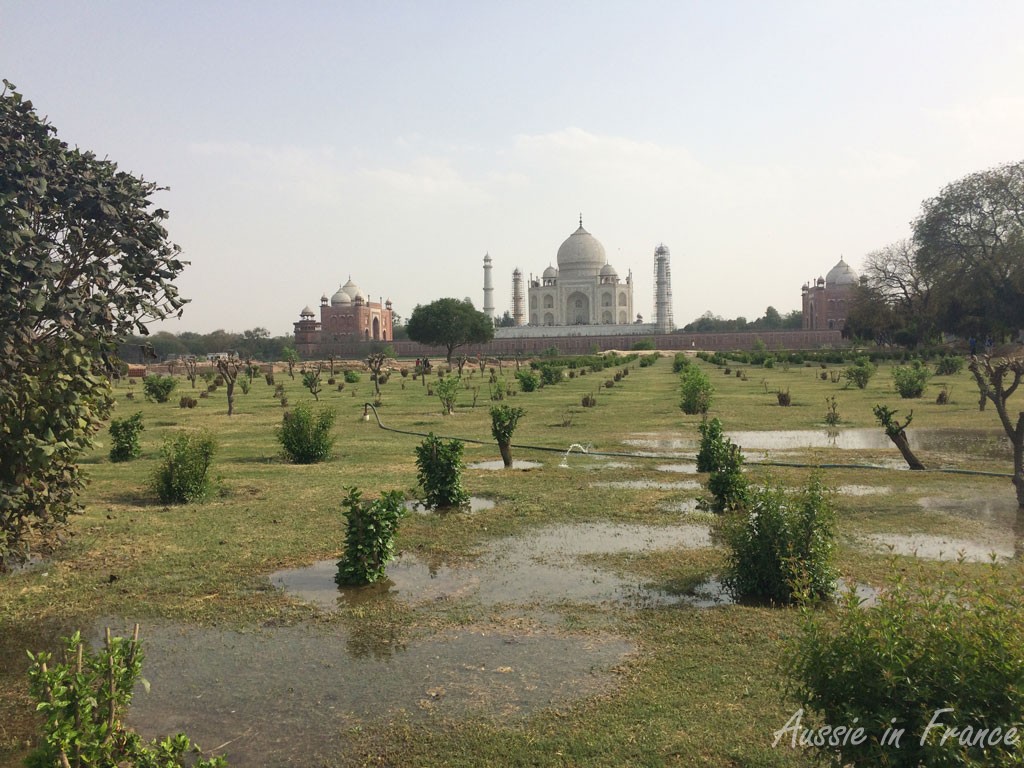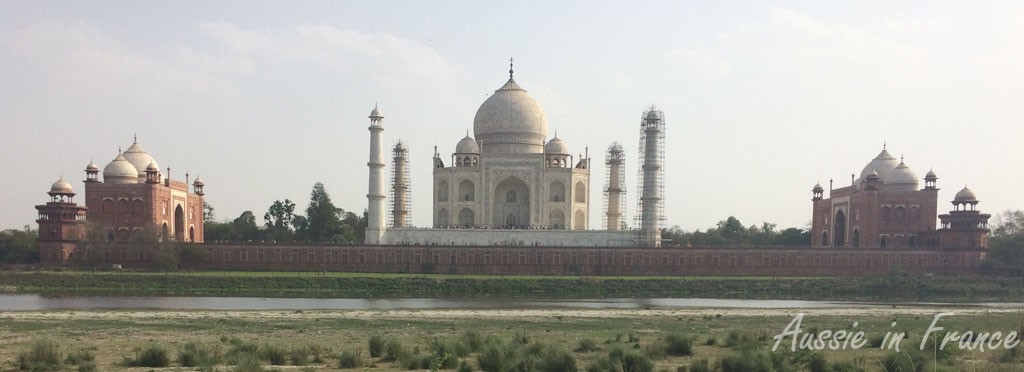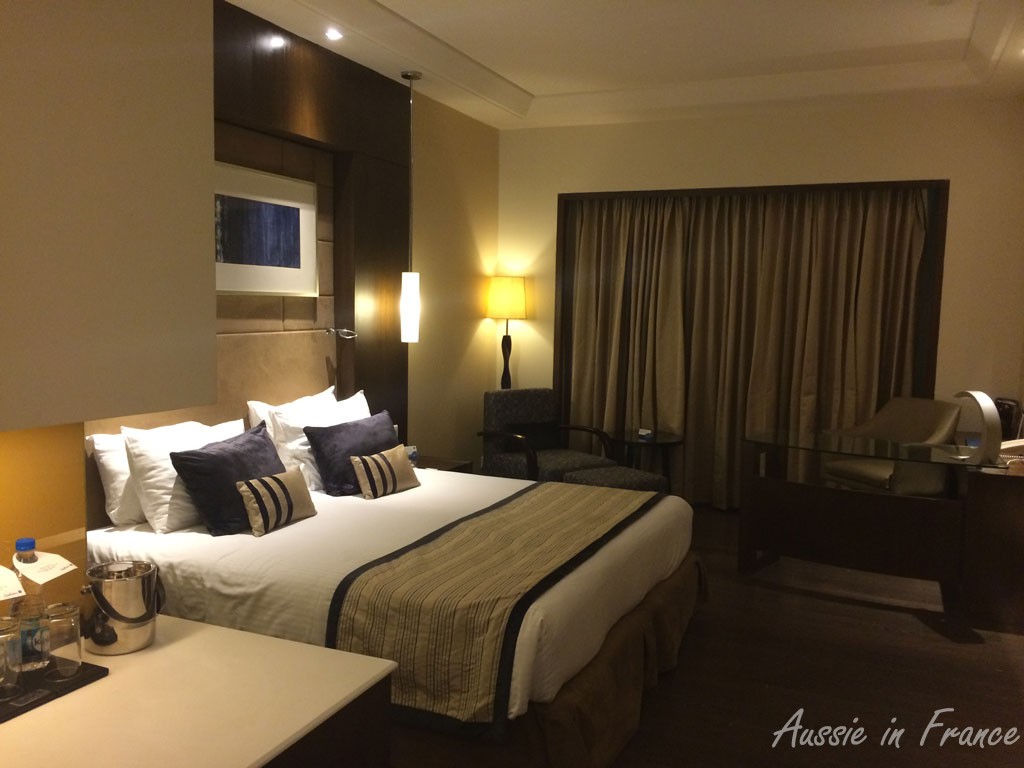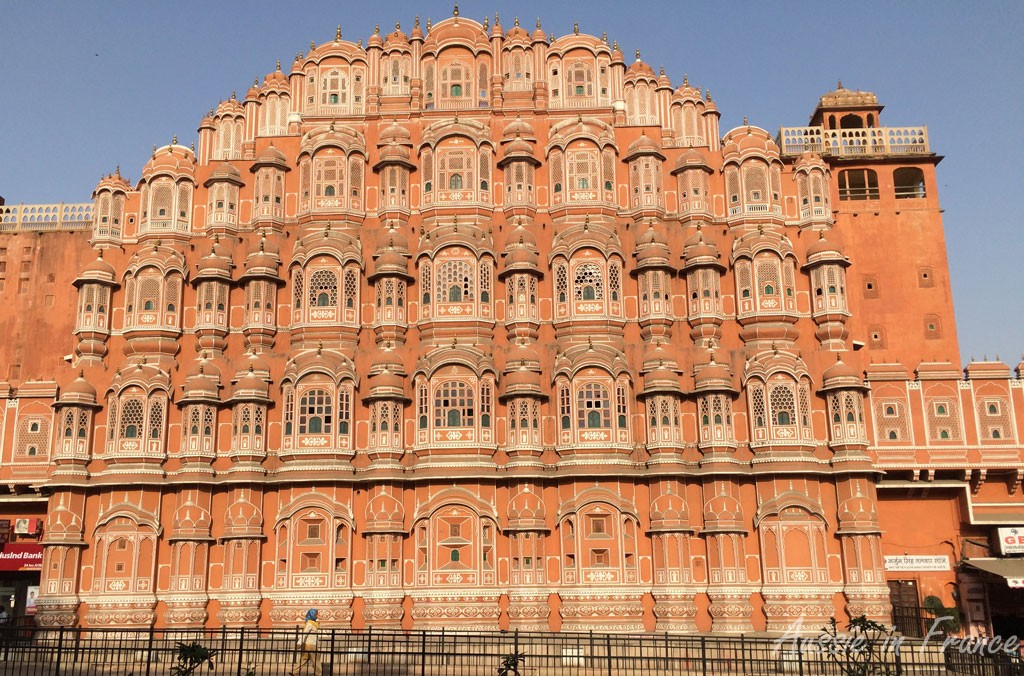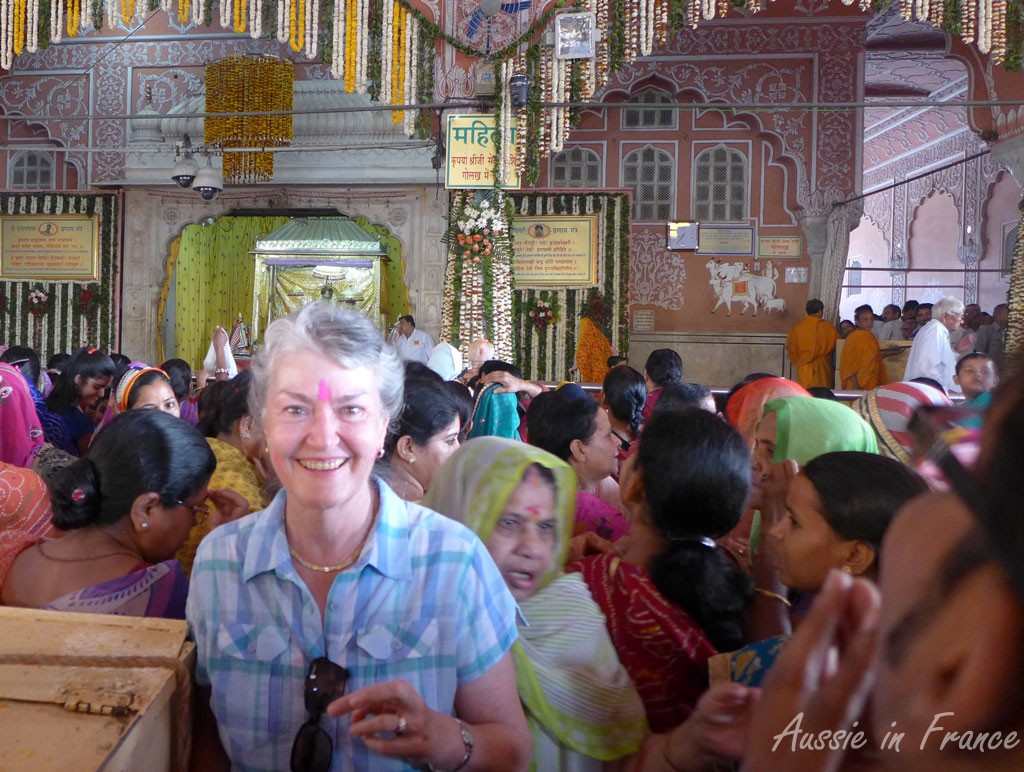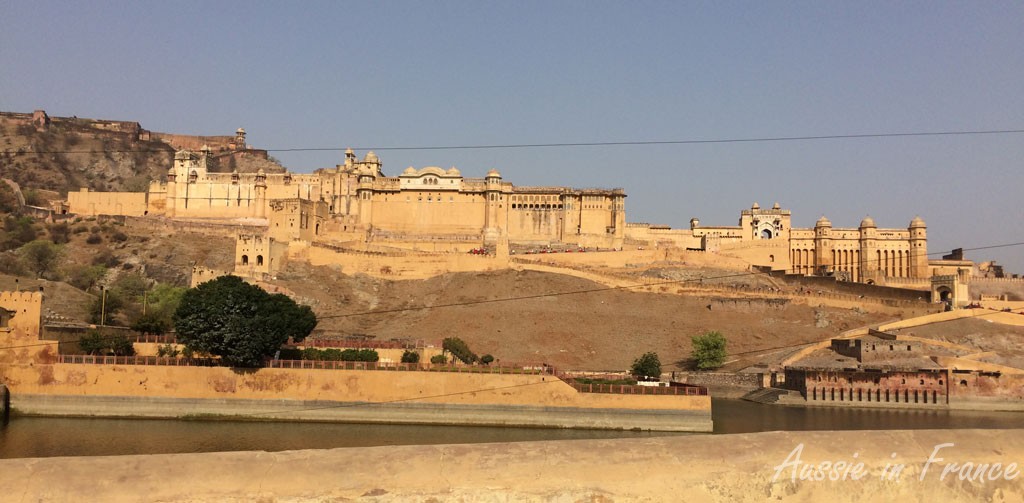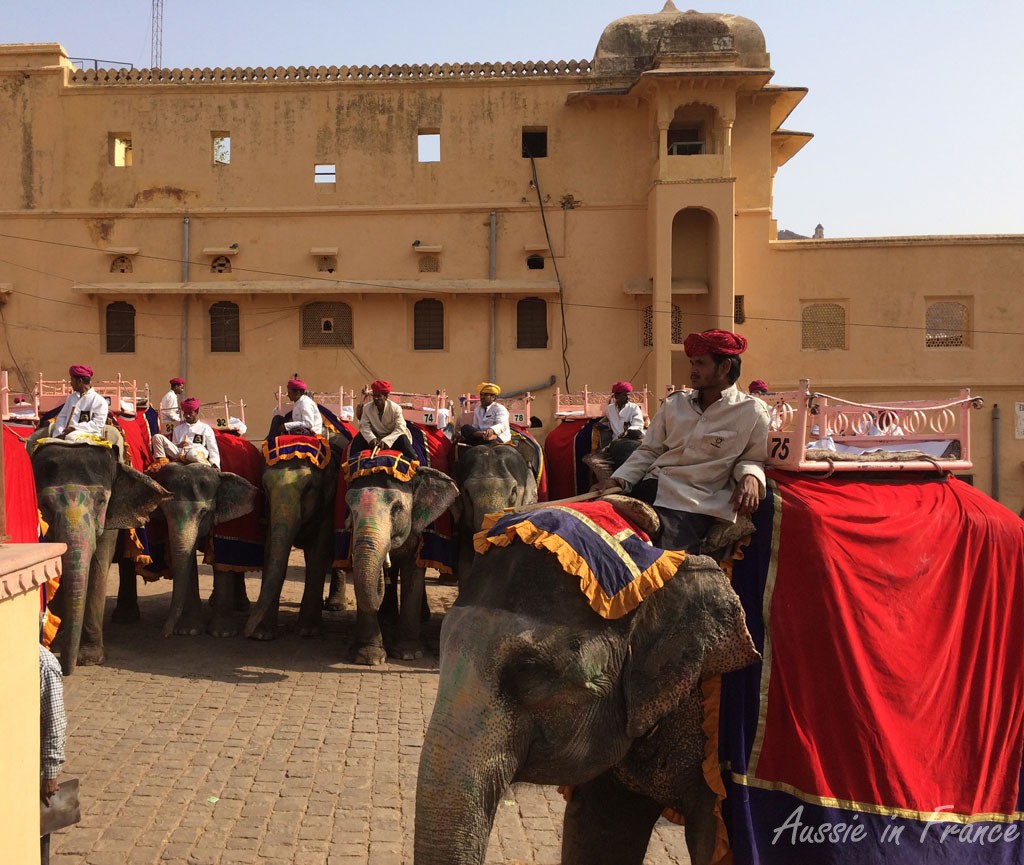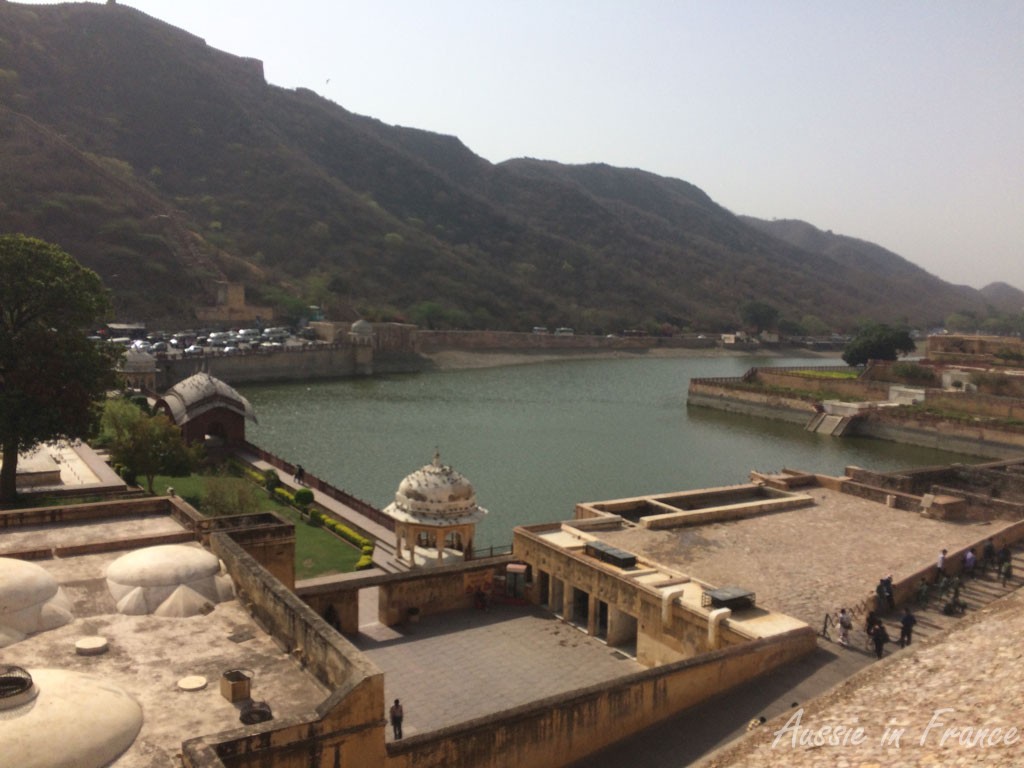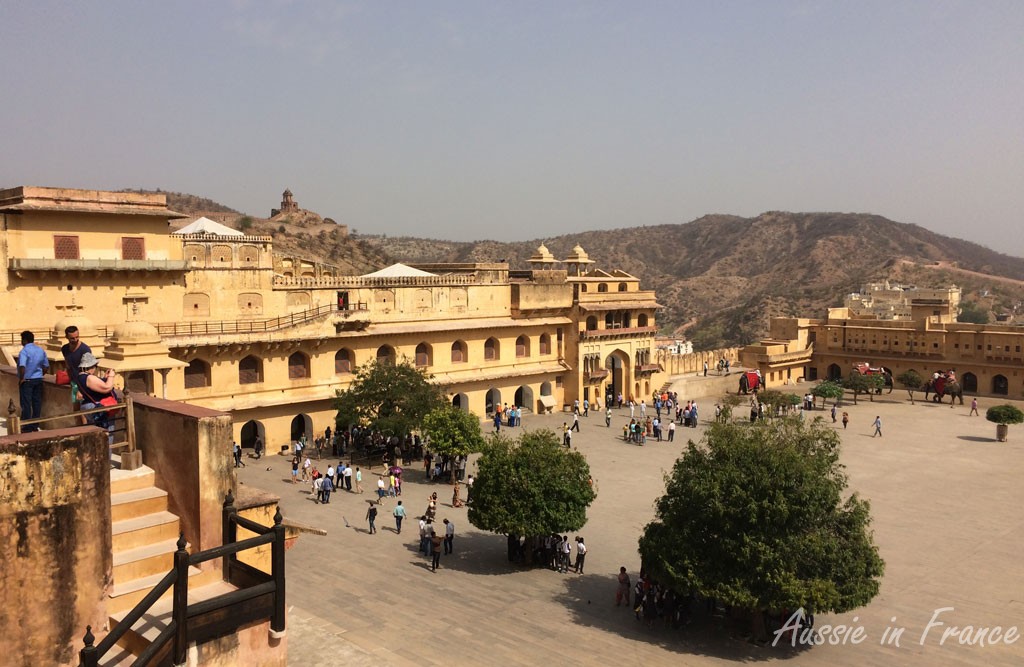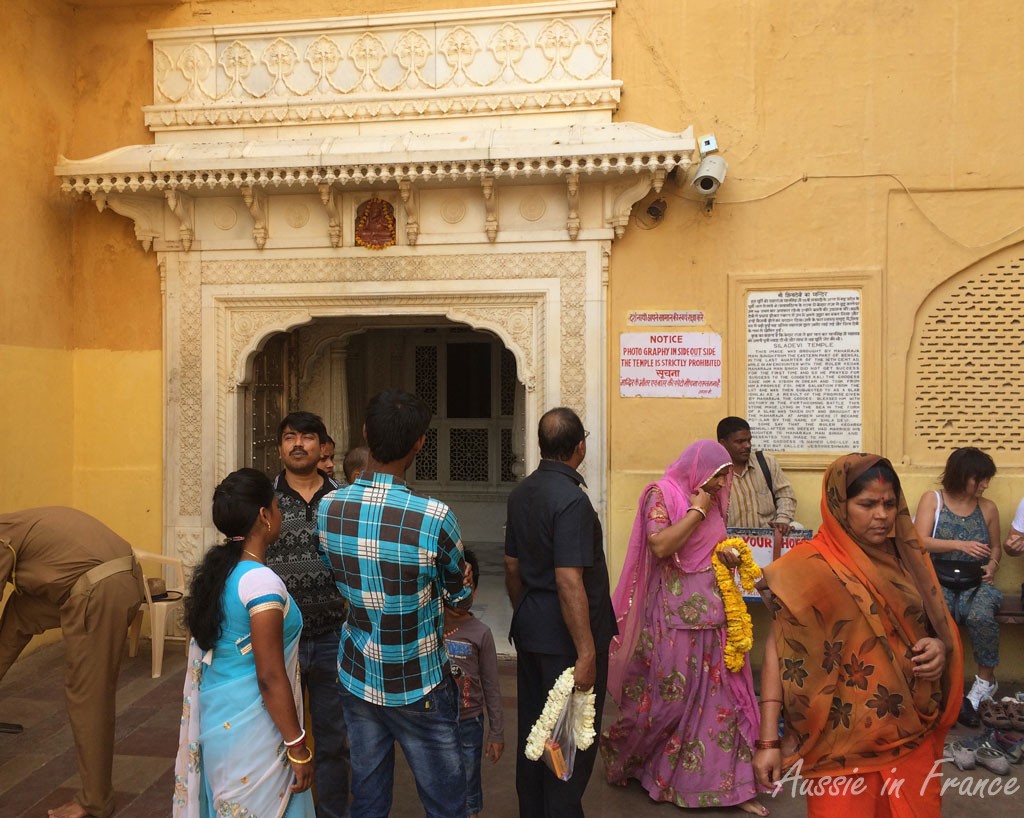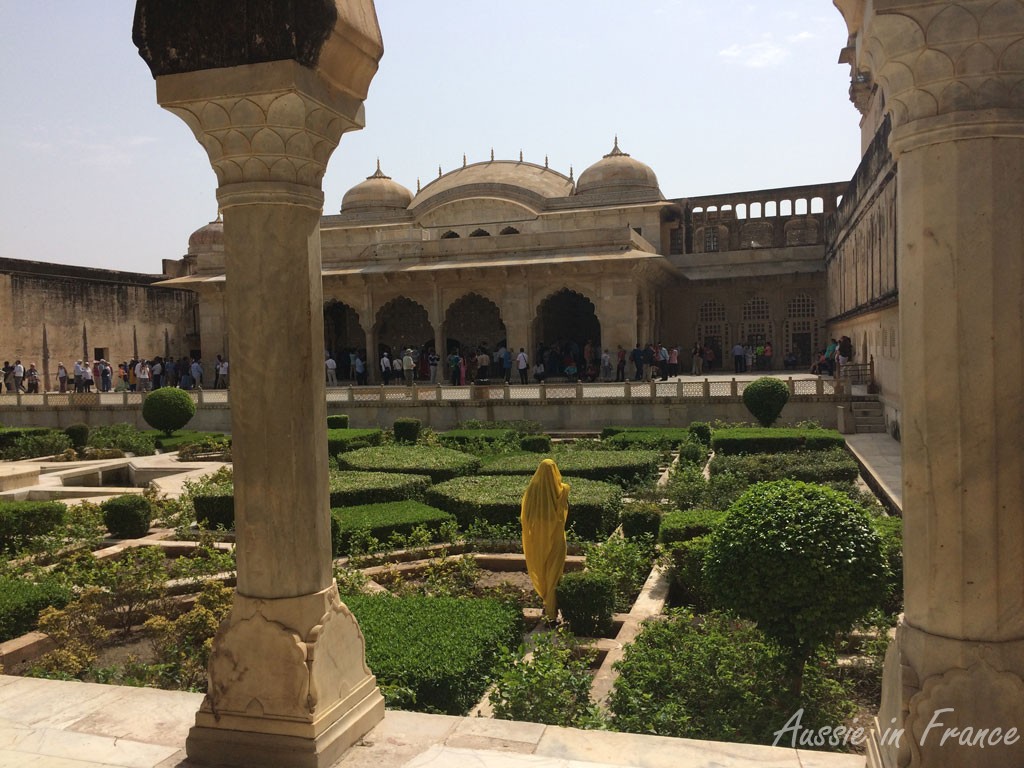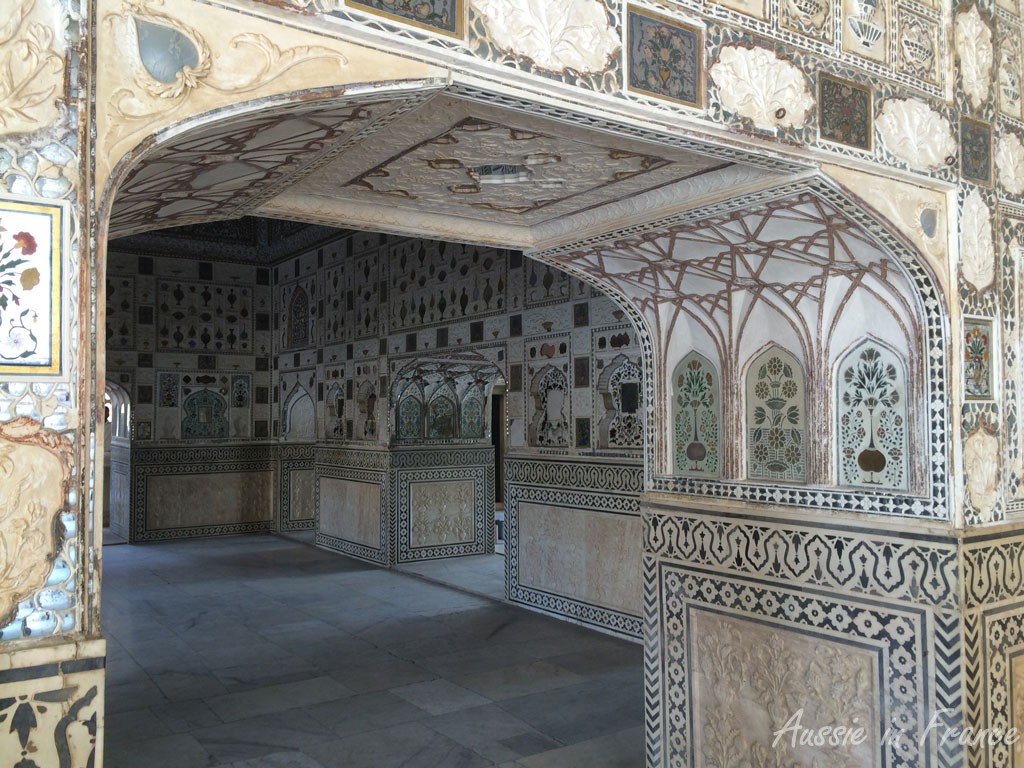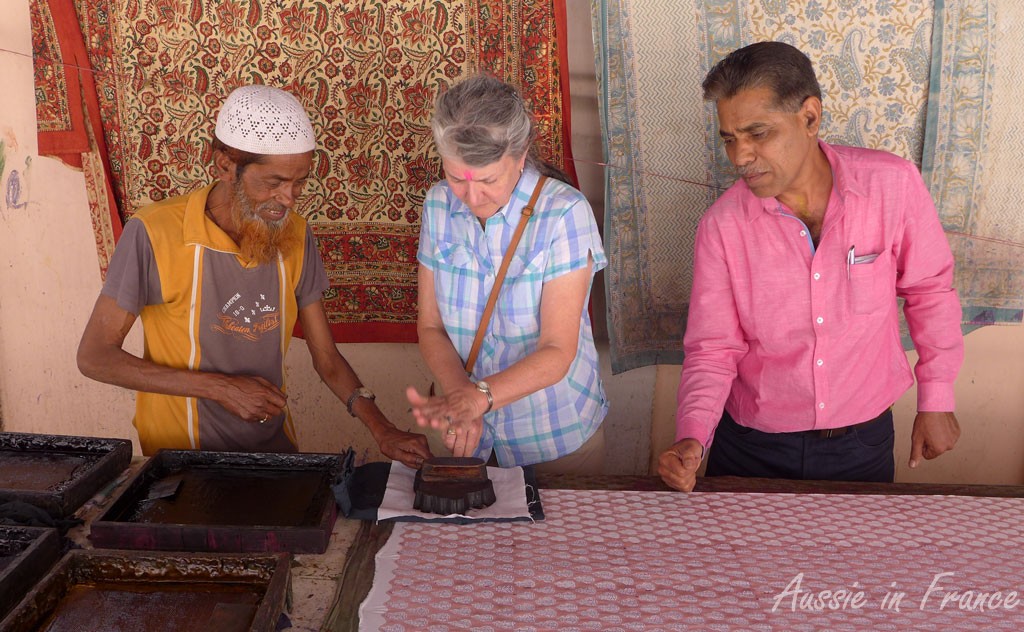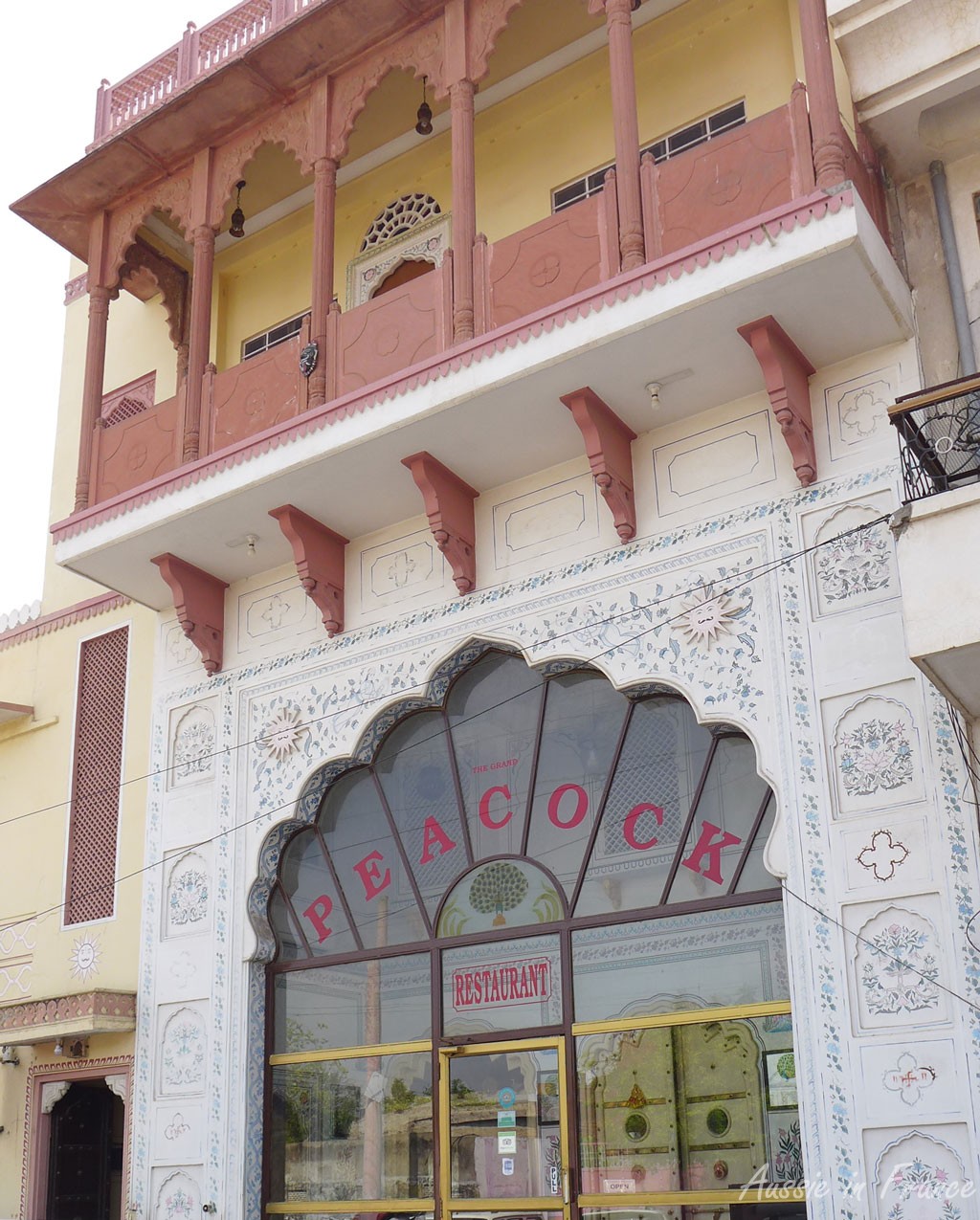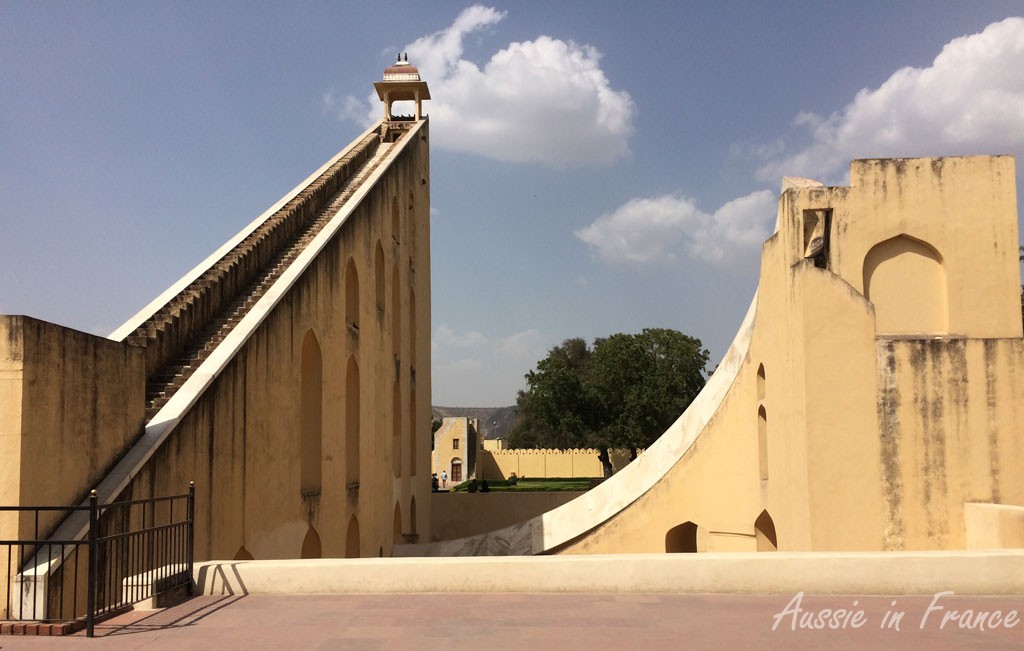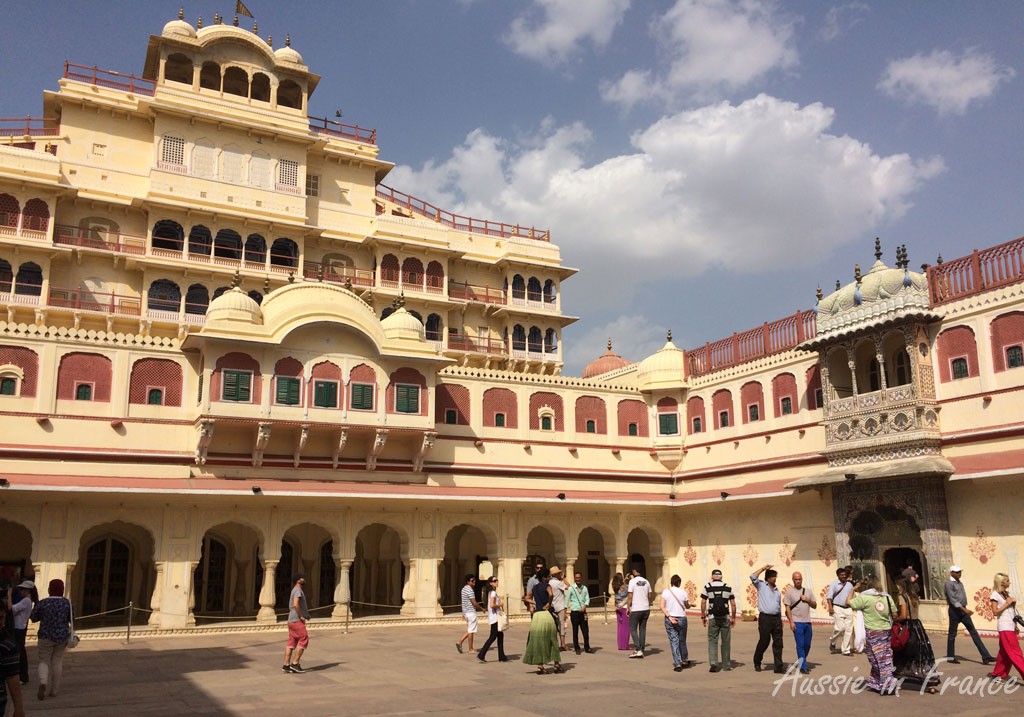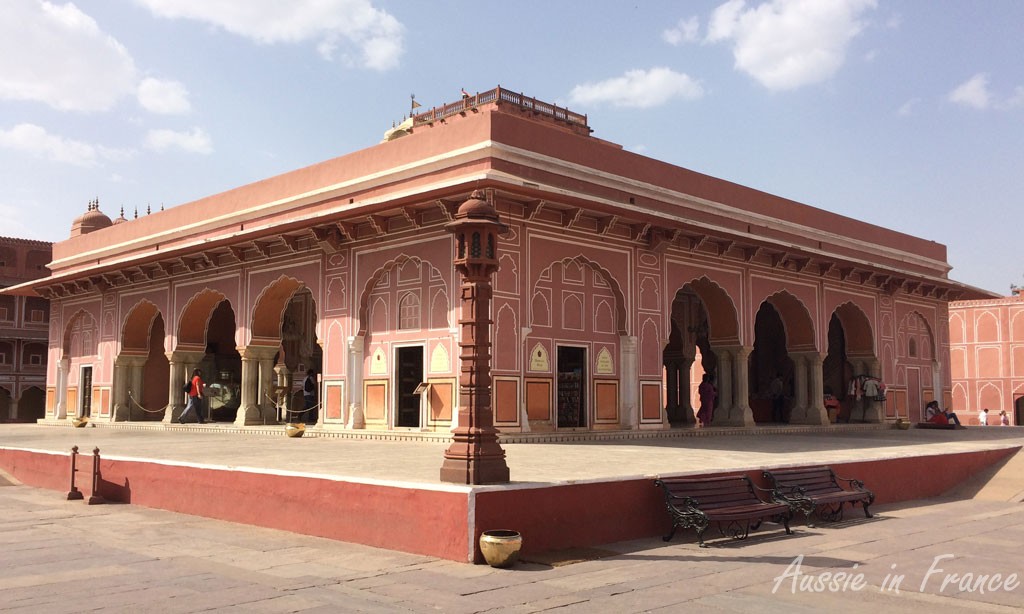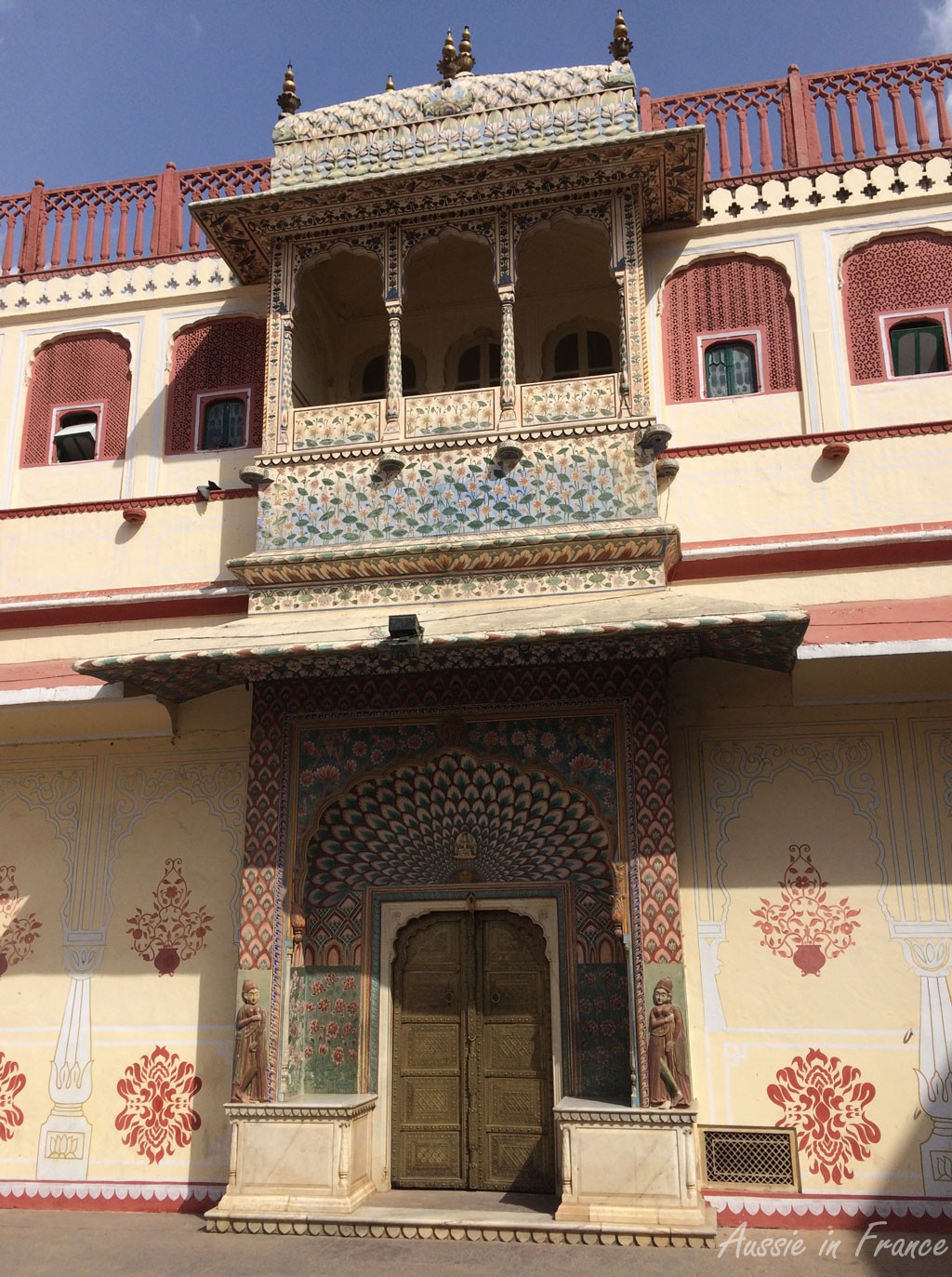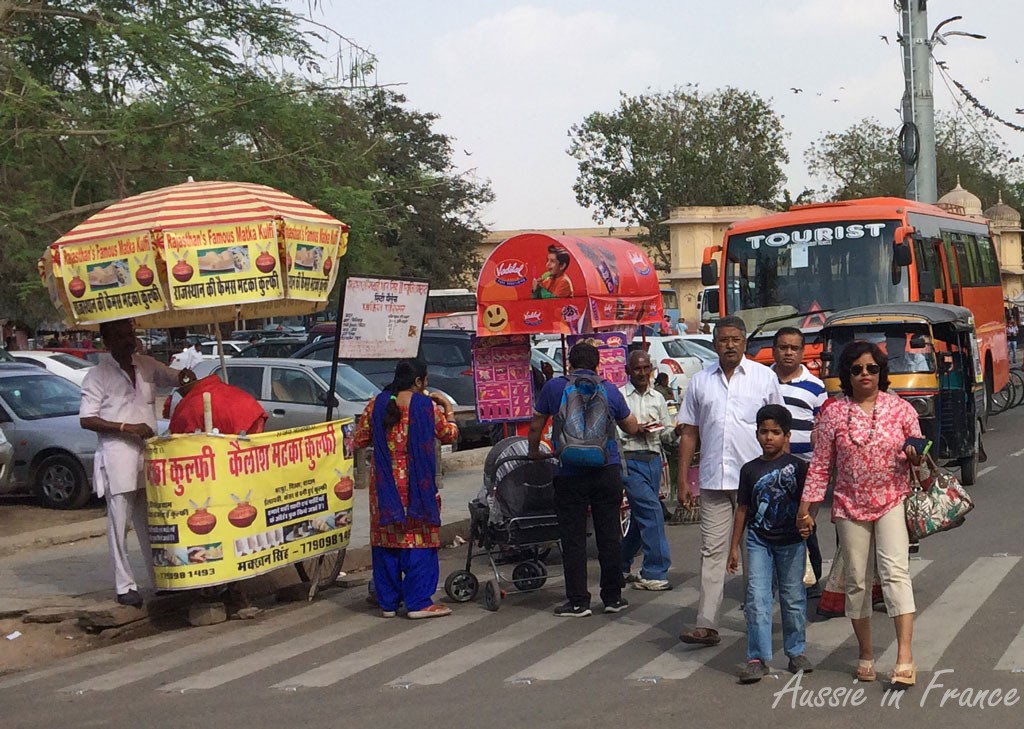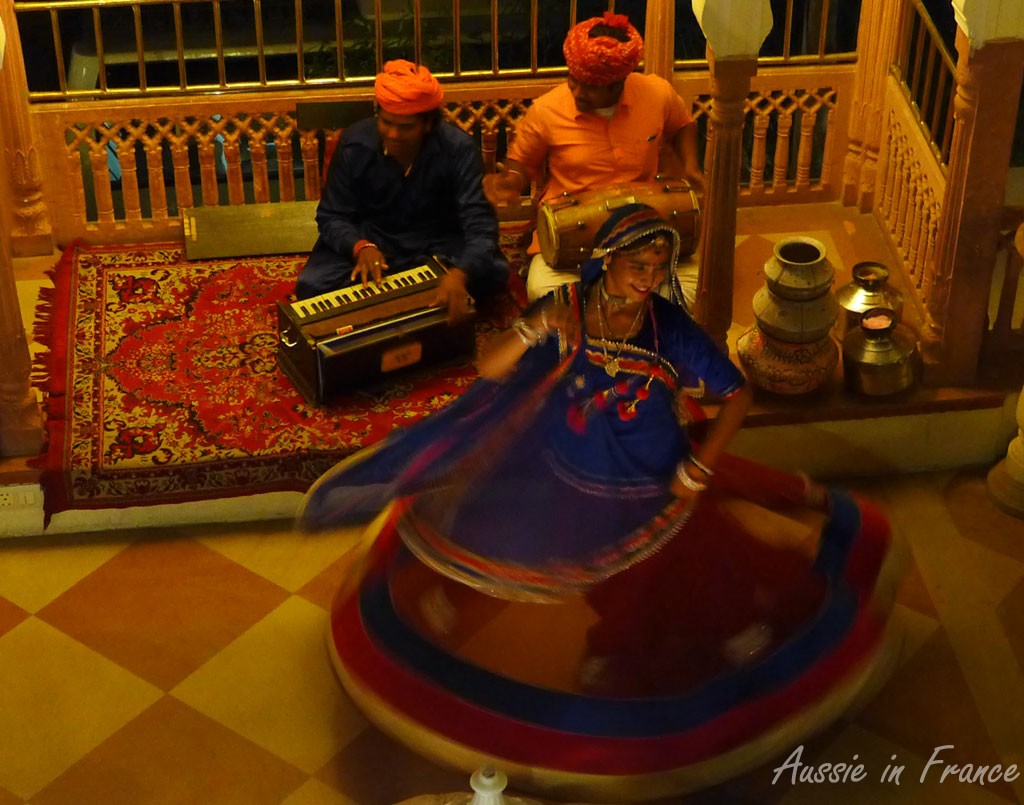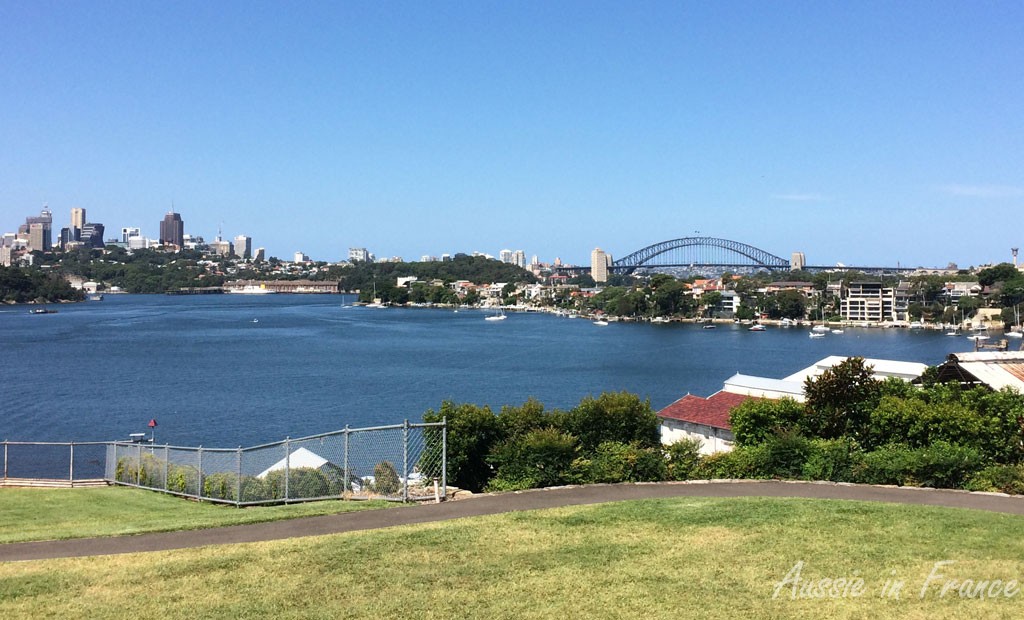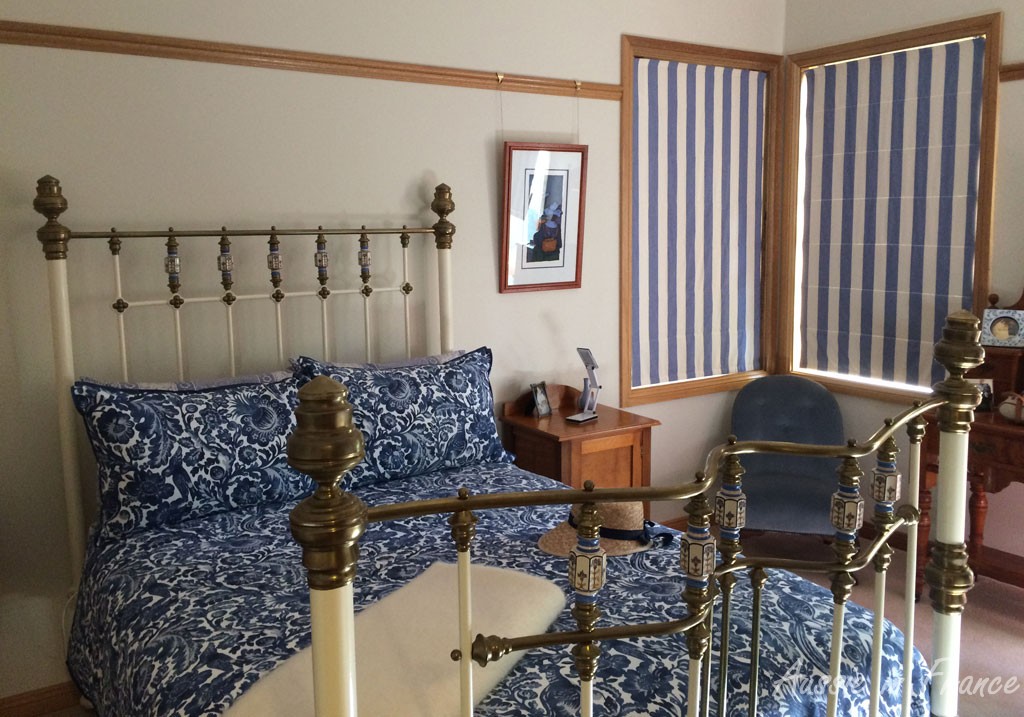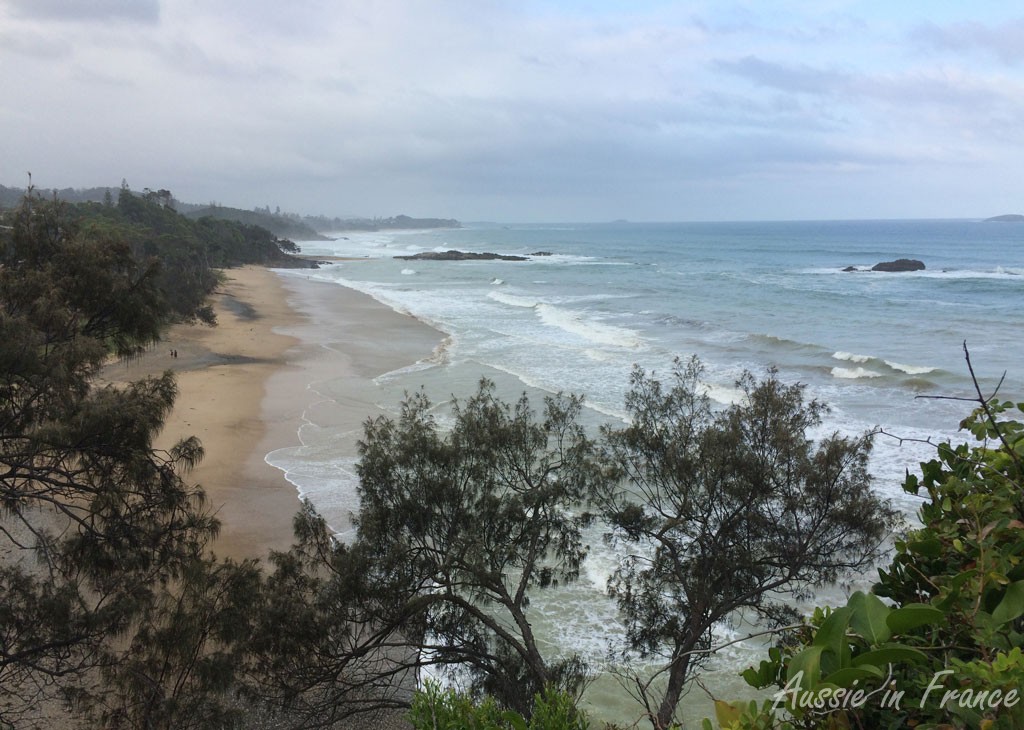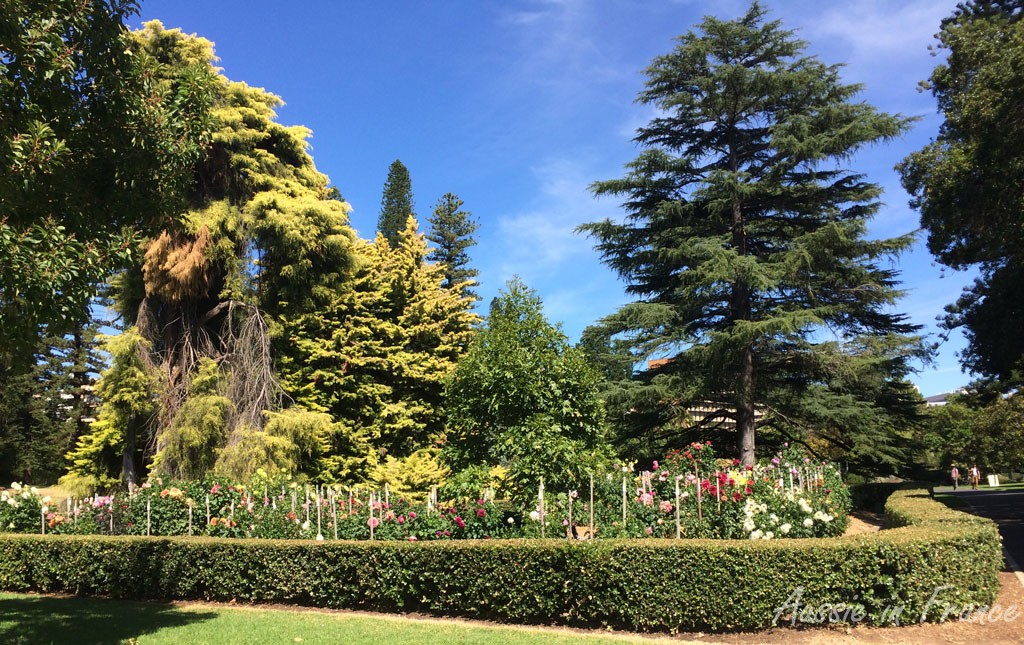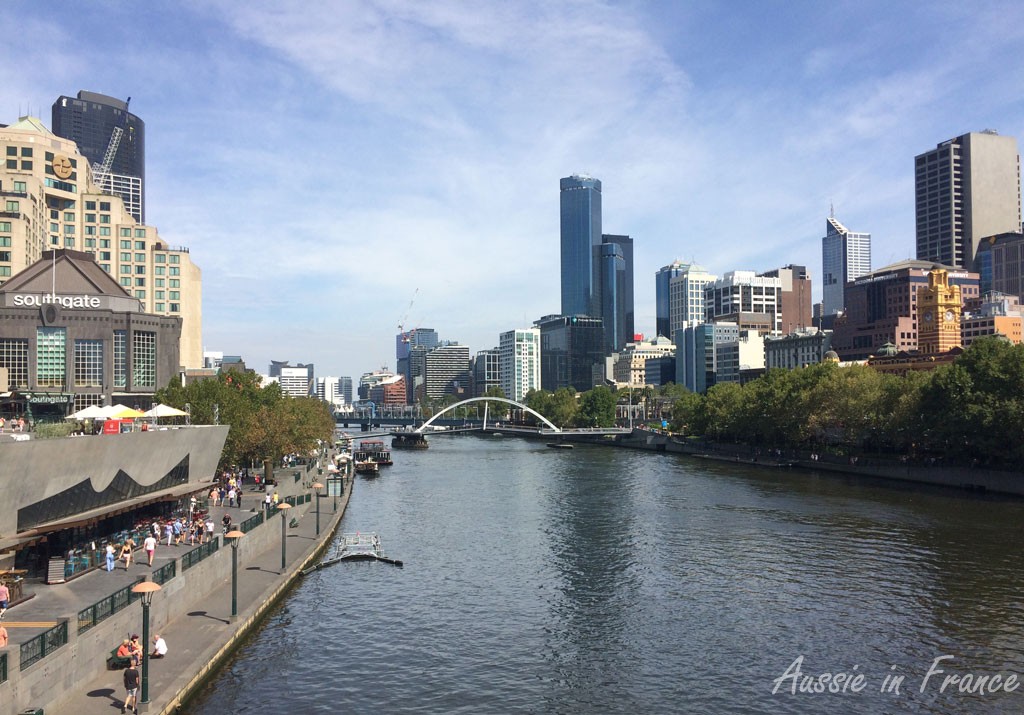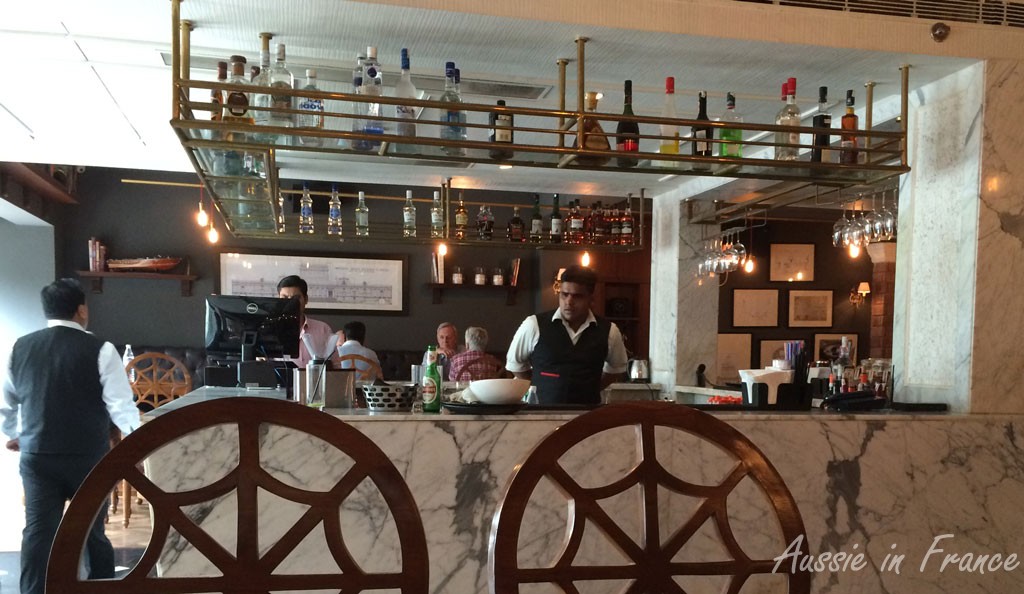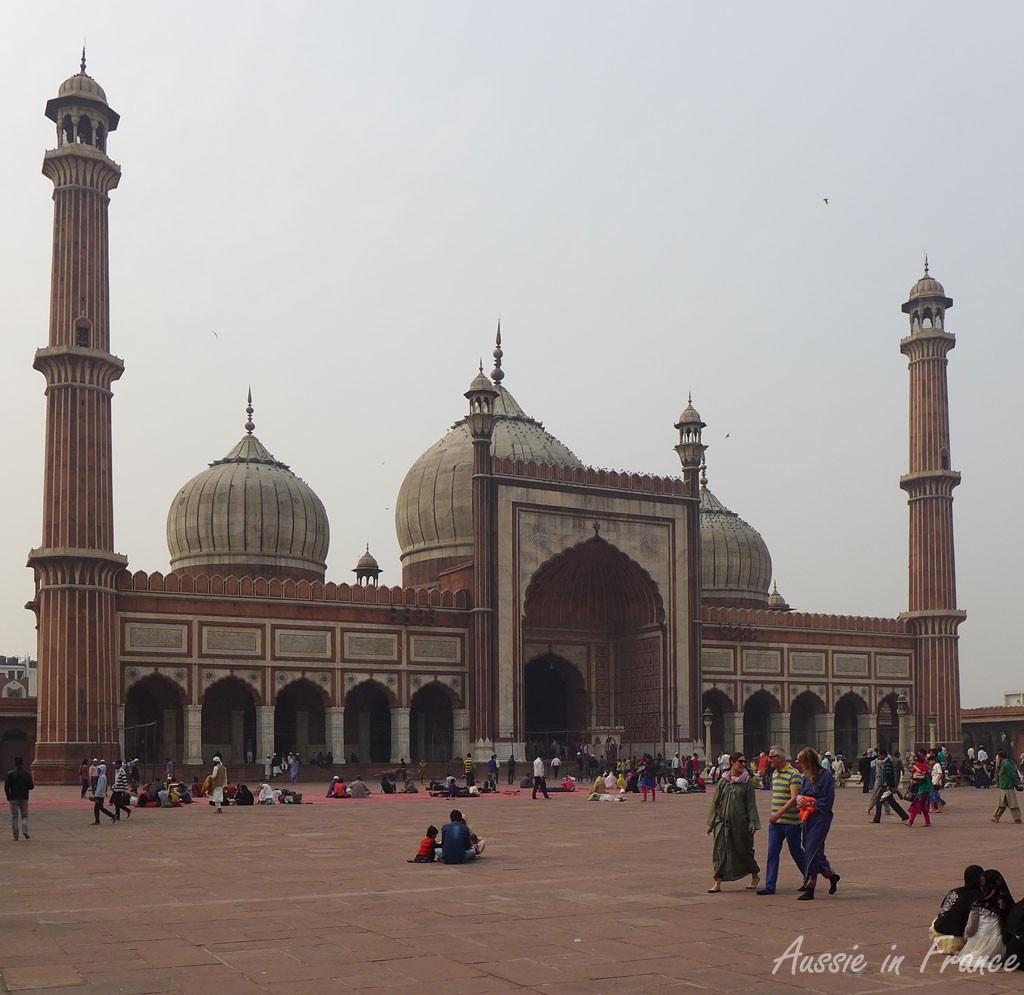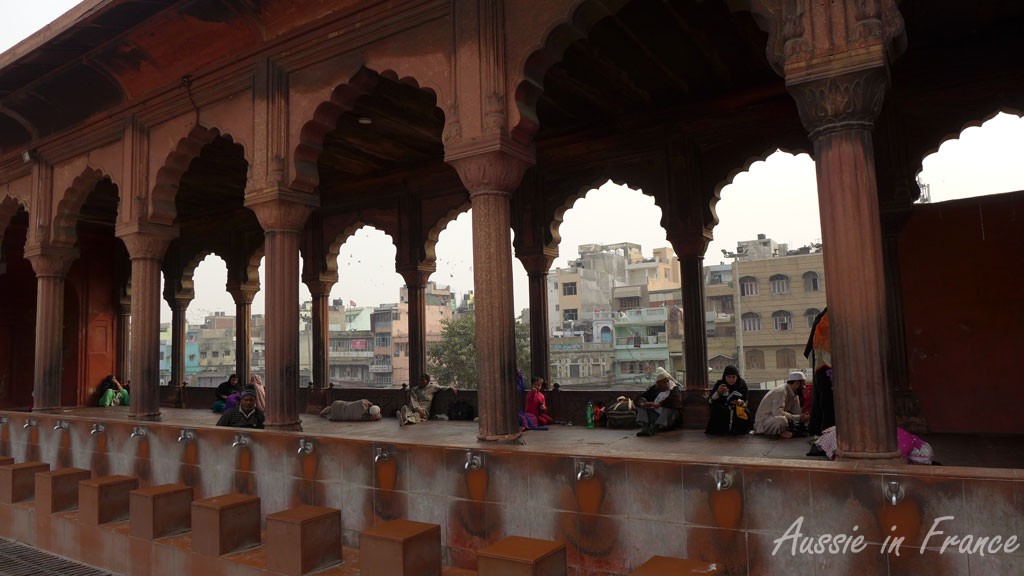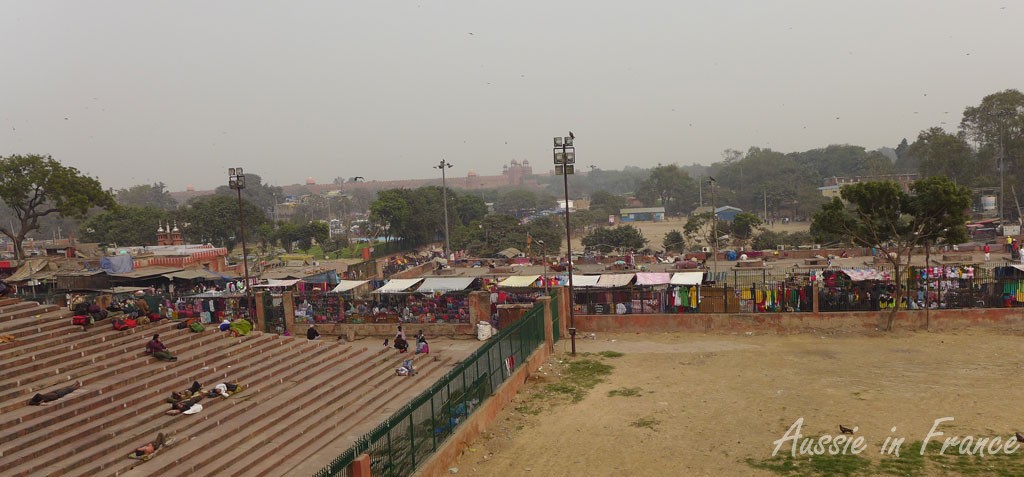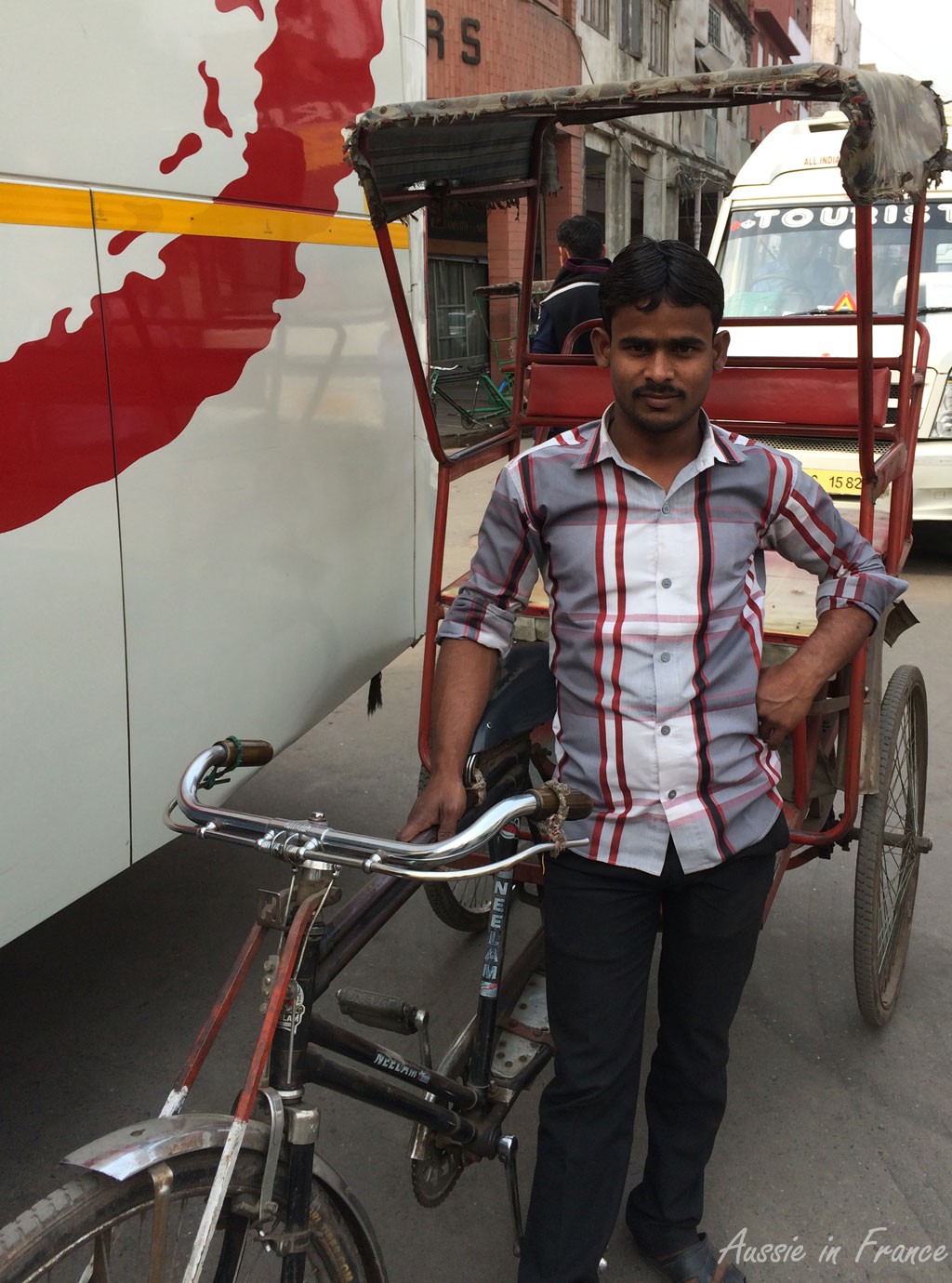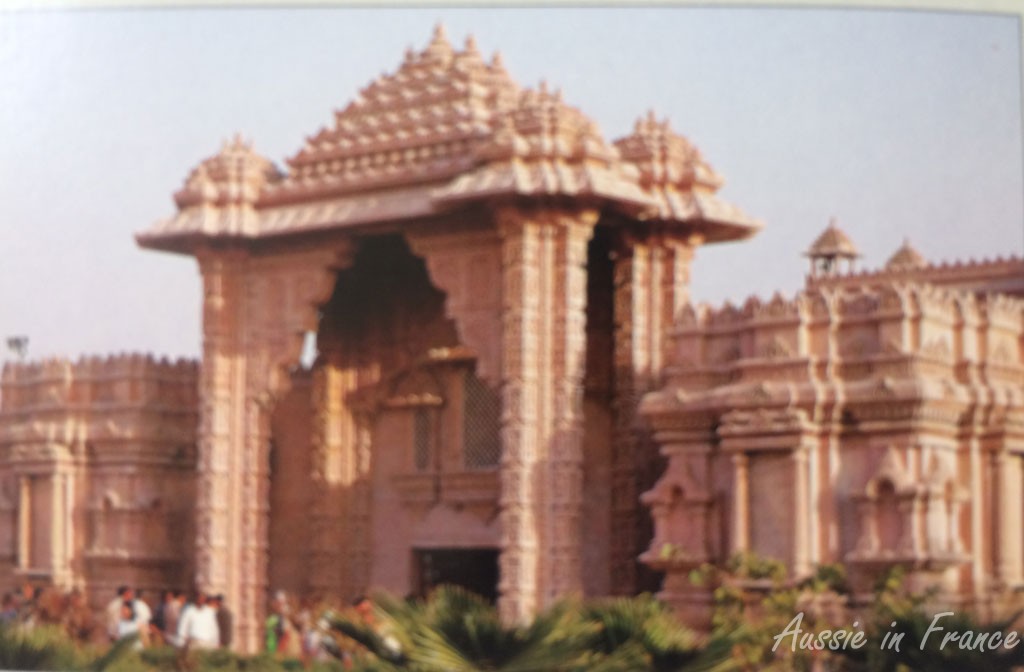Imperia is four hours by car from our destination of Crema in Lombardy so we plan a lunch stop at Voghera along the way. As we go north, the sun disappears and the sky darkens. We arrive in the main piazza just before noon to find everything closed. It’s Monday. Note to self: never try to do anything on a Monday morning in Italy. Voghera has absolutely nothing to redeem it so we make a detour to the Po river to have our picnic (it’s an intermittent fast day). We find ourselves on a bench in the full sun in the middle of nowhere instead.
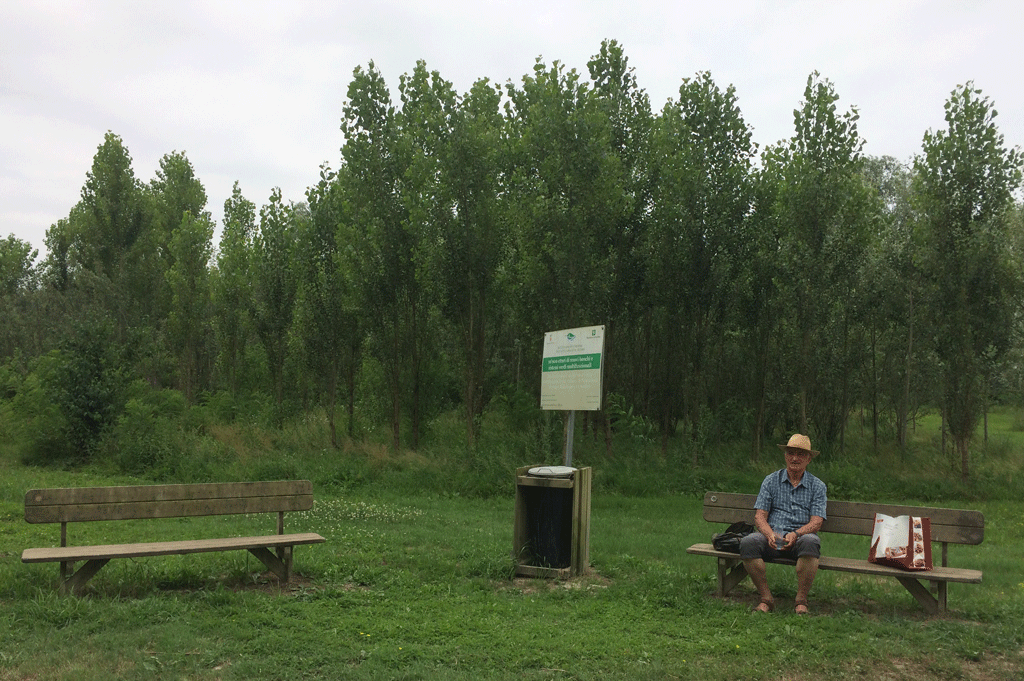
The Tom-Tom then sends us to Crema by a very devious route. Maybe it gets paid for staying on the motorway whenever it can instead of taking a more direct route. We go north to Pavia, famous for its beautiful Carthusian Monastery which we have visited in the past, and almost to Milan before taking a motorway that isn’t on any of our maps. Sigh. We reach Crema too early to check into our romantic B&B (called an agriturismo in Italy) for 3 nights so pick up some more fruit and vegetables and vino bianco while we’re waiting.
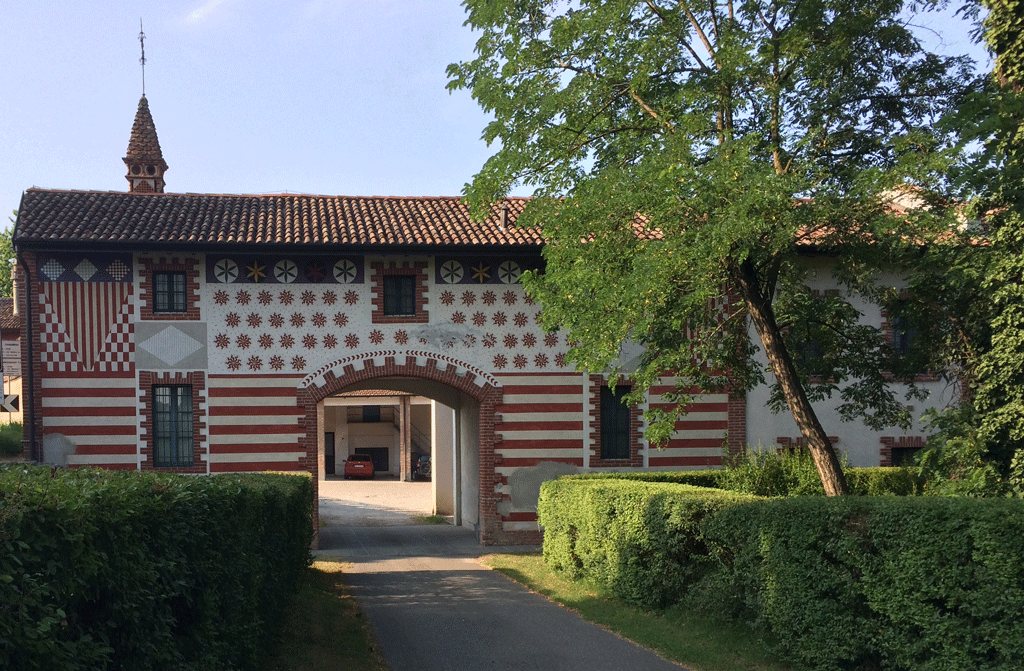
By now, the sun is scorching. We drive through the front building which is very beautiful and find ourselves in the courtyard of a working farm which is a little less charming. I look for an office but can only see a fitness club. The door opens and a very pleasant young lady asks me in Italian to come in. I give my name and she takes us to see the room. It looks like the photos and seems fine so we take it. Breakfast is a tray with everything an Italian might need for breakfast, all in cellophane packets. How anyone can eat those biscotti, I don’t know. There is an espresso machine outside the door.
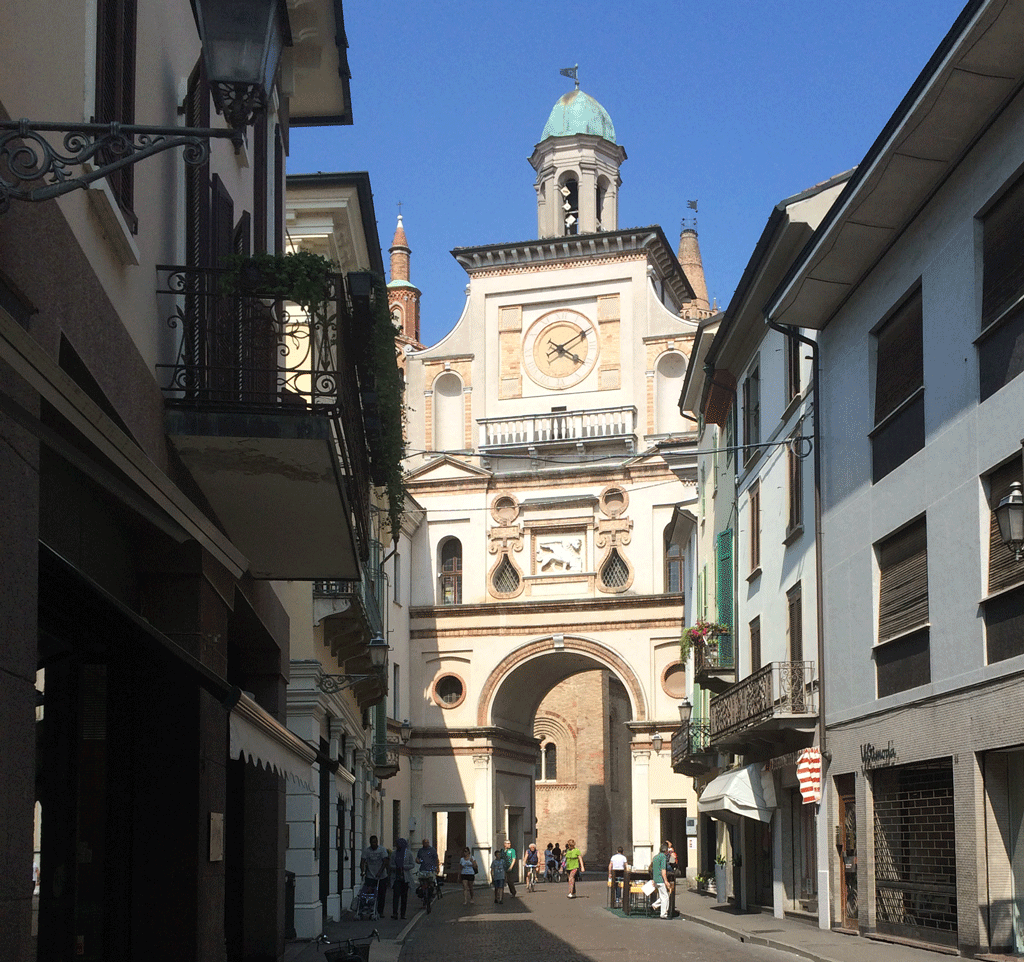
We unpack, have a short rest and then set out to explore the town which is 1 ½ km away. I notice there is a bike path but Jean Michel prefers to drive. He is feeling a little frazzled after all the driving on the Italian motorway which is an experience in itself. We park the car and walk into the pedestrian centre and are completely charmed by the little town of Crema. There are bikes everywhere so we plan to come back and explore further the next day since the tourist office is closed on Mondays.
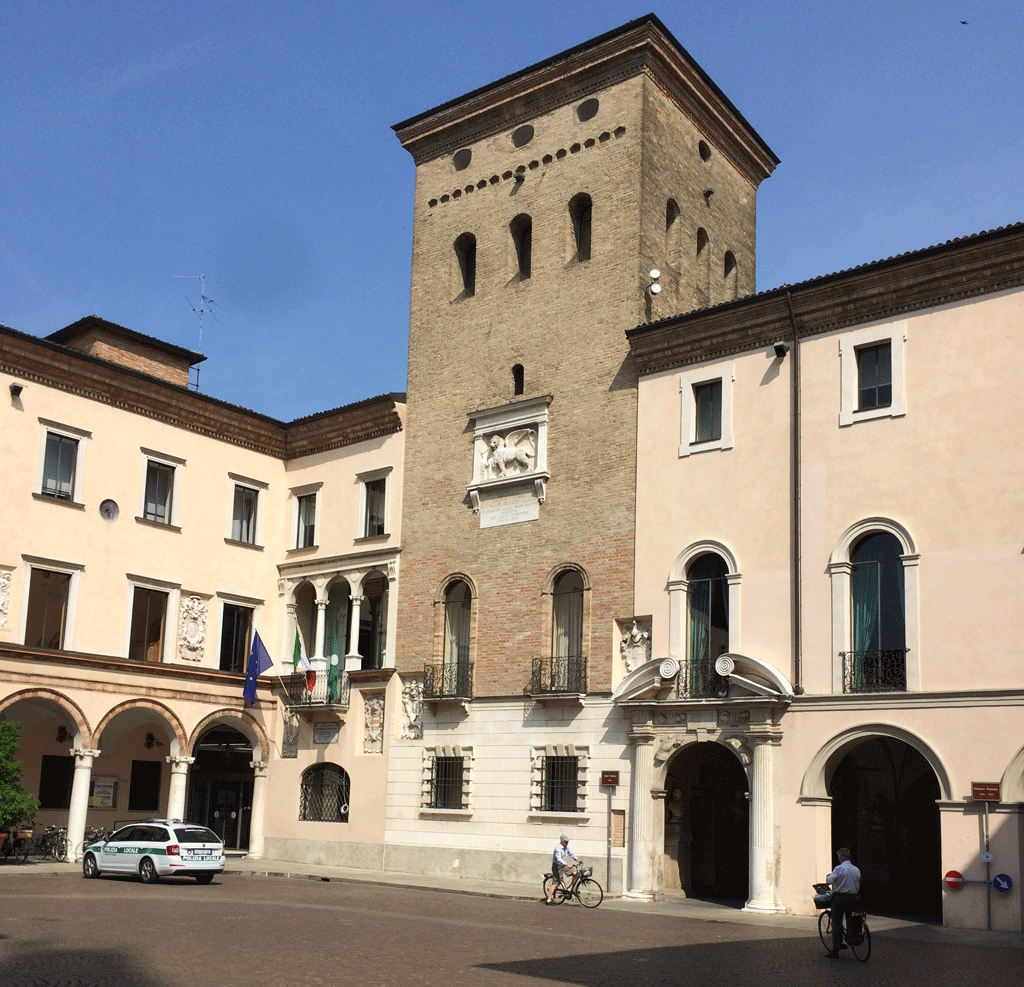
In the meantime, I take a photo of the map of the main sights and we create our own little circuit – the 13/14th century cathedral and Renaissance square with its Guelfo Tower bearing the lion of San Marco, witness to Venetian domination of the town from 1449 to 1794 and the Torrazzo originally built for defence purposes and the remains of the city walls. We see a very large covered market on the way which I can’t imagine could be filled every morning.
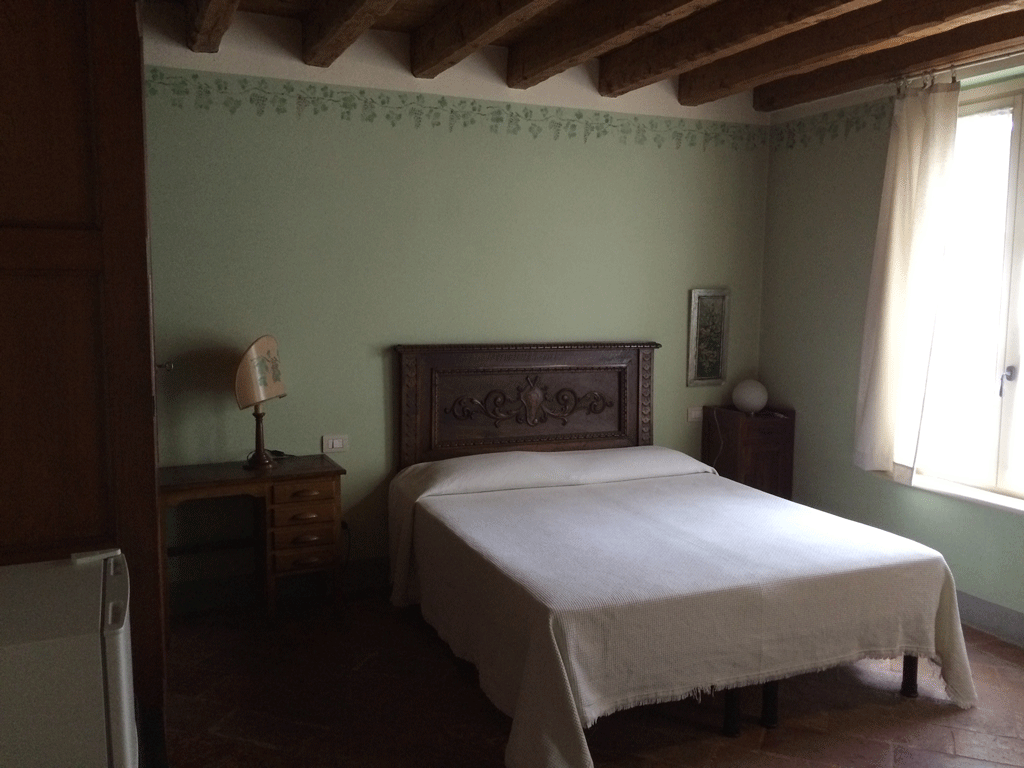
Back in our room we discover its defects. The table is too high to eat at comfortably and there is very little light in the room, either natural or artificial. One of the chairs is very uncomfortable and the other is too low for the desk/bedside table. There are no extra pillows. The other bedside table is too high to use from the bed. The bathroom is fine, thank goodness, and the wifi works. We can hear the TV above us. There are no common areas we can use. We decide we’ll only stay two nights so cancel the third one with booking.com at no extra cost.
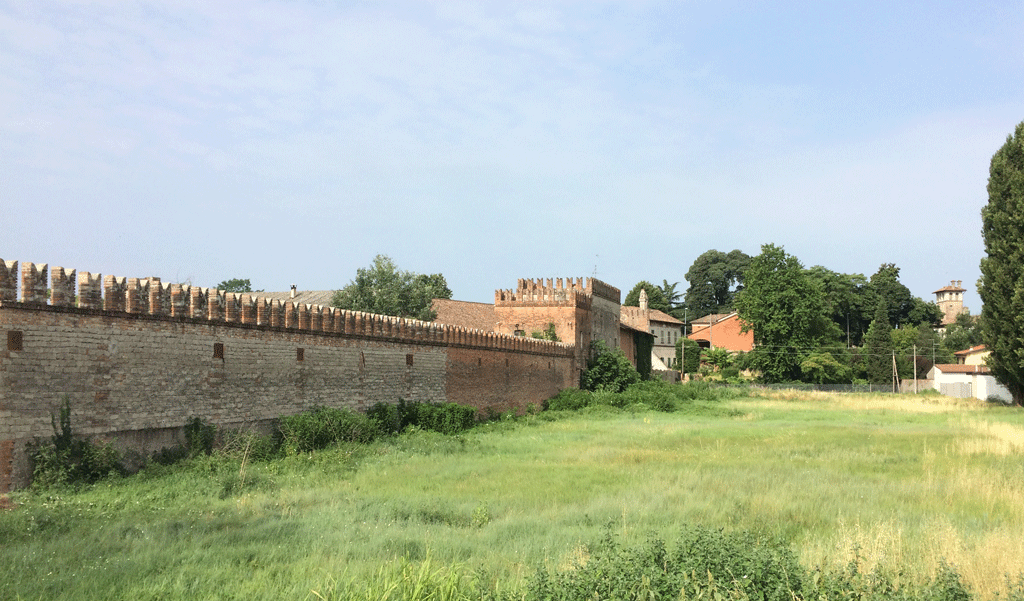
After a decent sleep, we make our coffee with a few fits and starts and begin taking our bikes off the car. A lady comes out of the Fitness Club and asks if everything is fine. She seems as though she might be in charge of the show. She offers to give us a map of Crema showing the bike paths (how come we weren’t given one yesterday, I wonder) but in the end she can’t find it. She does have a visitor’s map of Crema though. She confirms that we are staying two nights. All this in Italian.
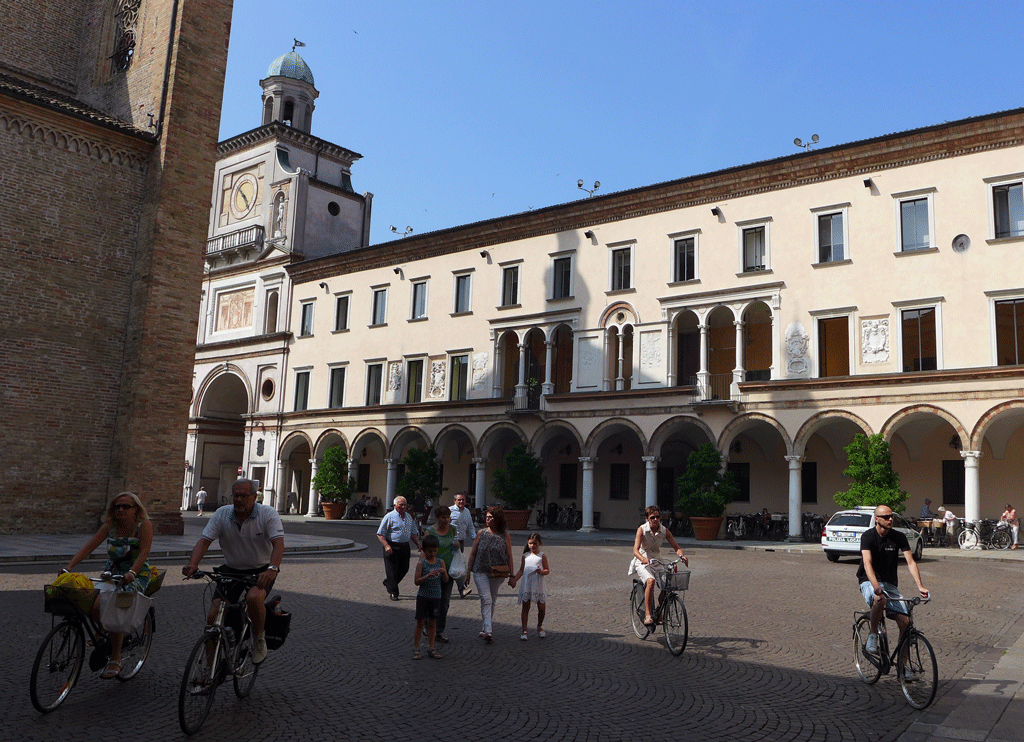
We ride into the town along the bike path and join all the other cyclists in the pedestrian area. Many are older people (like ourselves) but there doesn’t seem to be a fixed rule about what side of the road to use. You need to keep your wits about you. We start with the tourist office and get some other maps and brochures. I find a series of 5 cycling maps that seem to cover the area we will be visiting.
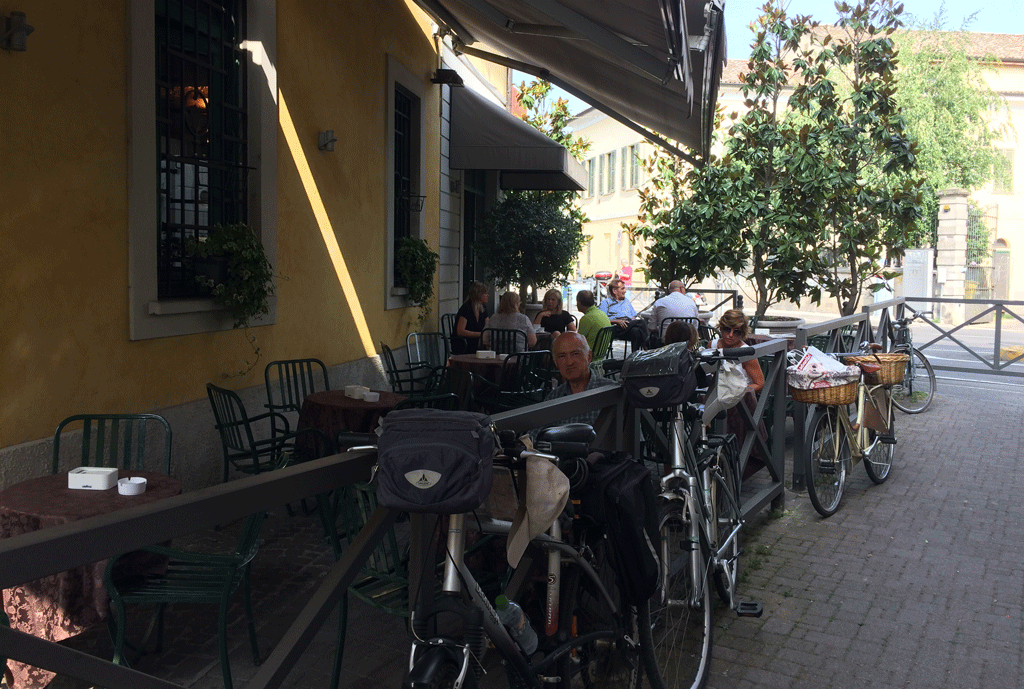
We go to a café for breakfast with a shady terrace that we noticed the day before. Jean Michel is hungry so chooses several pastries (I’m not that keen on Italian pastries so only choose a couple of small ones). We order fresh orange juice and cappuccino. The waiter congratulates me on my excellent Italian which is surprising because I mostly just string together the words I know without bothering about verbs.
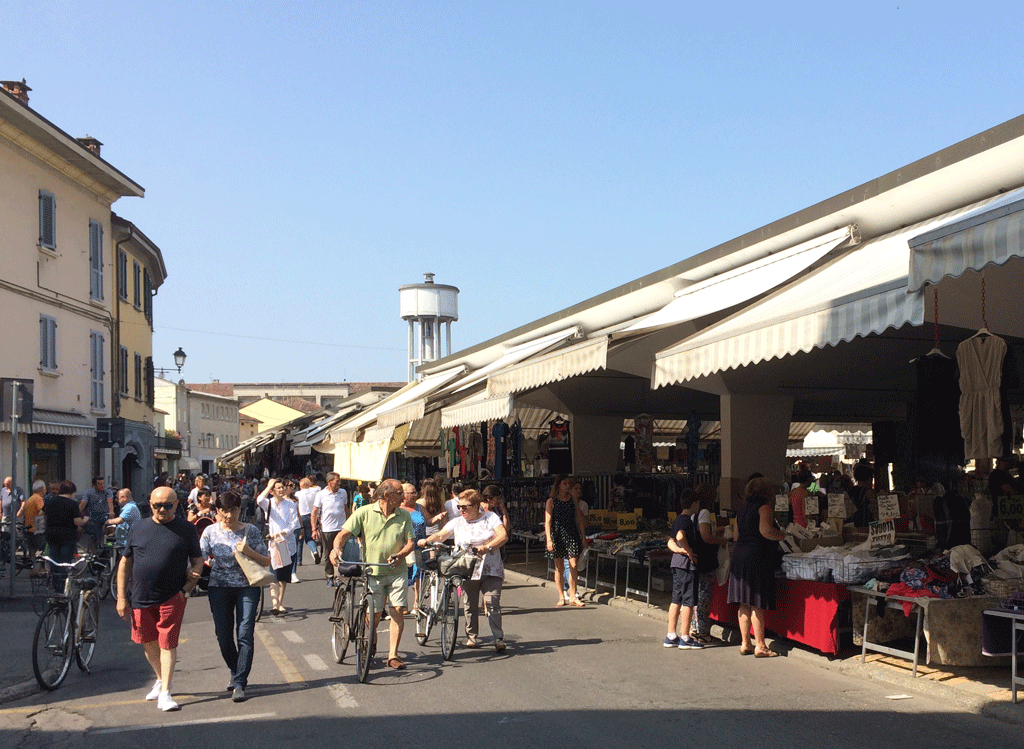
During breakfast, we examine the maps and discover that only the first one in my series of five is useful. We have another one that gives you a general idea of where to go but needs to be backed up by good signage. Our destination is Soncino, about 20 km from Crema but first we are going to visit the basilica of Santa Maria delle Croce on the outskirts of Crema.
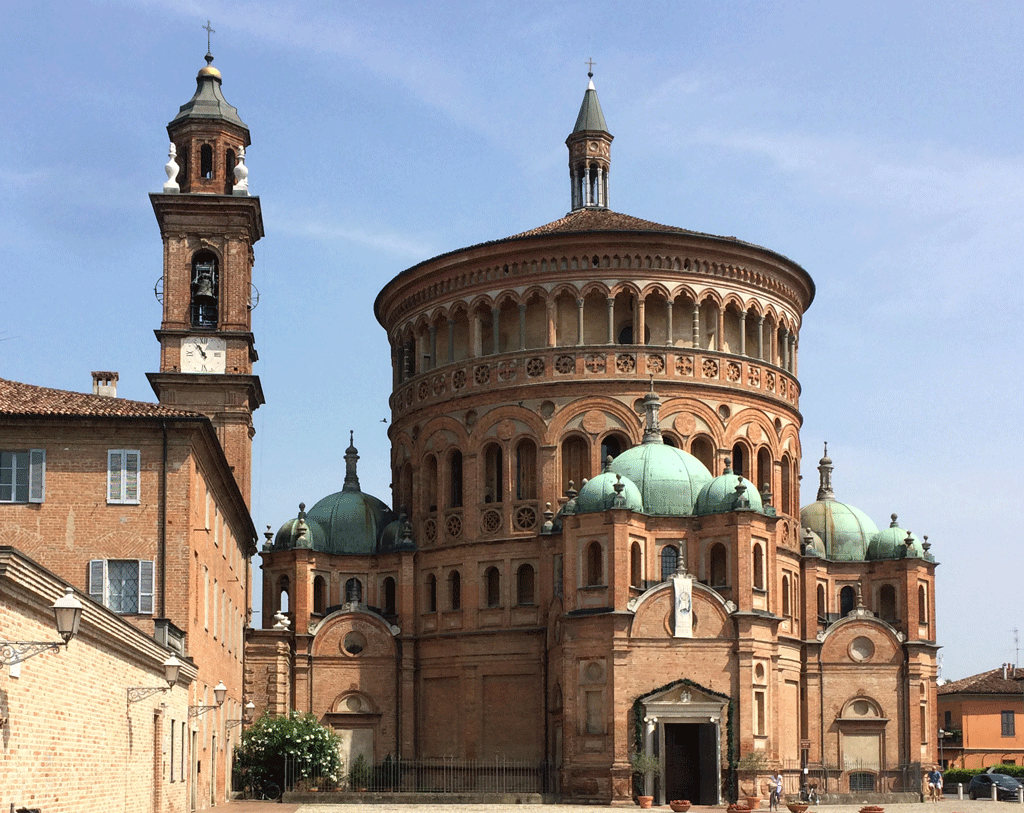
The building, representative of the Lombard Renaissance, is very impressive but what intrigues me most is a painting inside the crypt. I later learn that according to local legend, on 13 February 1489, a young woman from a well-to-do family in Crema called Caterina degli Uberti married Bartolomeo Pederbelli also known as Contaglio, a convicted felon from Bergamo and long-time resident of Crema.
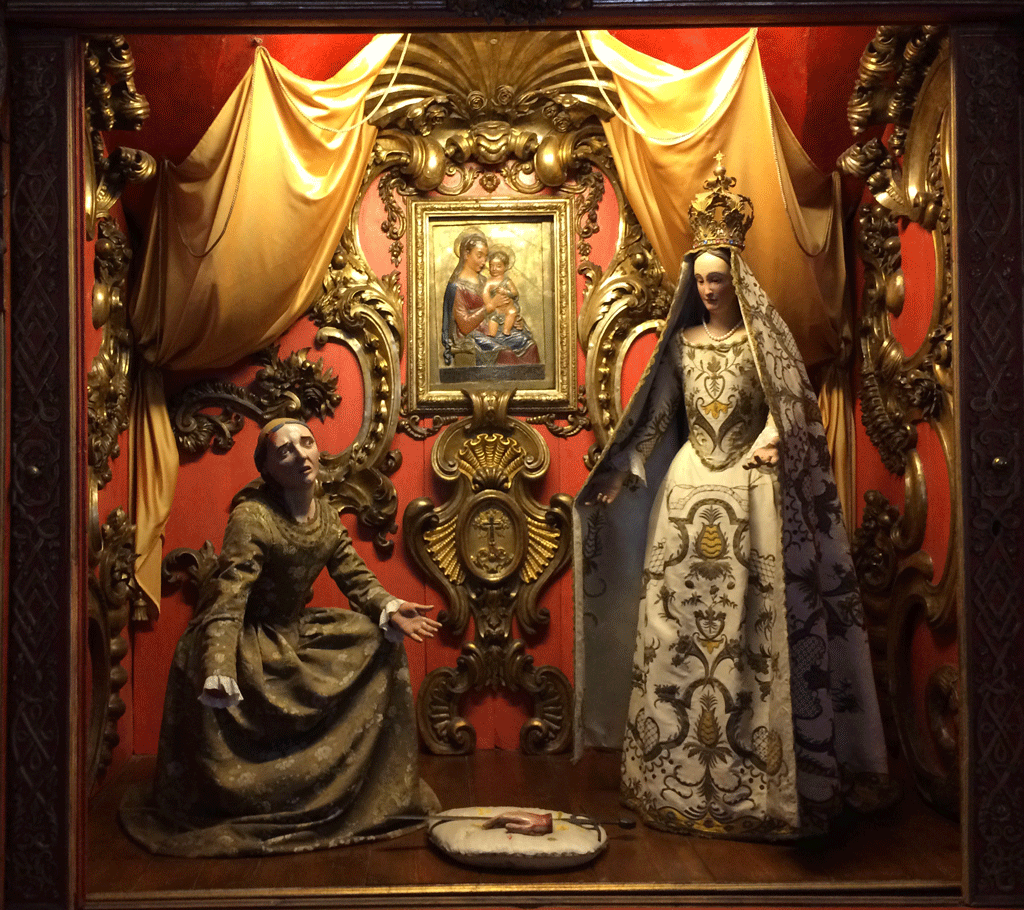
There were many quarrels between him and her family over payment of the dowry. On the pretext of taking her to see his family in Bergamo, he took her into a local wood where he cut off her right hand and part of her arm on 3 April 1490 before punching (and maybe stabbing) her in the back and leaving her for dead. She prayed to the Virgin Mary who is said to have taken her to a nearby farmhouse. She was then moved inside the city walls where she died, after receiving the last rites and pardoning her husband. You would wonder why. A wooden cross was placed in the woods where the murder took place but a series of miracles turned the site into a holy place and a sanctuary was built there and later became a basilica.
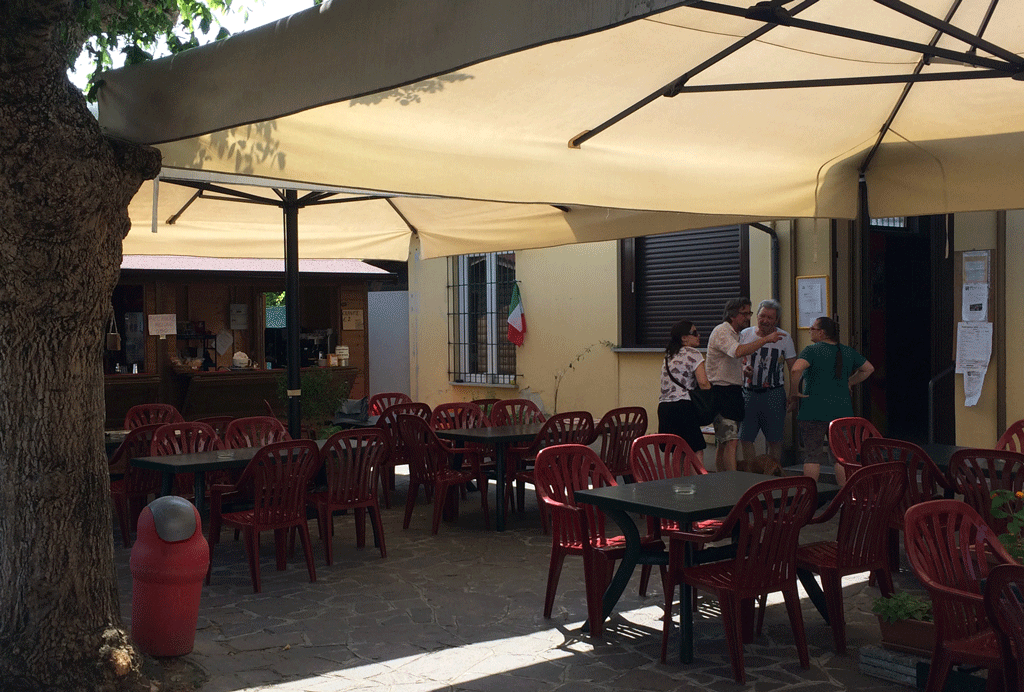
So far, so good. I mean the cycling of course. Now it’s time to find the bike path along the canal to Ginevolta then up to Soncino. It’s already 11.15 am even though we left the B&B at 9.15. We stop at a well-hidden café to ask directions. An over-enthusiastic puppy jumps all over us and we each have a plastic cup of cold melon pieces for the incredible price of 50 cents each. No one has ever heard of the bike path but they direct us to the canal.
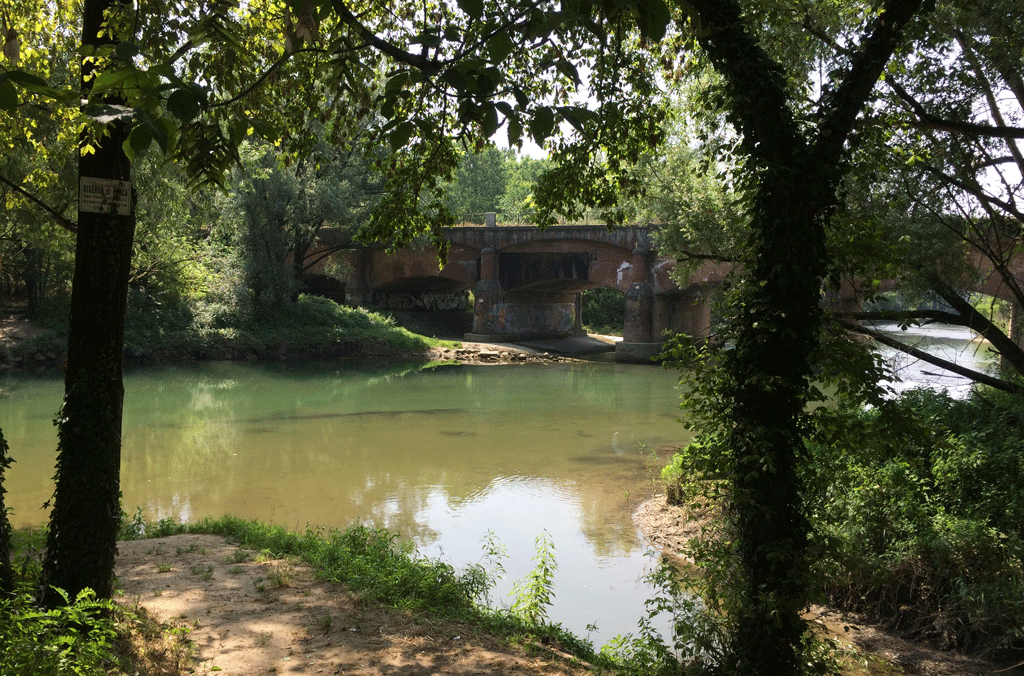
We eventually find it but Jean Michel is not satisfied we are going in the right direction so I ask a passing fisherman. He tells us (in Italian of course) that we are on the wrong side of the fiume (it doesn’t sound like a word that could mean river does it?) and that we have to go back over the train tracks (Toot! Toot!), cross the bridge and turn left onto the tow-path. Which we do. The path is quite narrow and bumpy but improves after a while.
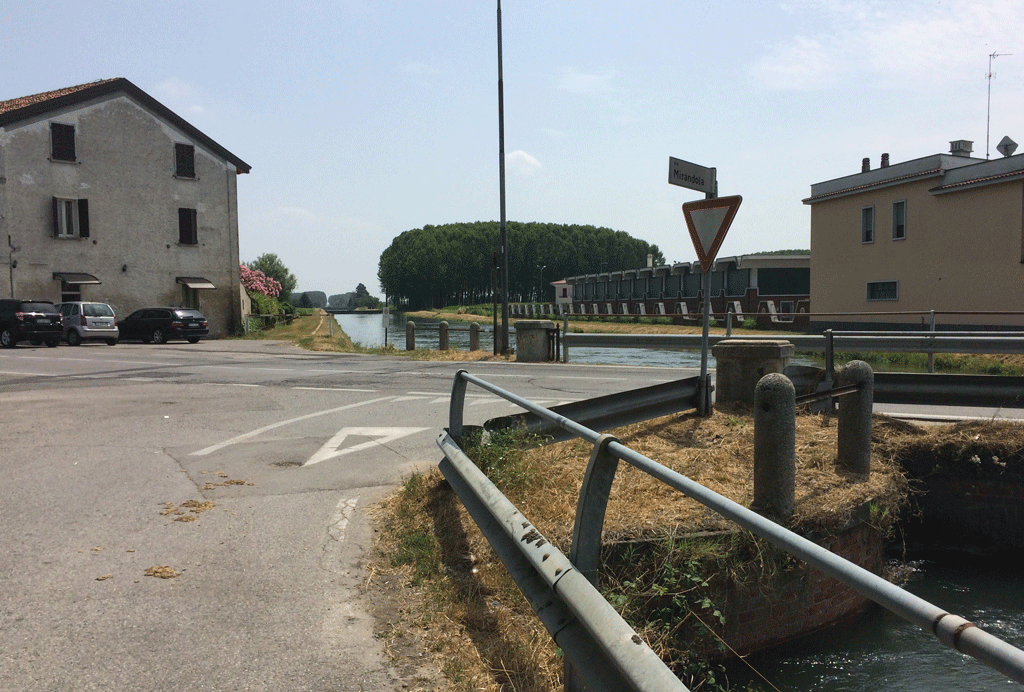
Unfortunately the problem is with the signage or lack thereof. We see a tiny, faded sign that tells us to cross the canal, but gives no indications after that. We follow a small road until I see a sign that says “south canal”. Then I see a real bike path so we take it and end up in Offanengo which is not supposed to be on our route.
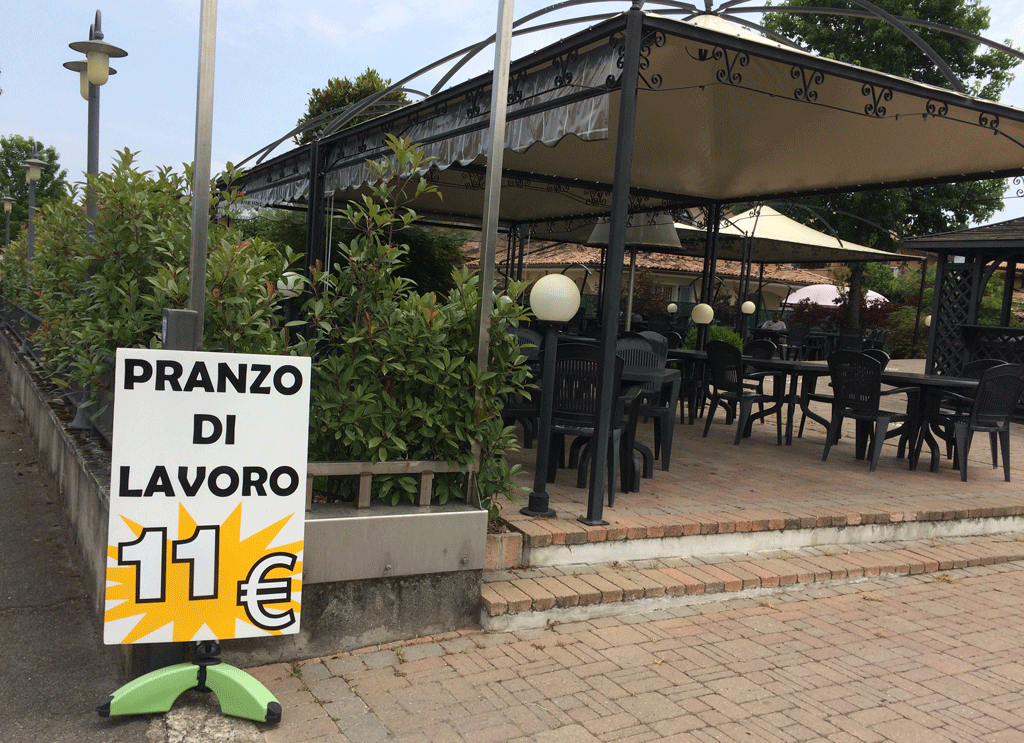
Jean Michel says we should find a place for lunch and check the directions afterwards. By now it’s 36°C. I have just seen a sign saying “pranzo di lavoro €11” which I assume means “workers’ lunch”, equivalent to the French “repas d’ouvrier” so we lock up our bikes and go in (it’s too hot to be sitting outside). A nice young man takes us to a table and gives us the menu. We can have a complete menu including a vegetable buffet with wine and coffee or just one or two courses for the same price which seems a bit strange. The waiter comes back and explains the menu to us (but doesn’t explain why all the prices are the same).
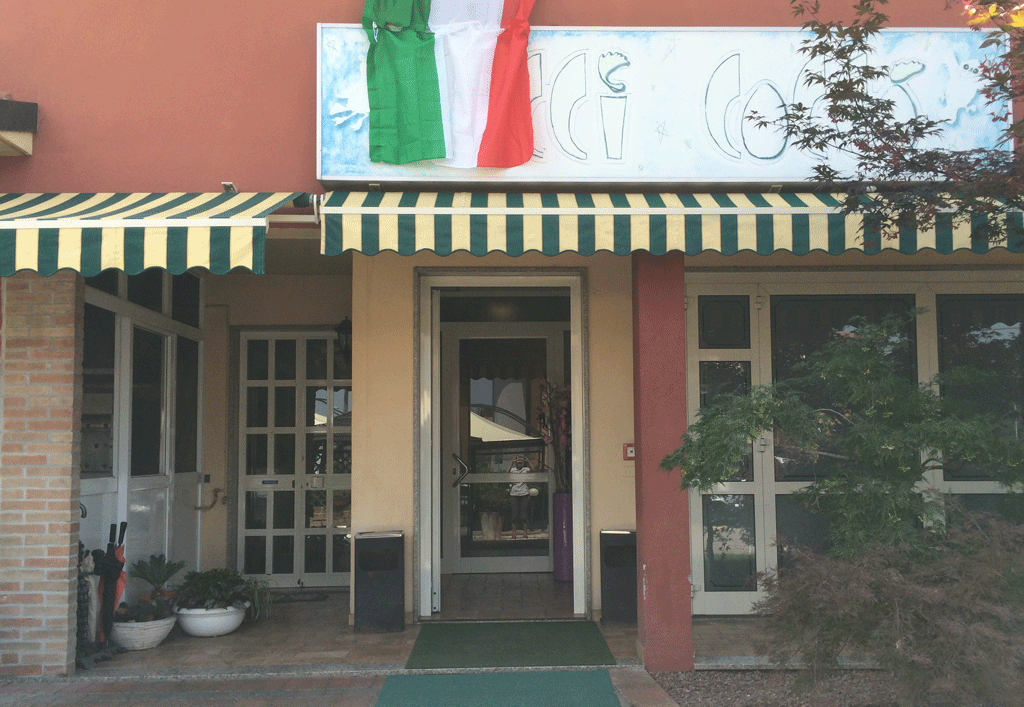
We choose different dishes at his suggestion with a carafe of frizzante and go and get our buffet. None of the food is outstanding but all seems to be fresh and it’s certainly filling. The tables around us fill and empty regularly. It’s obviously a local favourite. We’re pleased with the experience.
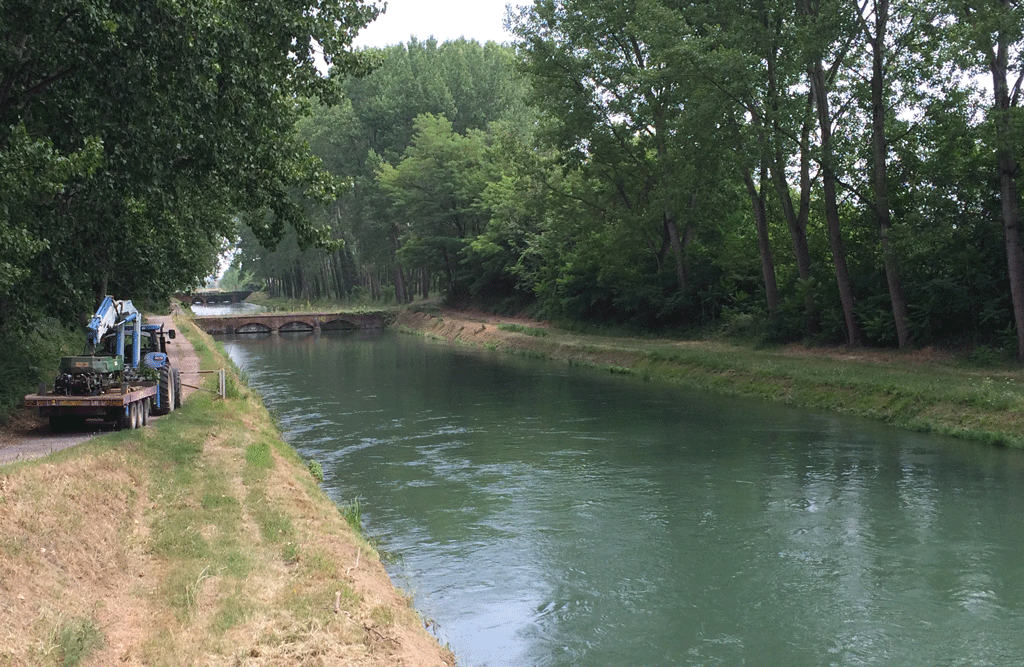
The sun is still shining brightly when we walk out of the air-conditioned restaurant. Jean Michel examines the maps again and we push on to Genivolta. After a couple of wrong turns, we seem to be going in the right direction (not that we have any proof – there are no signs). We come across the canal again just as a very large machine turns in front of us. A man on foot tells us to get out the way because it’s dangerous. It appears to be a canal-cleaning machine.
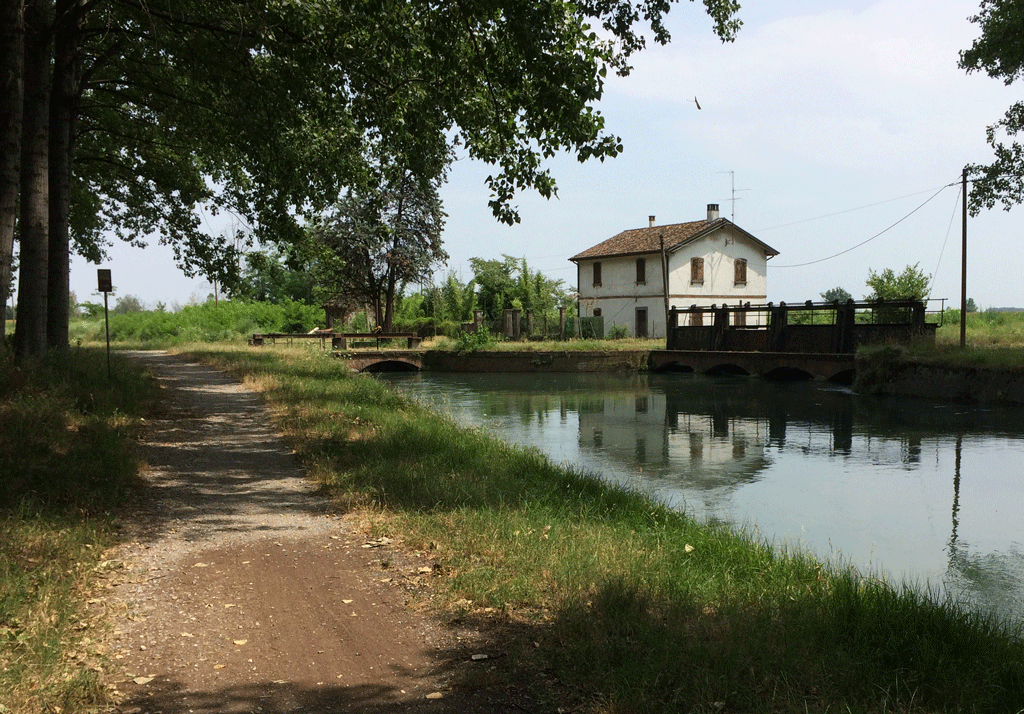
We start to follow it along the tow-path so the man tells it to stop so we can get past. Fortunately, he wheels my bike for me as I think I might have ended up otherwise in another small canal on the other side. We are happy with our canal path, though, even if it isn’t very scenic. What we do see everywhere are signs of the agricultural wealth of the Po Valley.
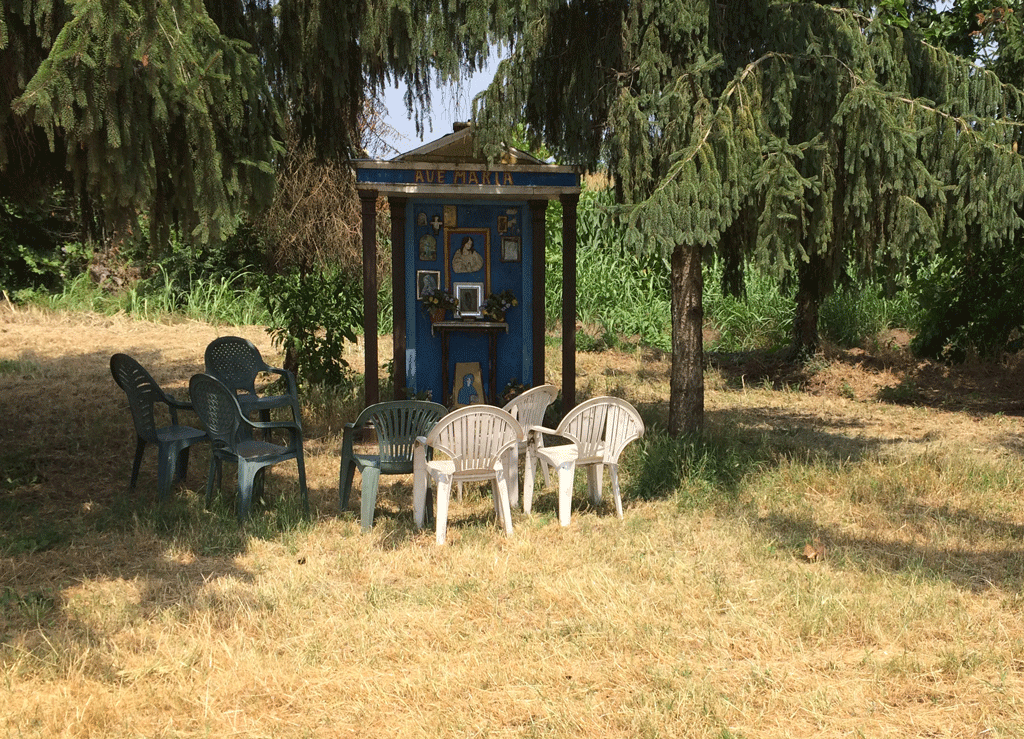
Along the way, I see a small group of plastic garden chairs in front of an altar with Ave Maria written on it. Italy is still very religious.
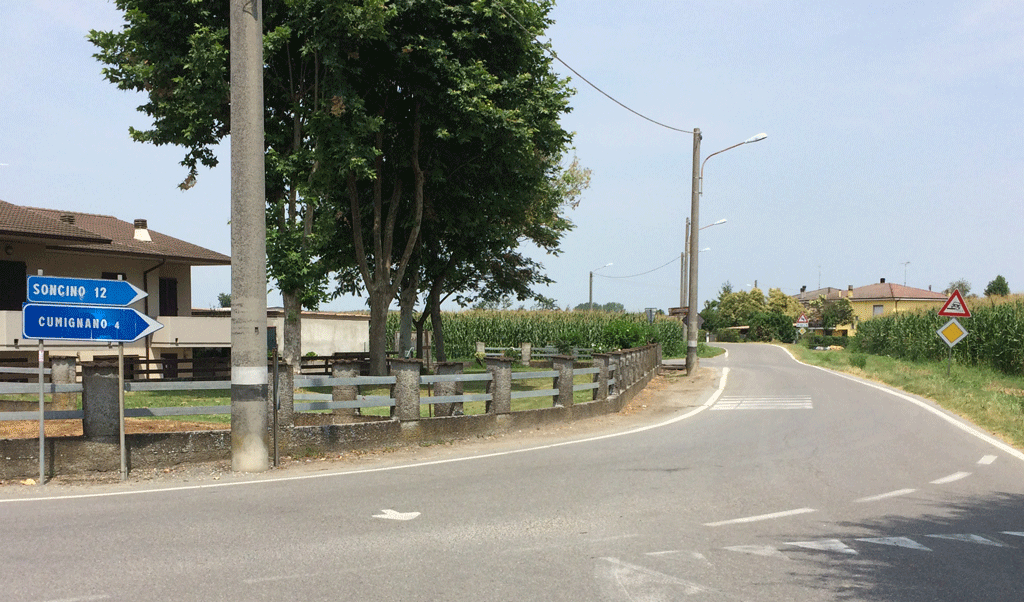
We see a sign that sends us across the canal and onto a bitumen road. Once again we have no idea where we are going. We finally come to an intersection with a sign saying “Soncino 12”. We still don’t know where we are so ride into the town and discover we are in Trigolo. There is a sign saying “Crema 11”. I can’t believe it! We’ve been riding for hours and are still only 11 k from Crema. We follow the road to Soncino. It’s a beautiful little winding road with a good bitumen surface and no cars.
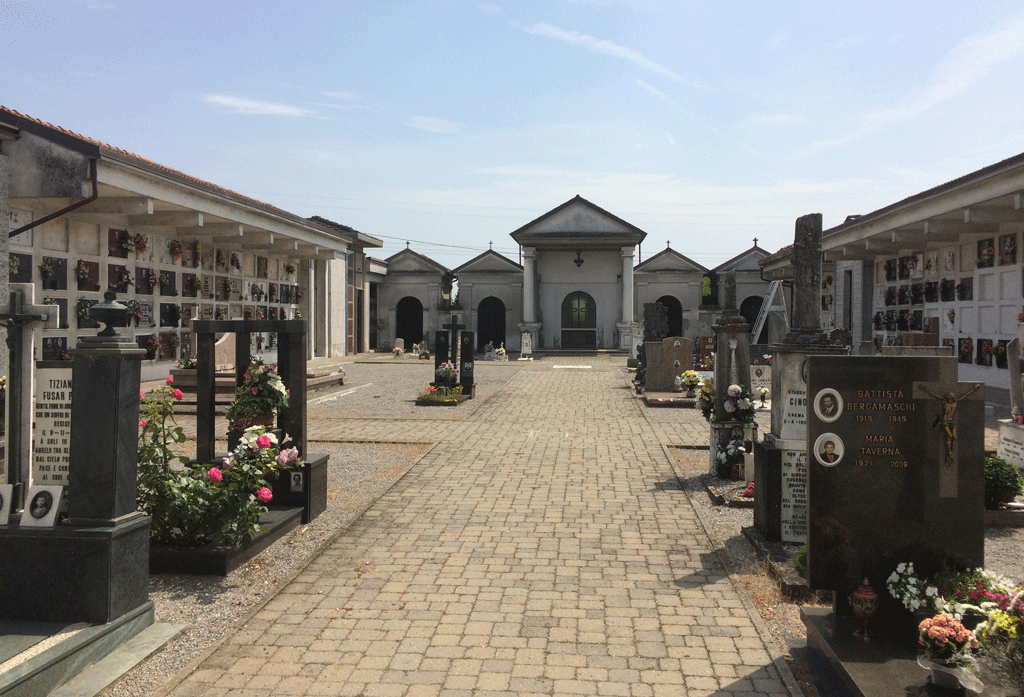
It takes us through Cumignano sul Naviglio with its typical cemetery.
We then take a large, new, uninteresting road through an industrial park that takes us to Soncino. We arrive very hot and weary and very disappointed. It seems a rather miserable result after riding for 40 km! Jean Michel finds a café with gelato artigianale and orders some Coca Zero to go with it. We’re hot and thirsty! The ice cream has the strangest flavours – Kinder, cheesecake, etc. – so I choose stracciatella, bacio and fiore di latte as being the most innocuous. The cans of coke are warm so I take them back. They only have one small bottle of Coca Zero that is cold so we share that instead.
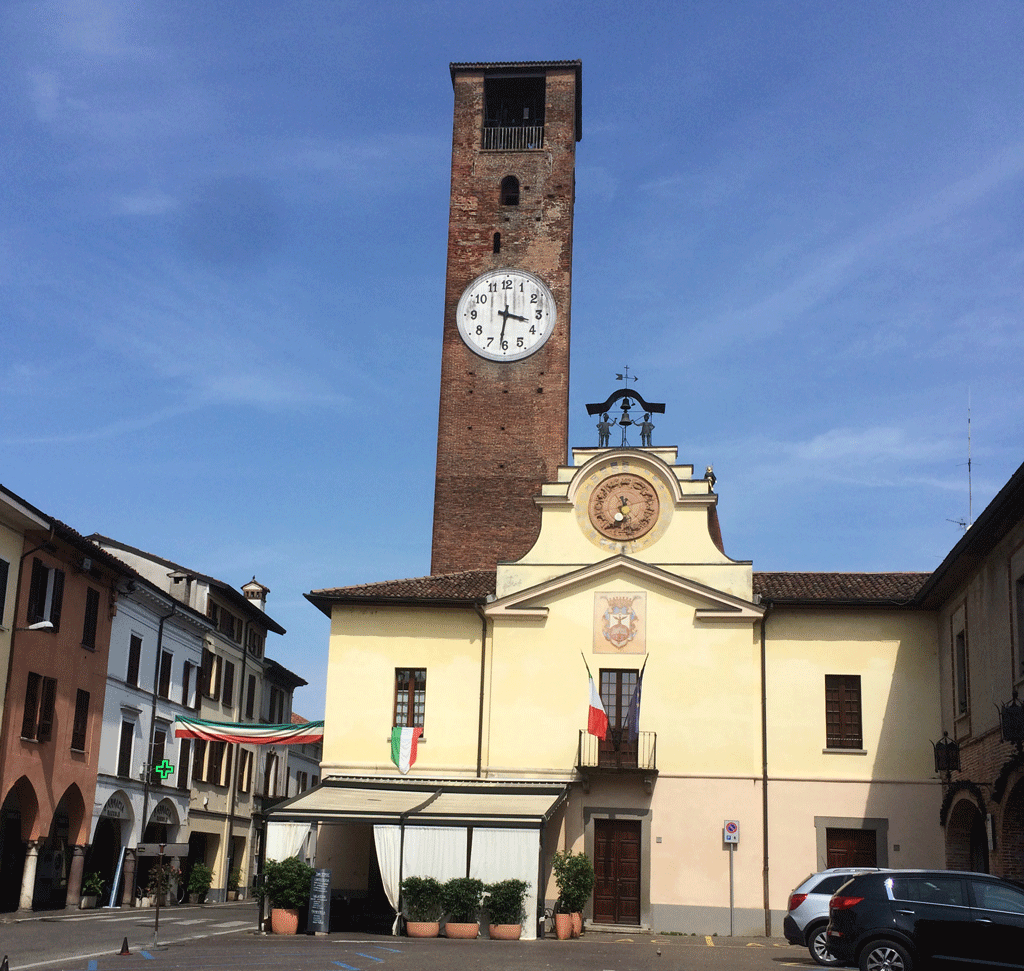
After examining the tourist brochure we picked up in Crema, we discover there are several churches with frescoes as well as a castle. Maybe it was worth coming after all! We start with the closest, the parish church of Pieve Santa Maria Assunta, a large red brick building erected in the 12th and 13th centuries with stunning frescoes and a deep blue dome.
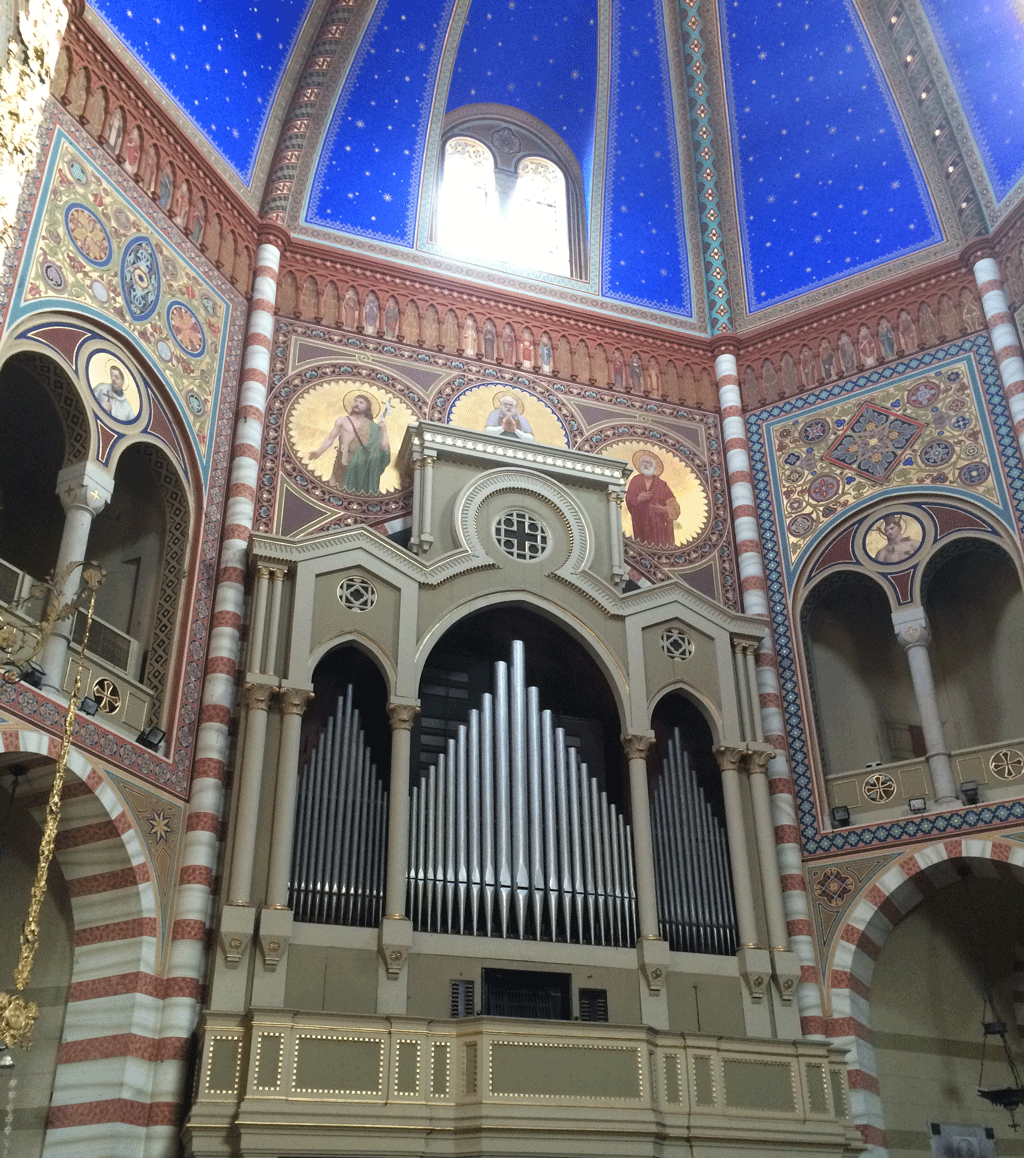
Just round the corner, behind a very ordinary, unrestored 12th century façade are more beautiful frescoes, a sculpted wooden chancel, a descent from the cross and a cloister that leads back to Santa Maria Assunta.
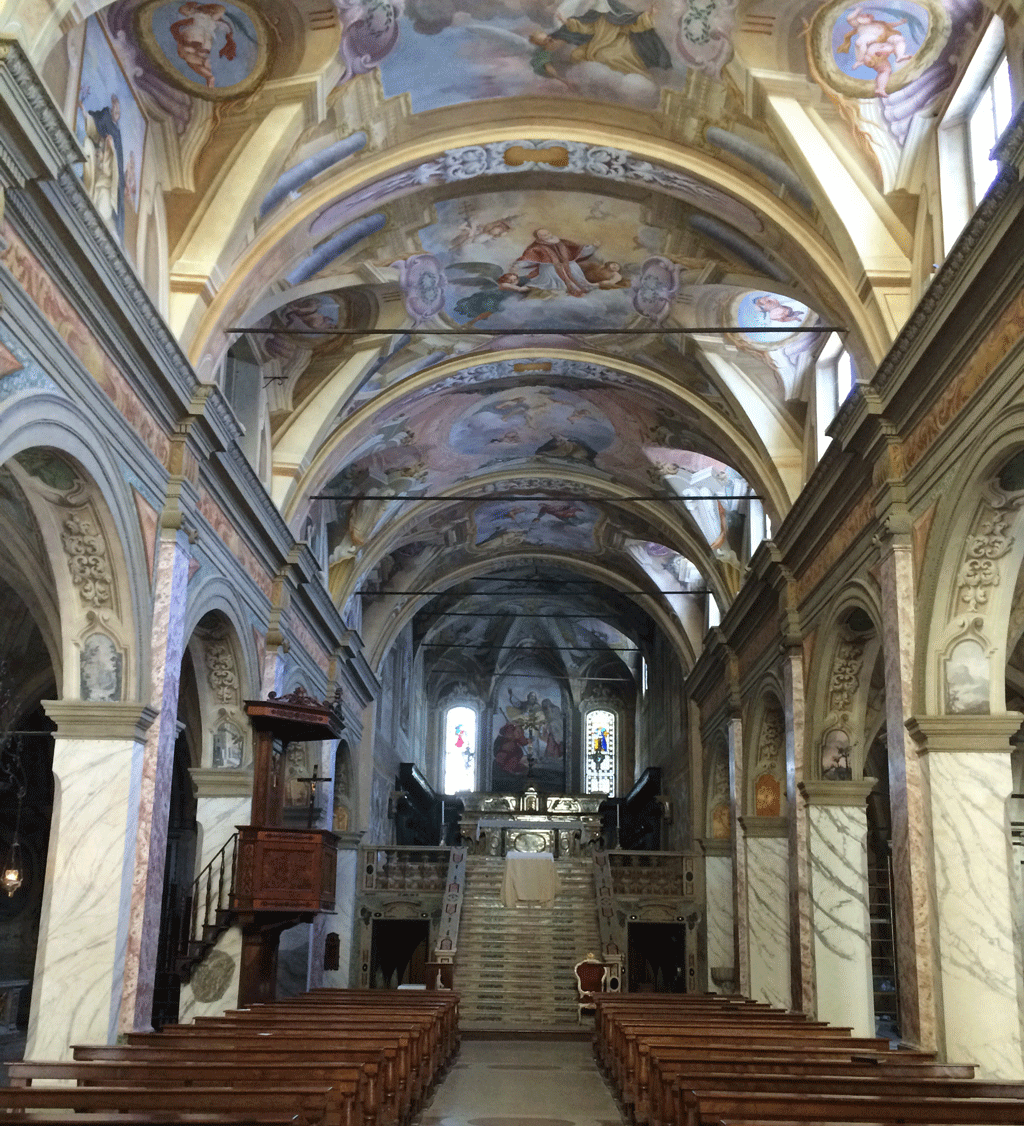
We continue down the street and turn to the right and up a path to the castle. What a pity we arrived through the industrial estate. We would have had a very different initial view of the town! The present castle, the only one built entirely by the Sforza family, dates back to the second half of the 15th century. The extensive fortifications are 13th century.
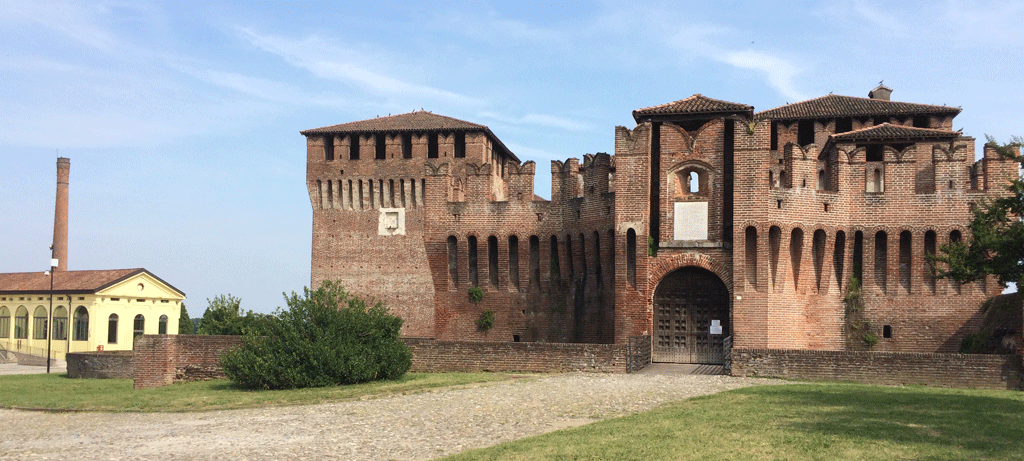
To the left is a former spinning mill containing a silk museum, open on Sundays only.
Down the hill to the right is a somewhat dilapidated water mill from which there is an excellent view of the castle.
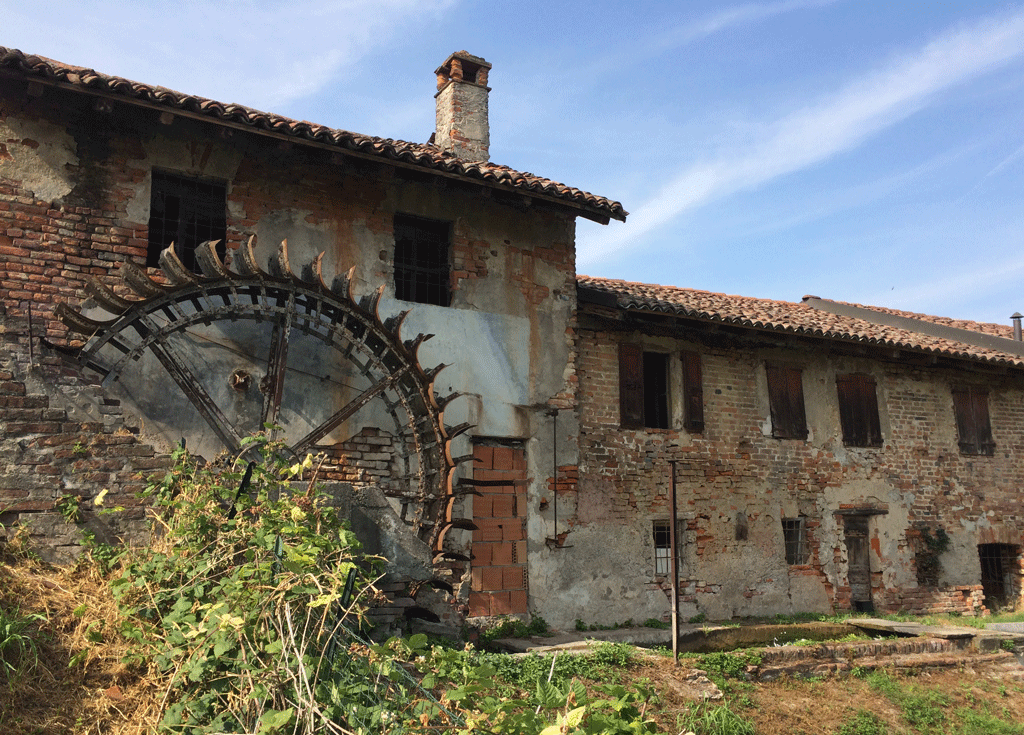
Our last stop is another church just outside the town, Santa Maria delle Grazie, which contains more frescoes and a most unusual modern wooden sculpture of the assumption. We leave just as a busload of teenage boys sing their way into the parking lot!
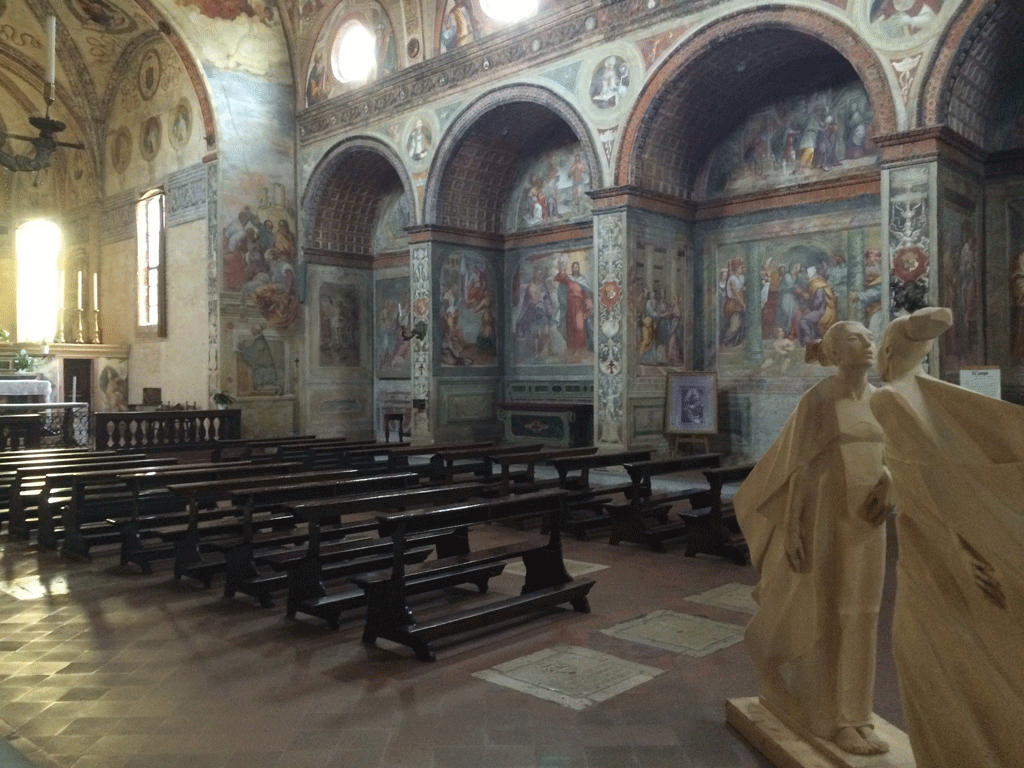
We have now clocked up 45 km and are 13 km from Crema via the main road. Jean Michel tries to find some small roads but with little success. They seem to have disappeared. The cars and trucks whizz past at 90 kph (it’s 5.30 pm, obviously knock-off time) with only a white line between them and us. After 5 km, we come to Ticengo and take a left turn. We then follow a small, perfect road winding through relatively pretty countryside. We eventually come to Offanengo and take the bike path past our lunchtime restaurant and into Crema. We do not try to find the canal route again.
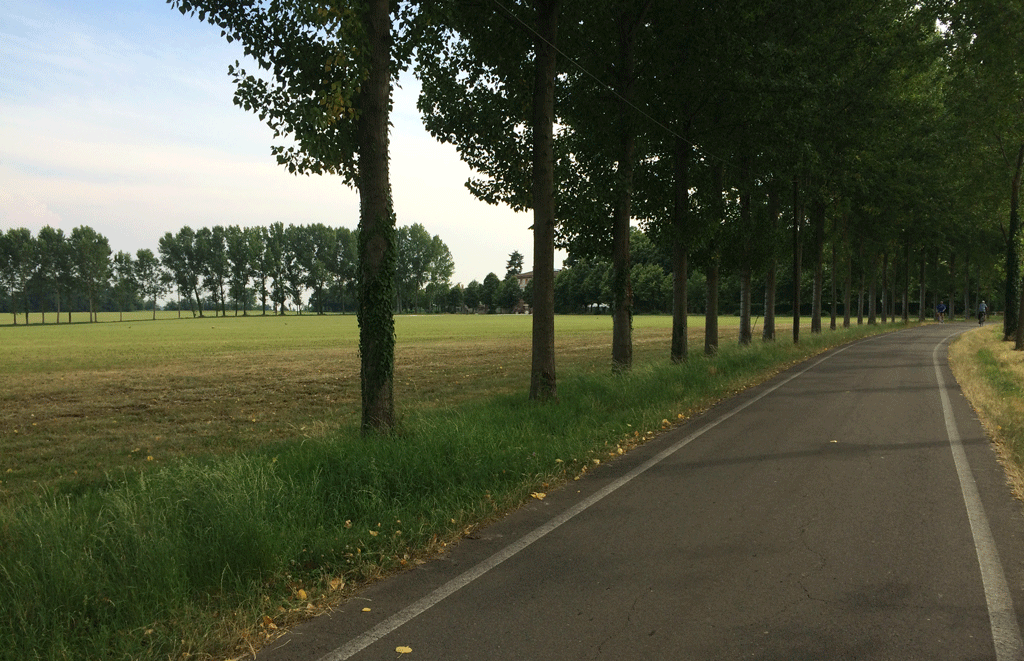
At 7 pm, after riding a total of 5 hours and covering 63 K, we are sitting in a café next to the cathedral in Crema, with a cold glass of white and Italian aperitivo nibbles in front of us. Although we loved visiting Soncino, the stress from the lack of signposting for cyclists was exhausting. NEVER AGAIN!
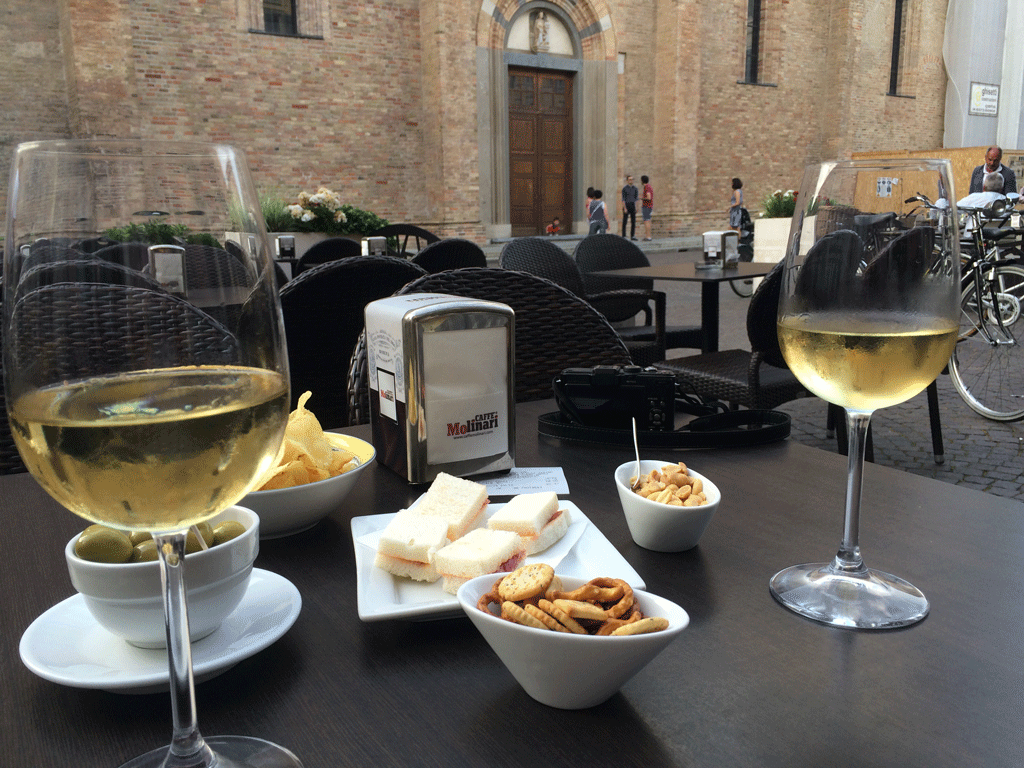
Tomorrow we are off to Innsbruck in Austria to a hotel we’ve been to before.




